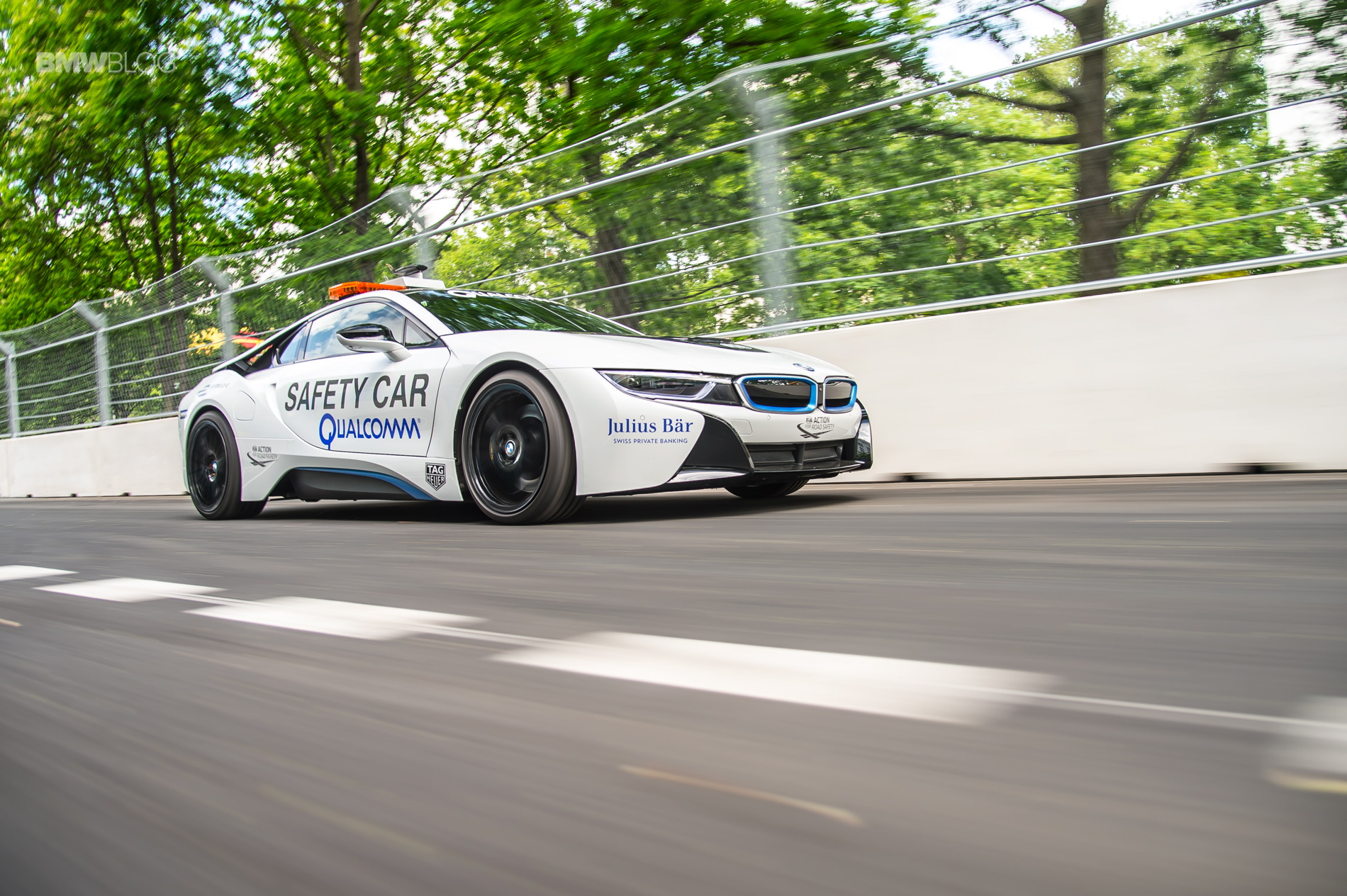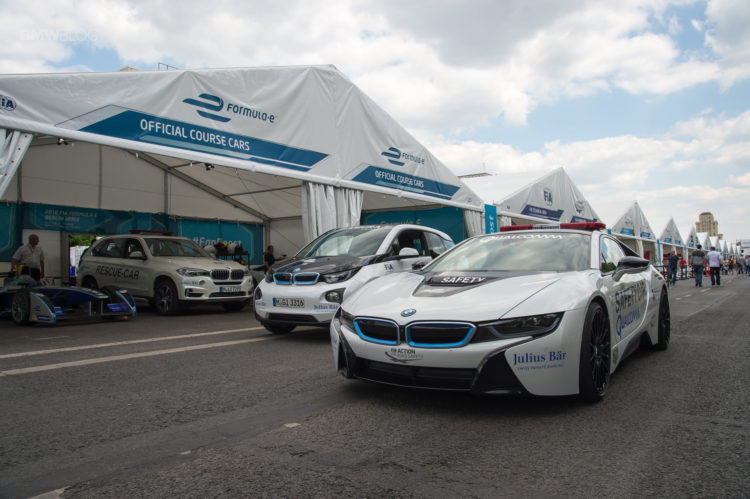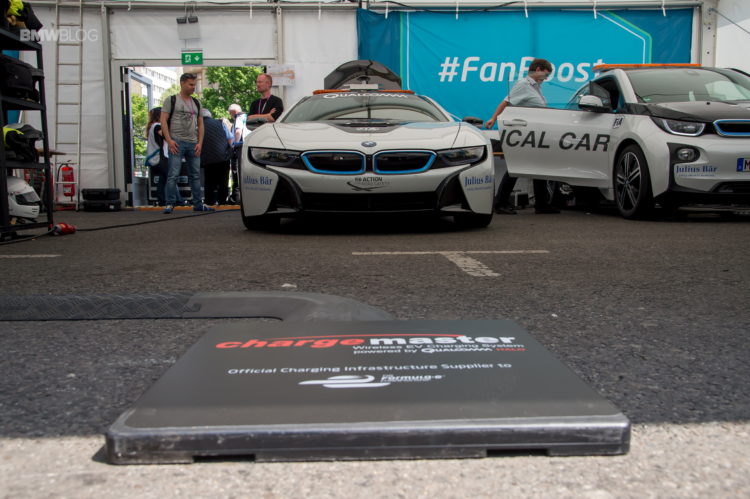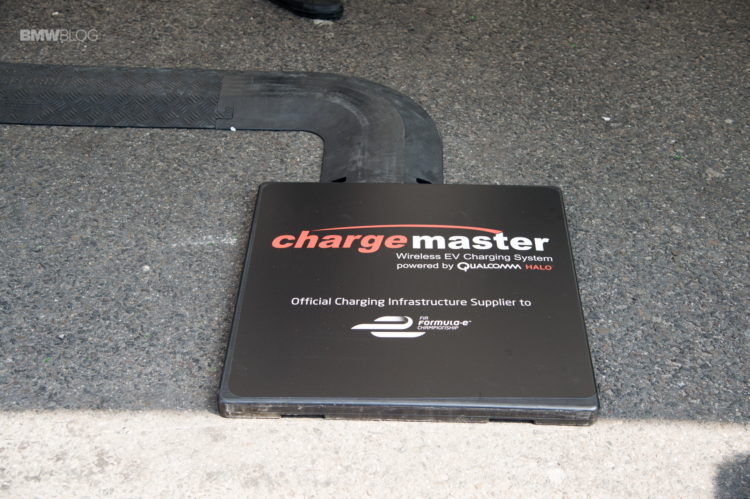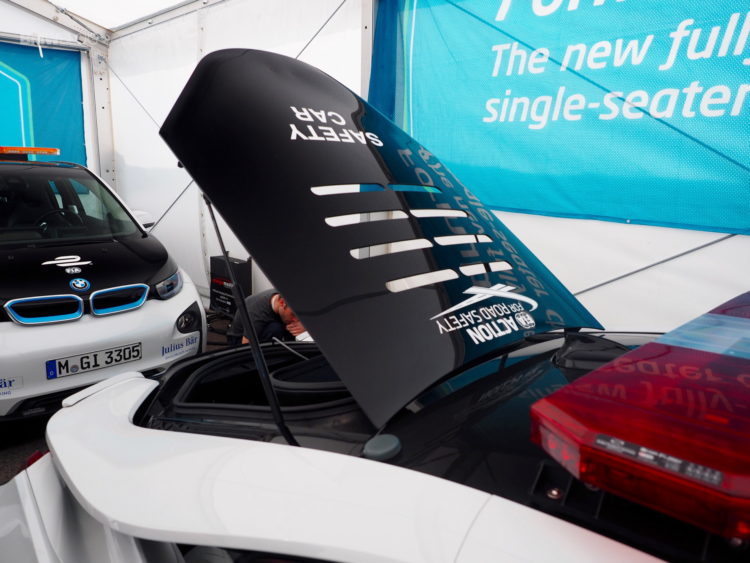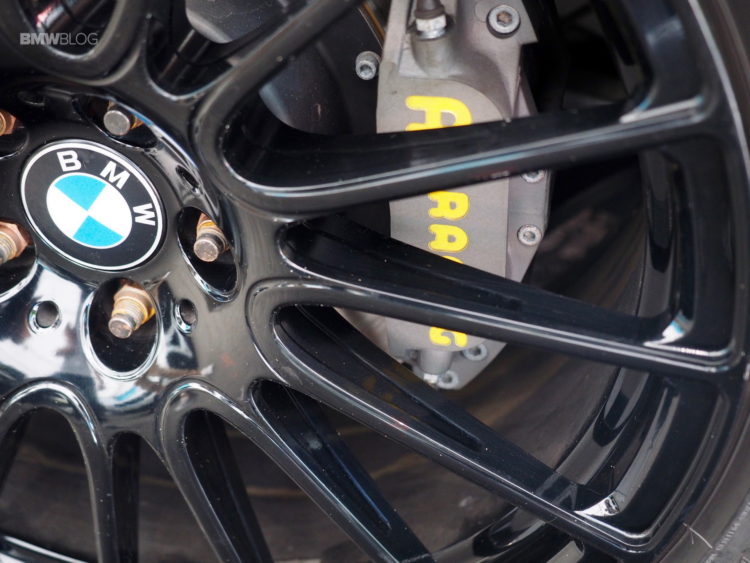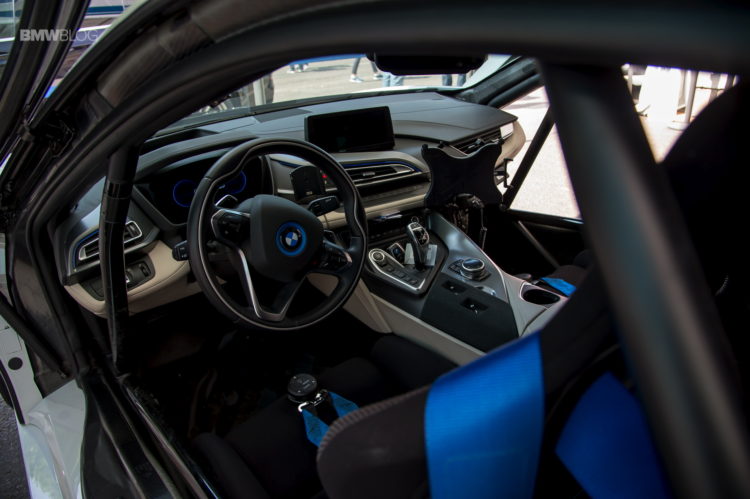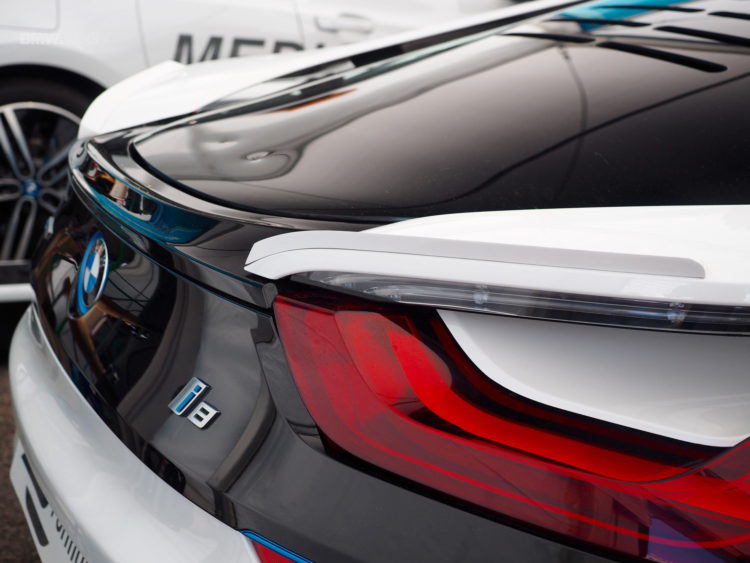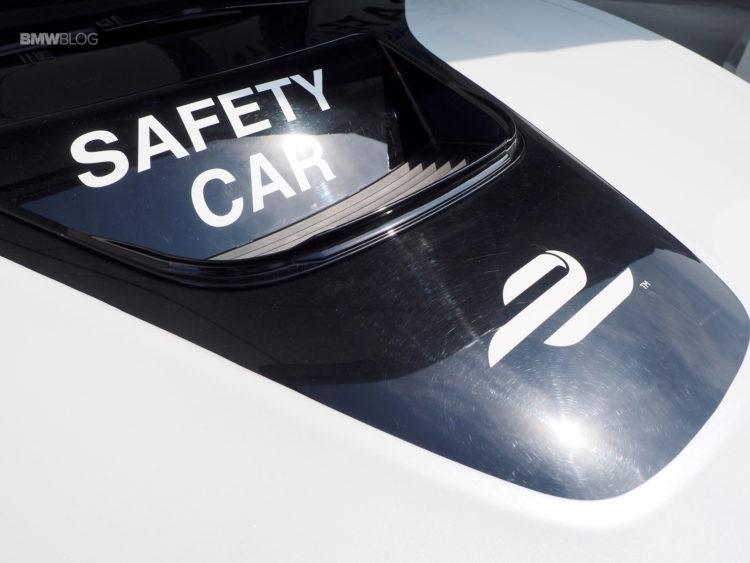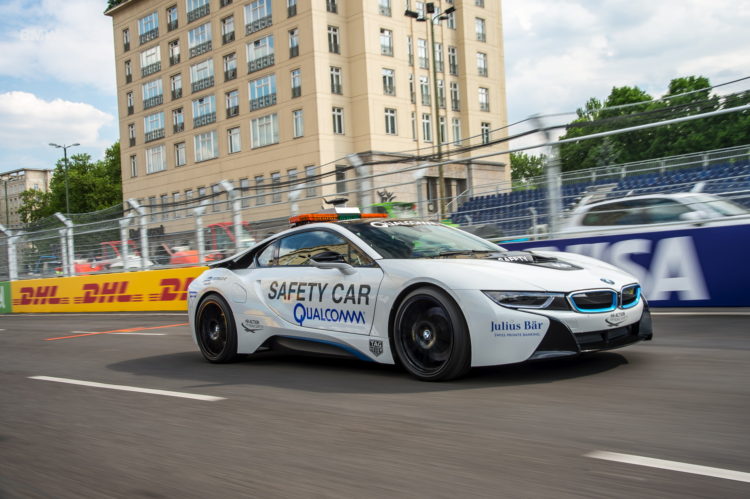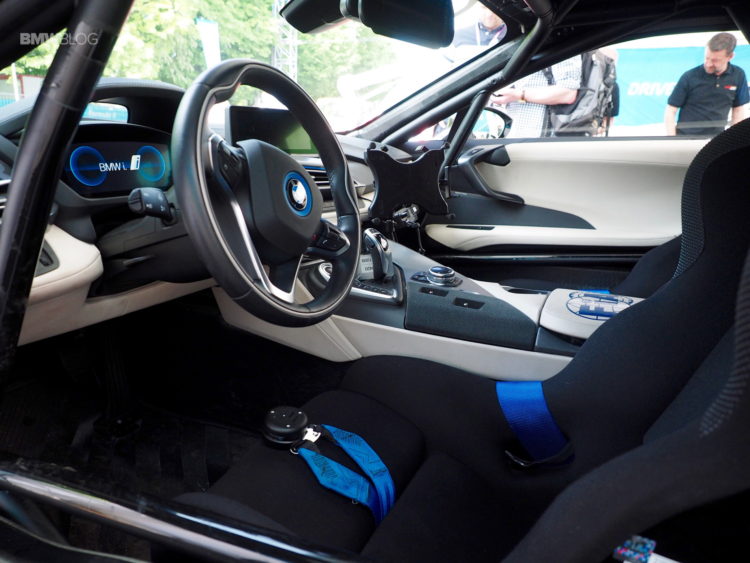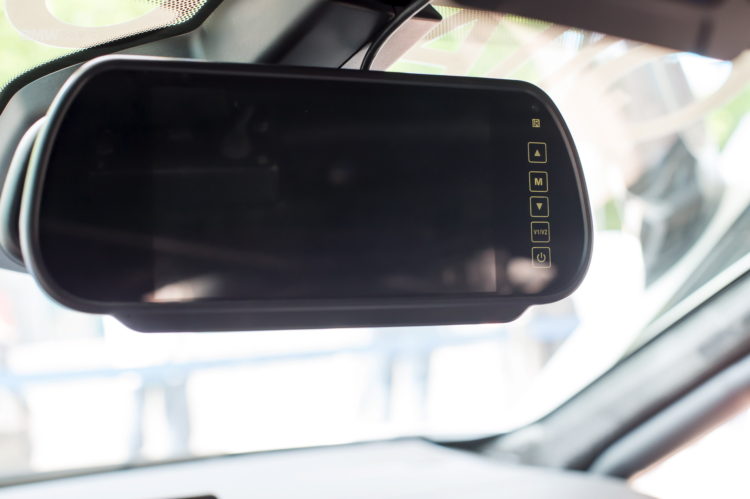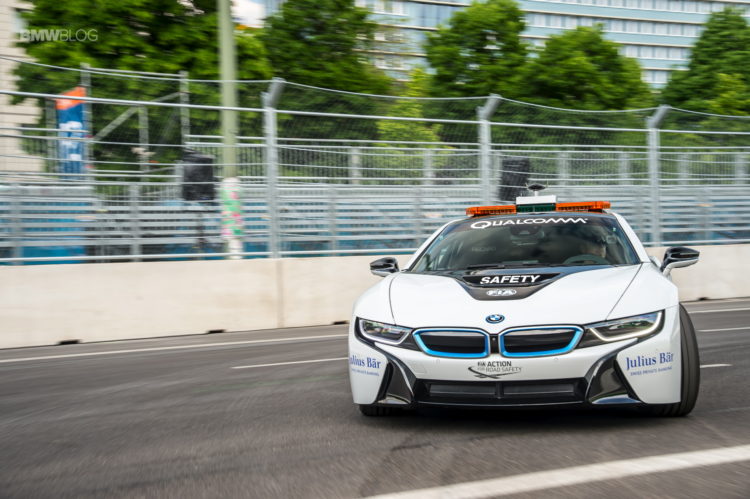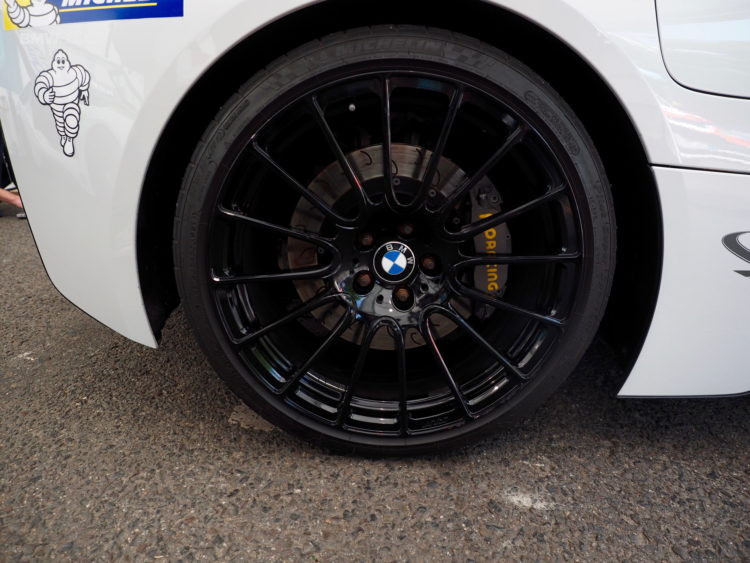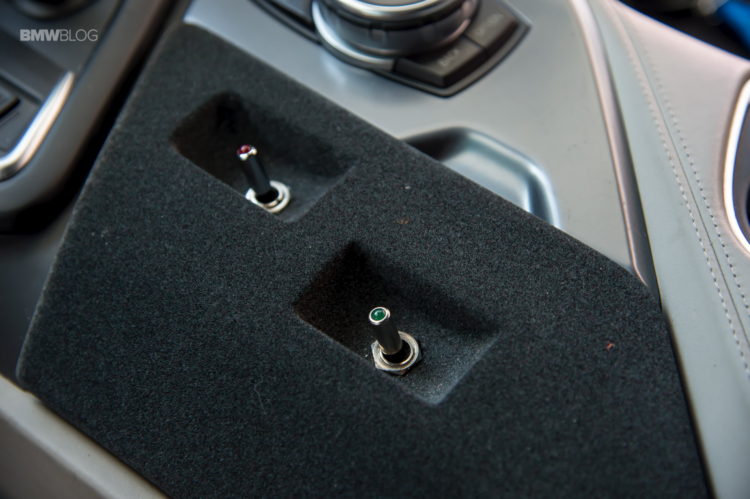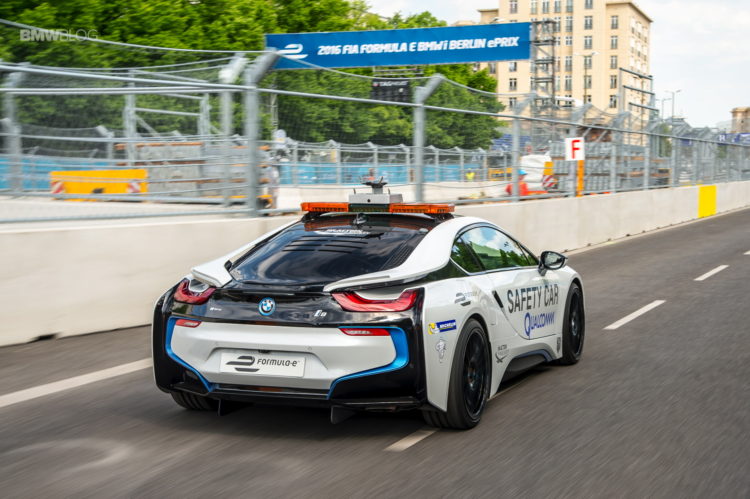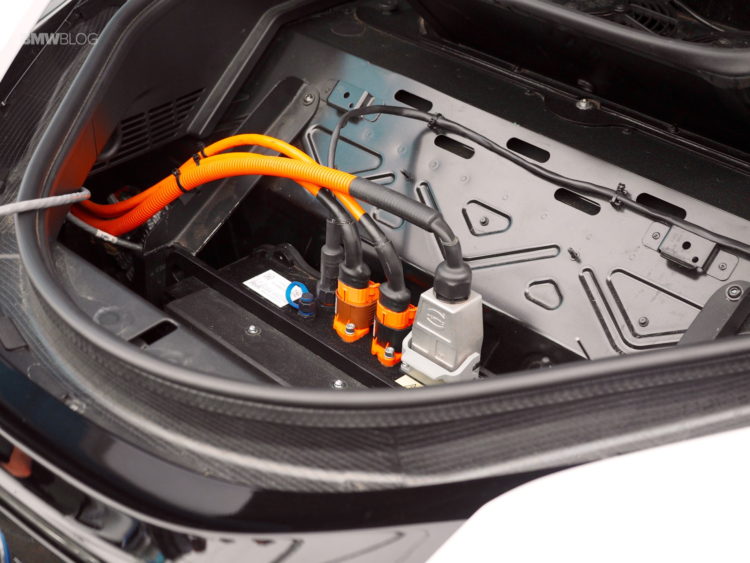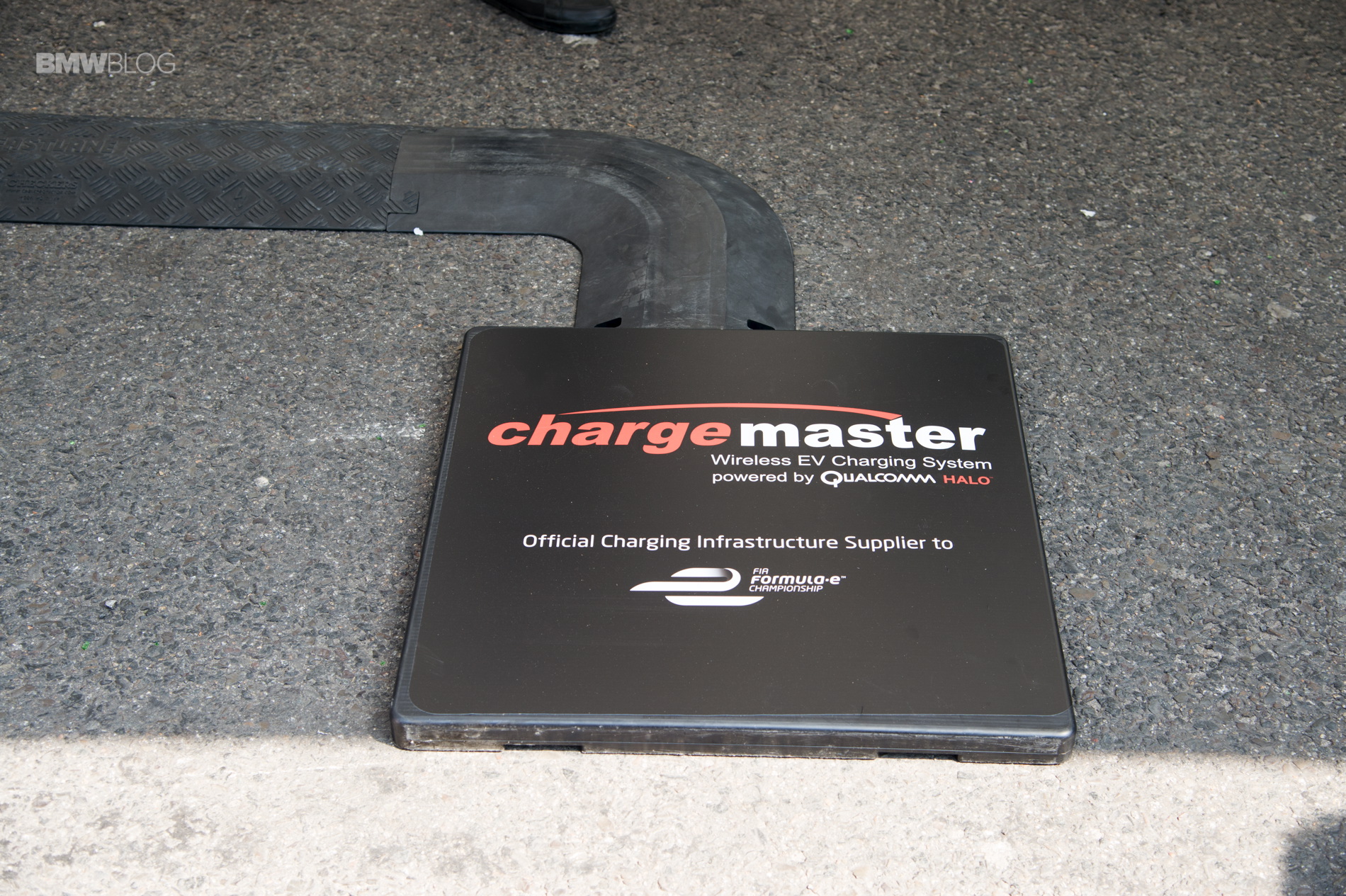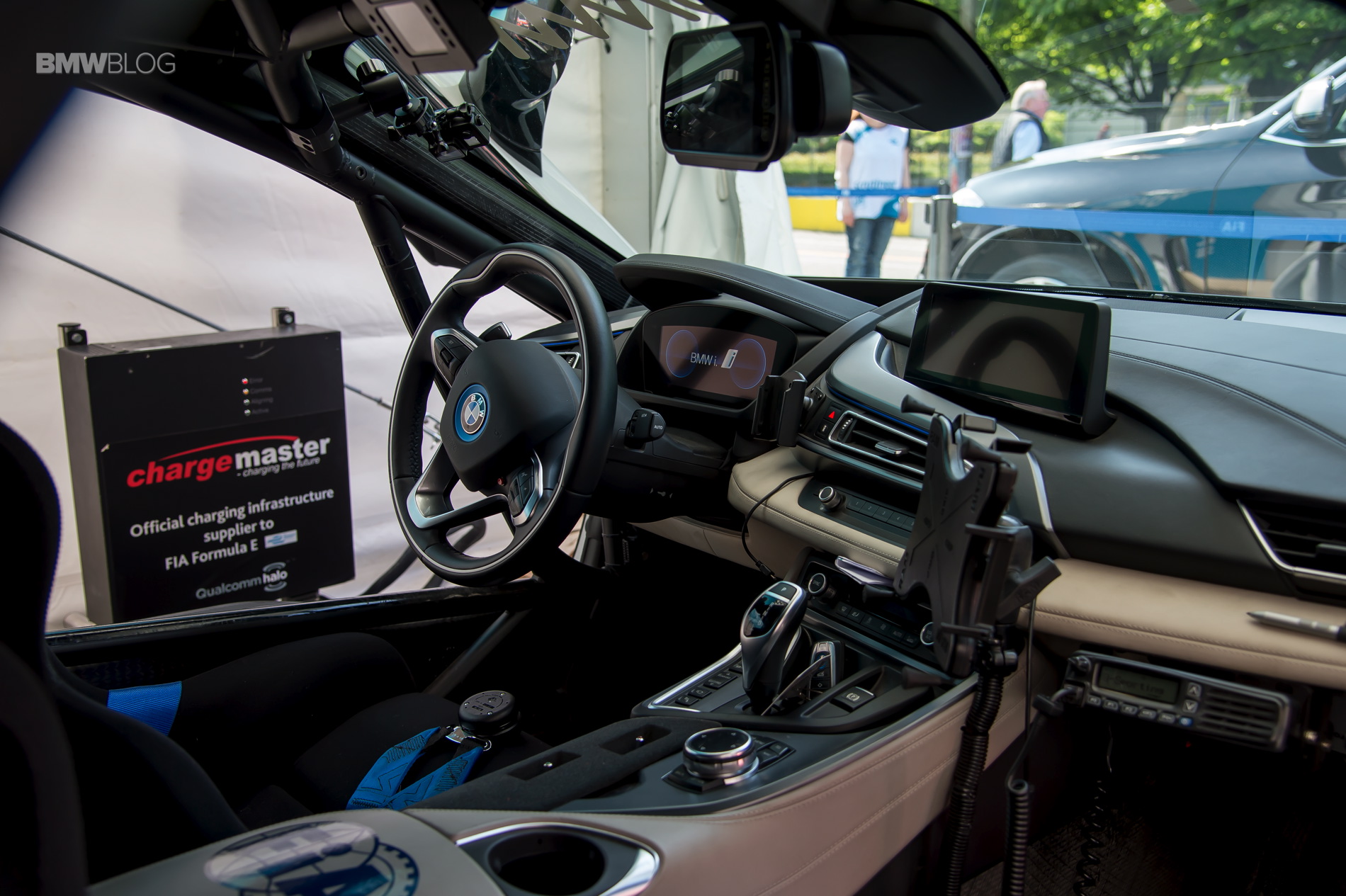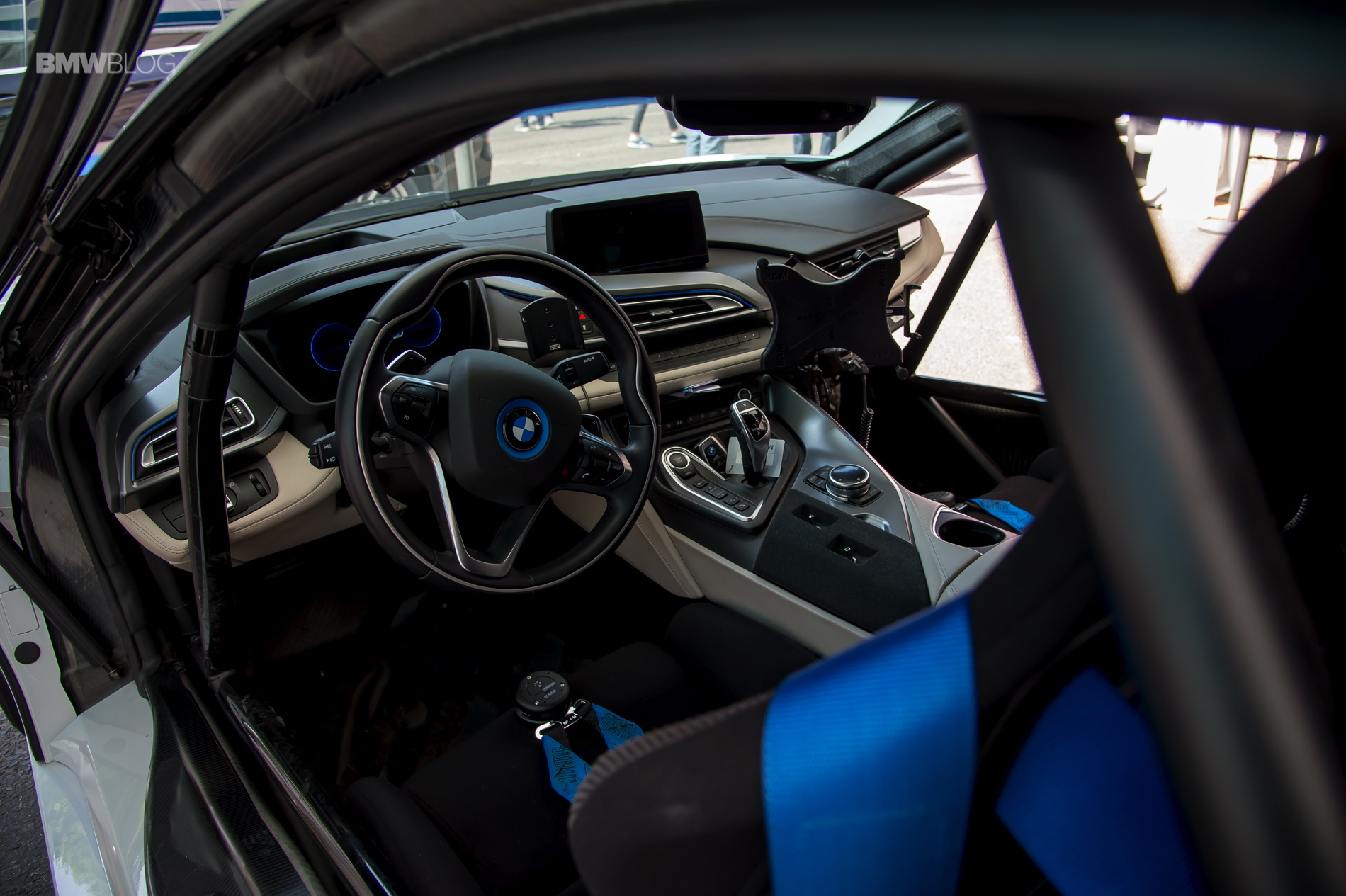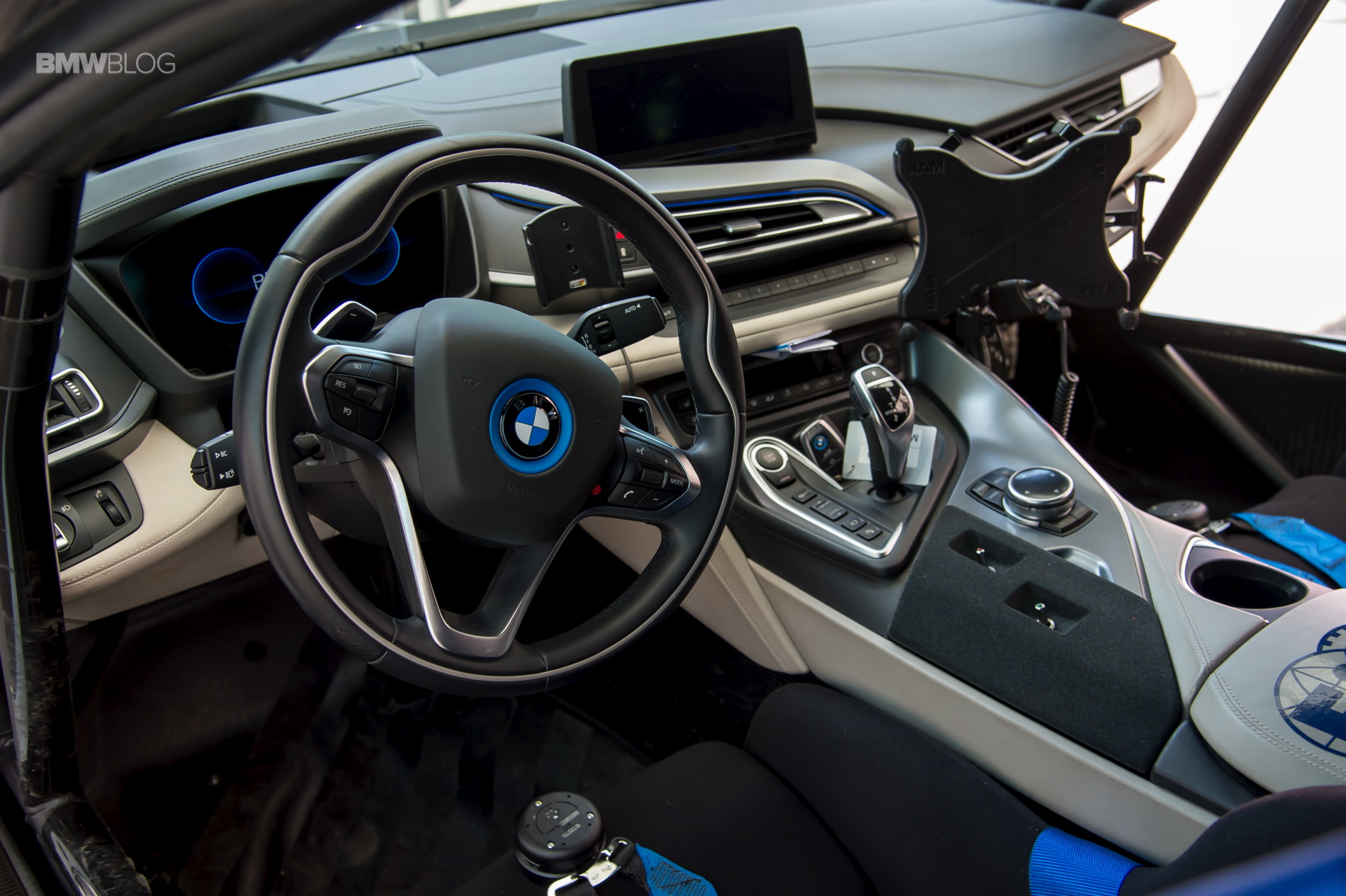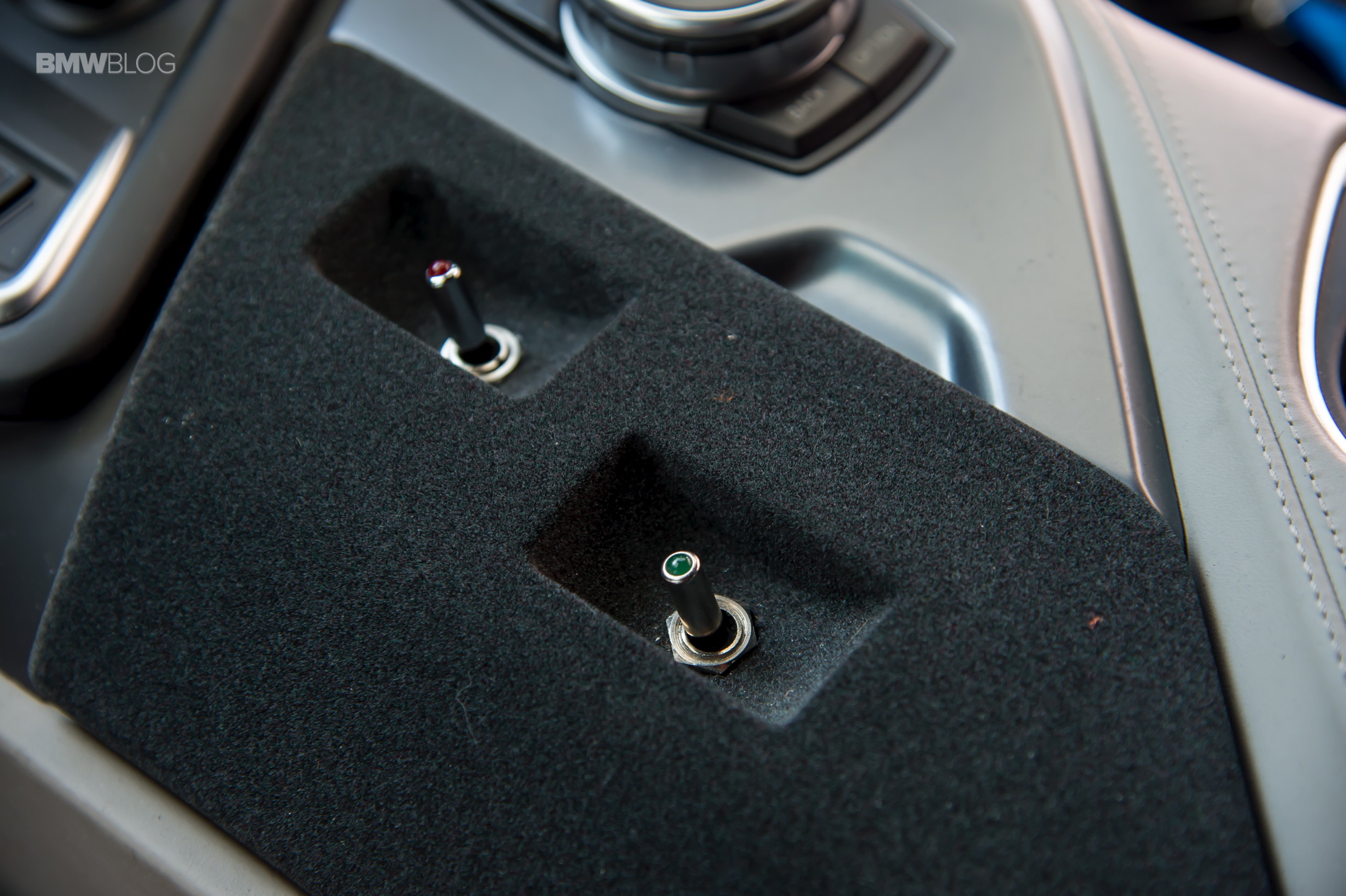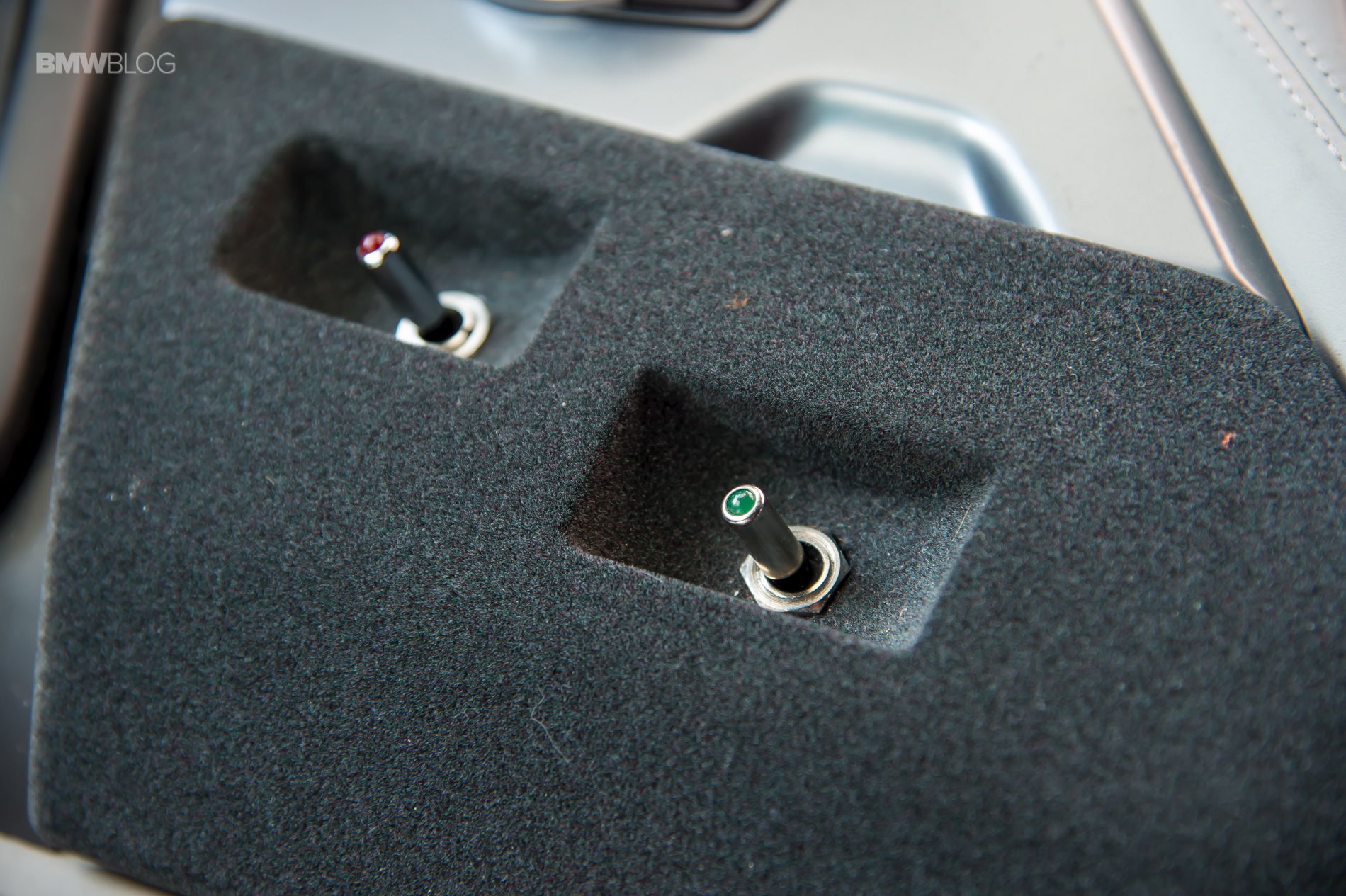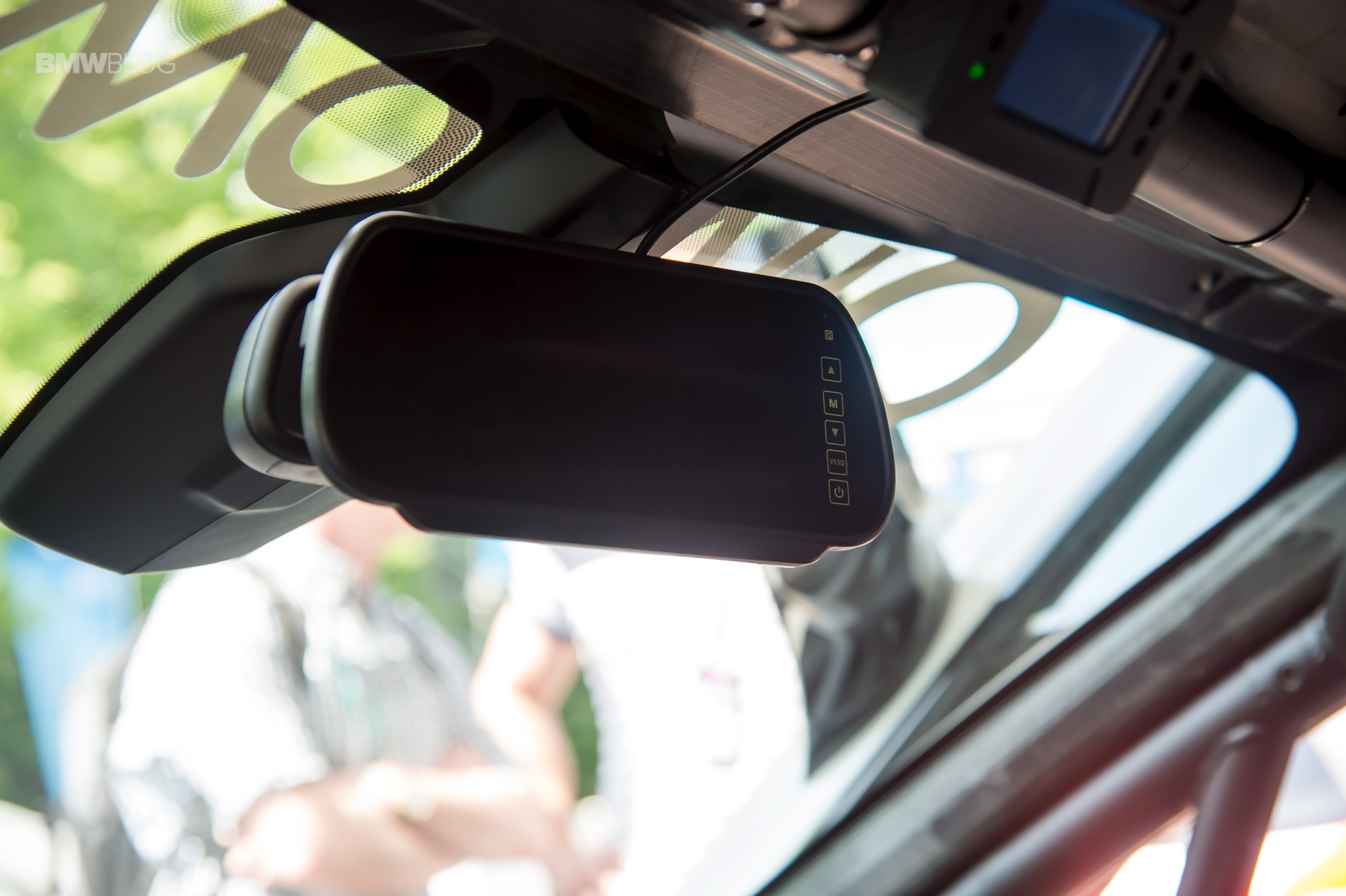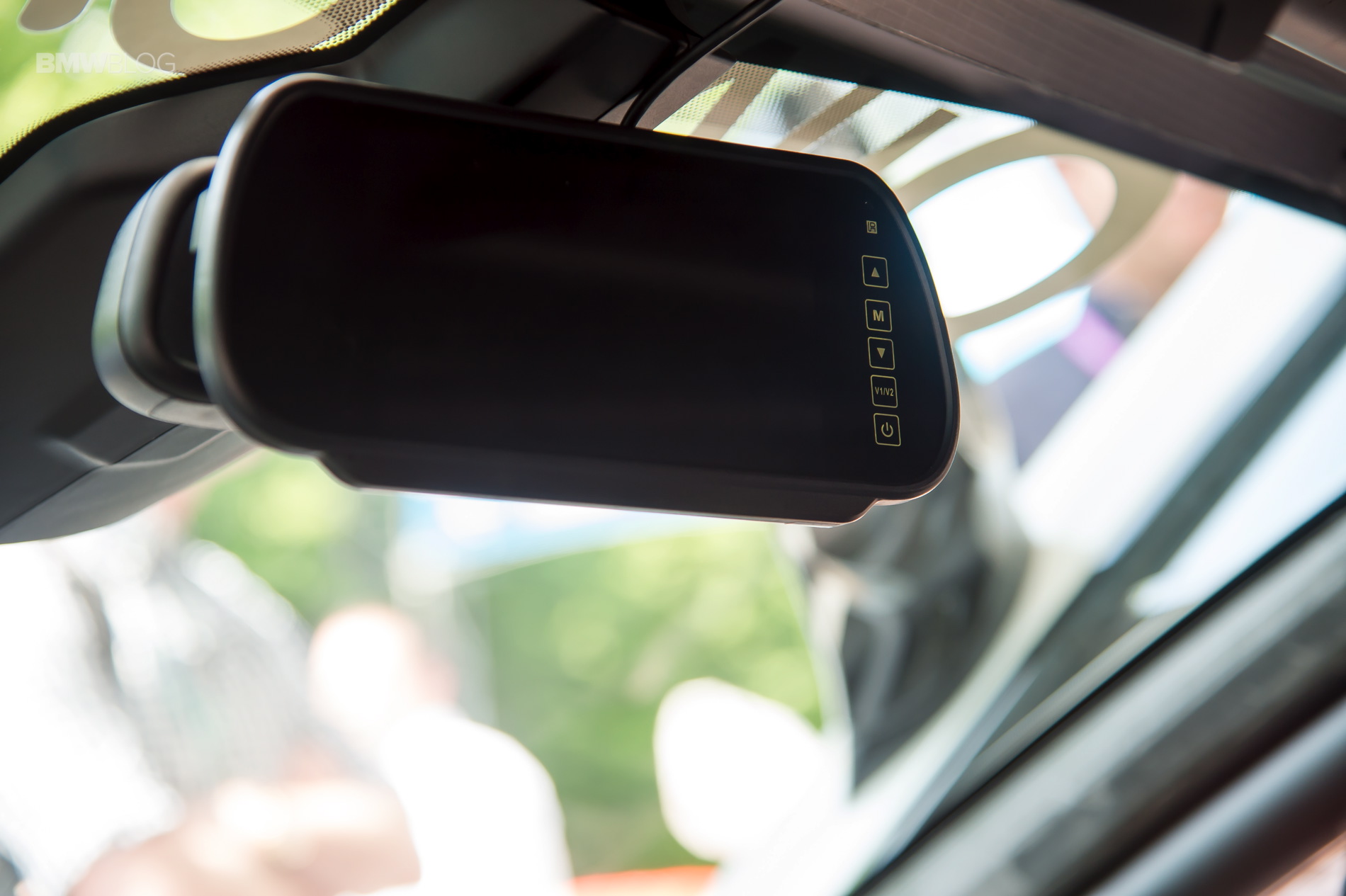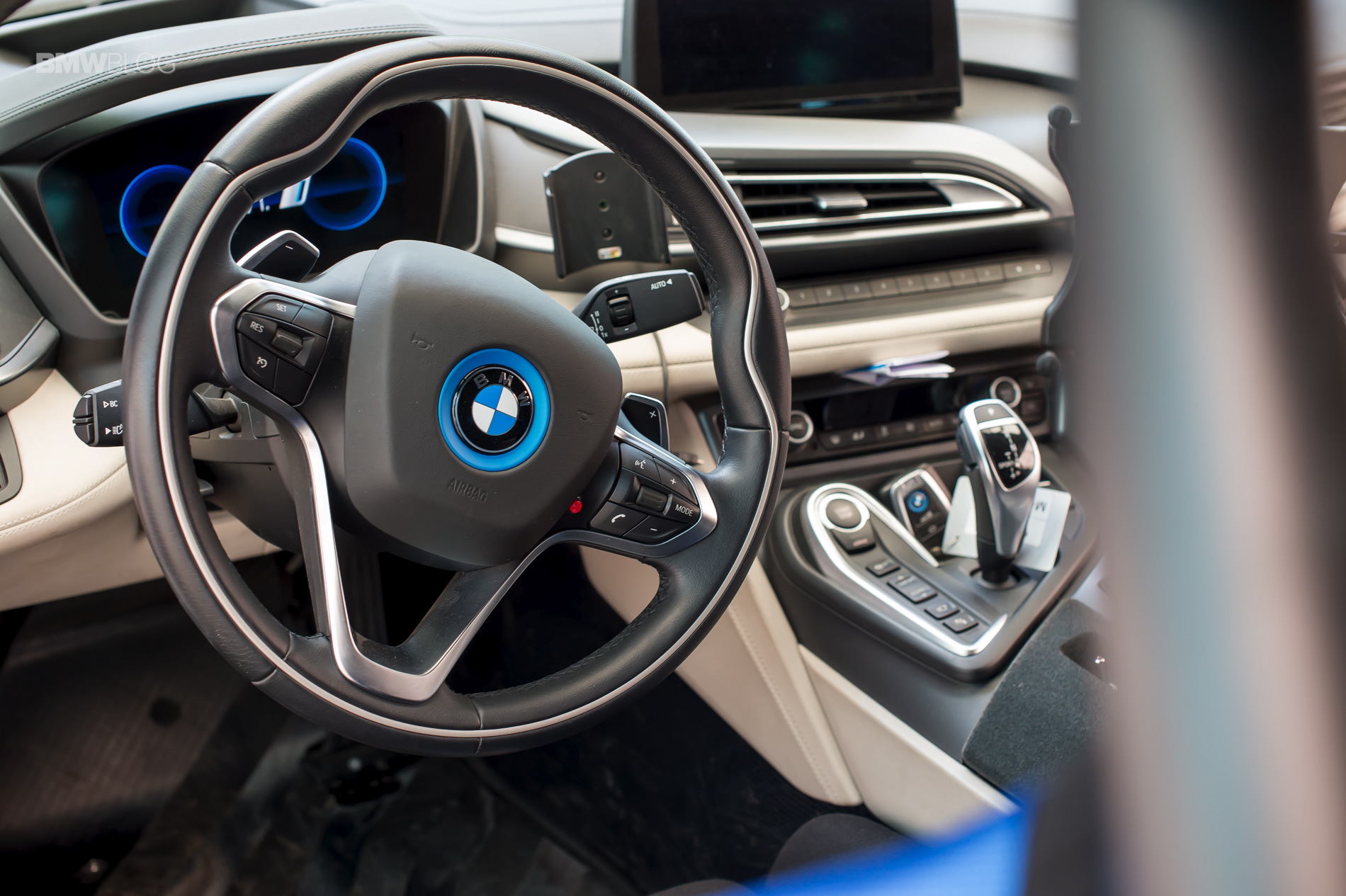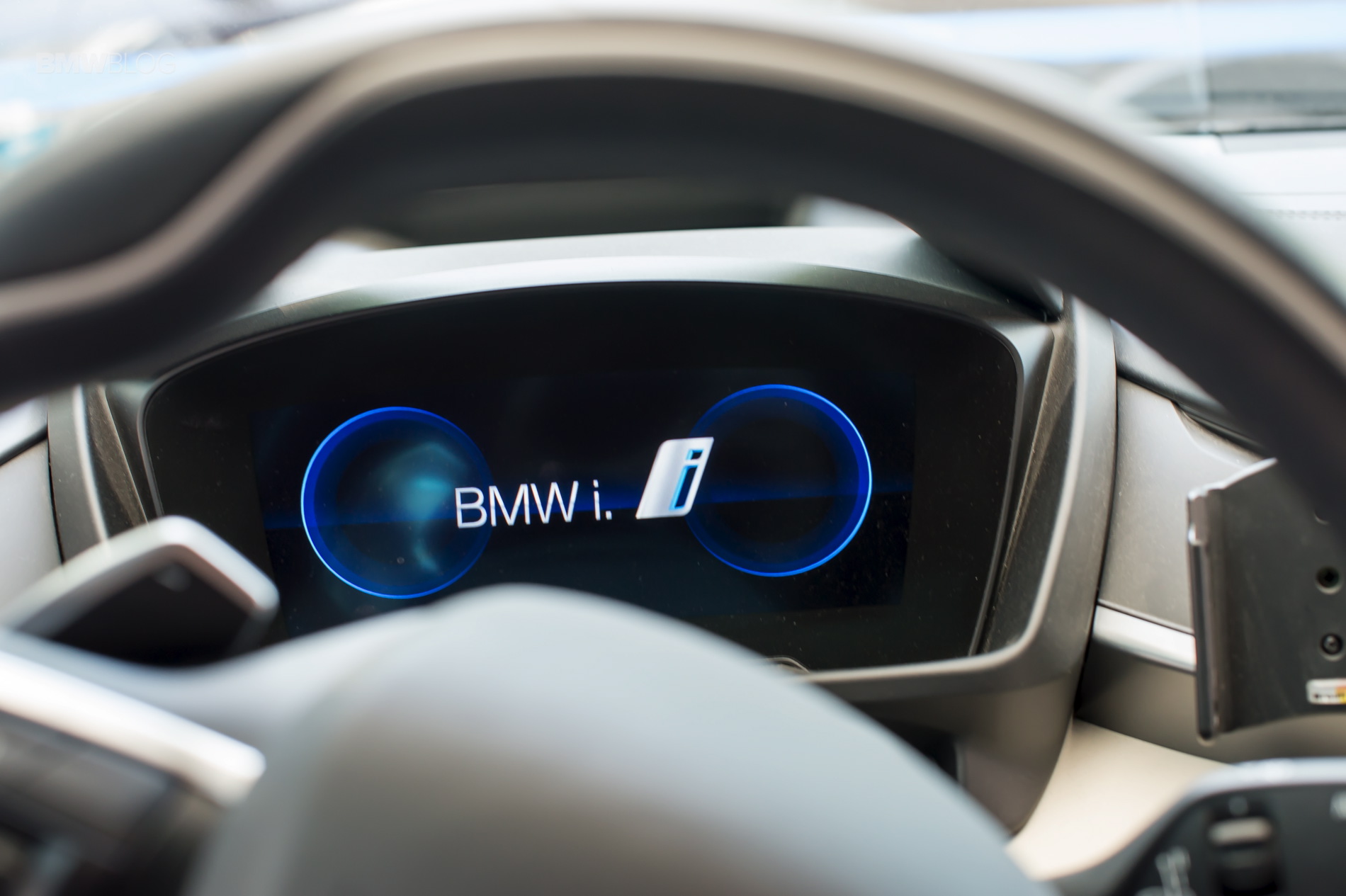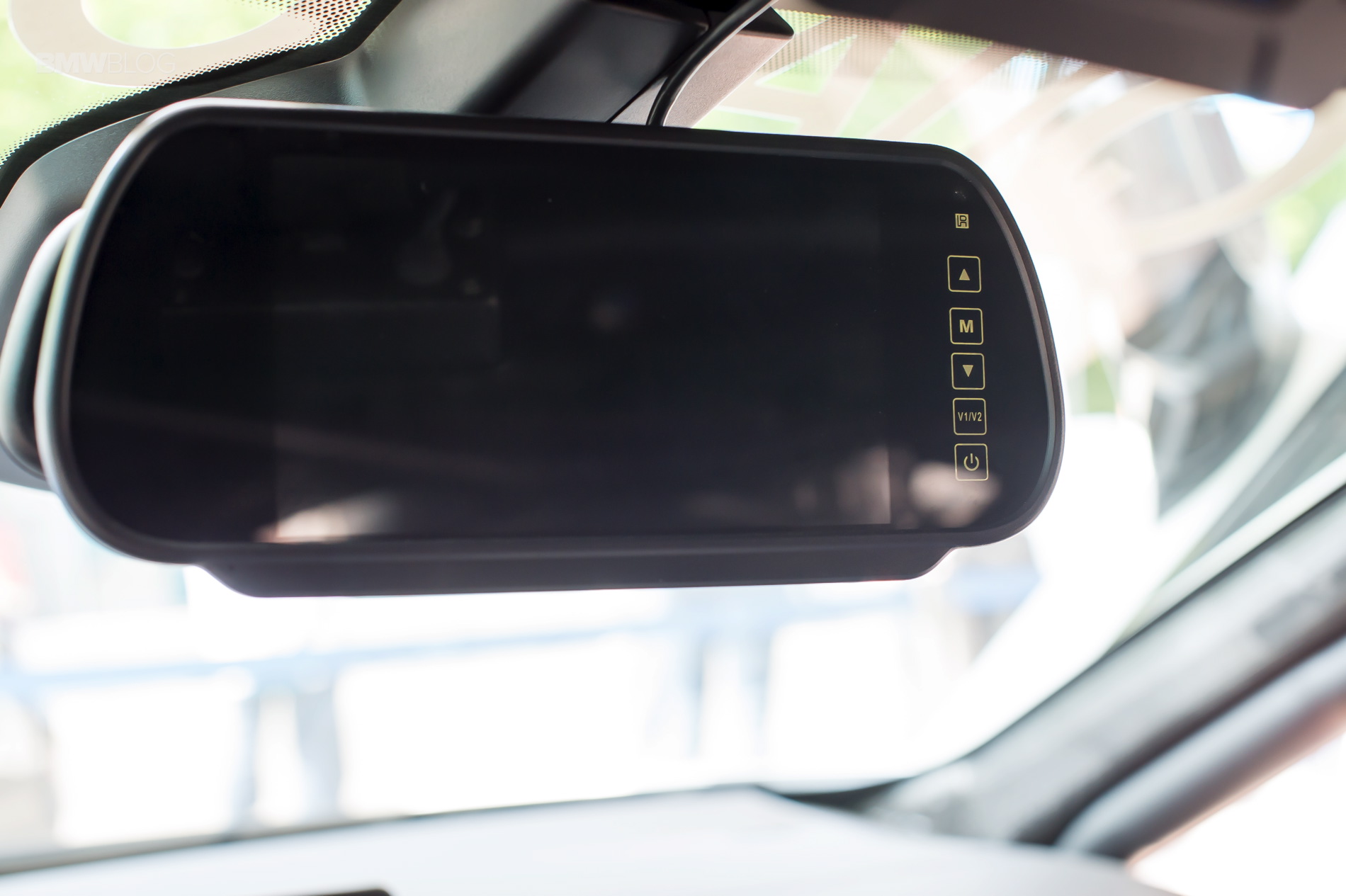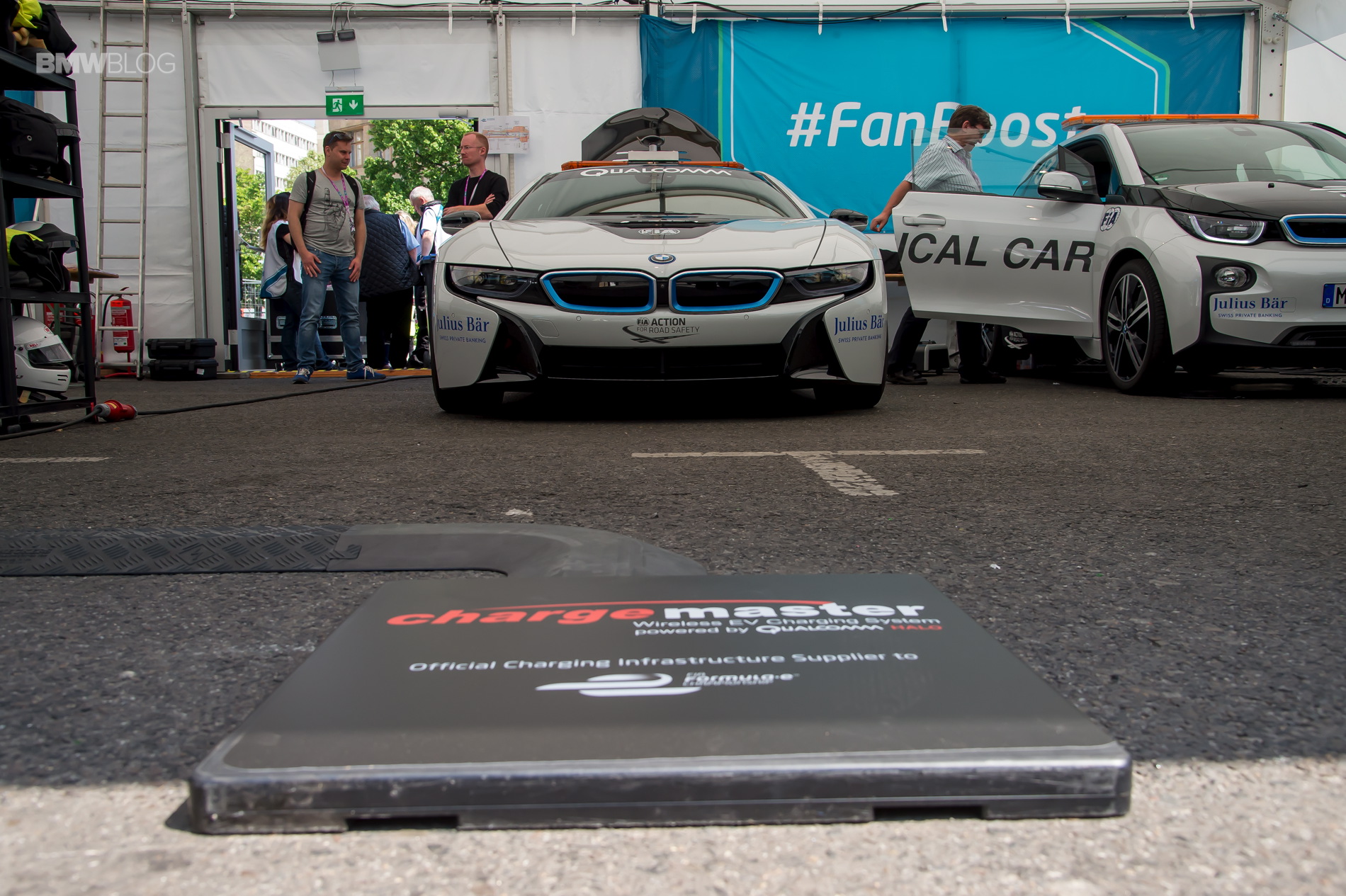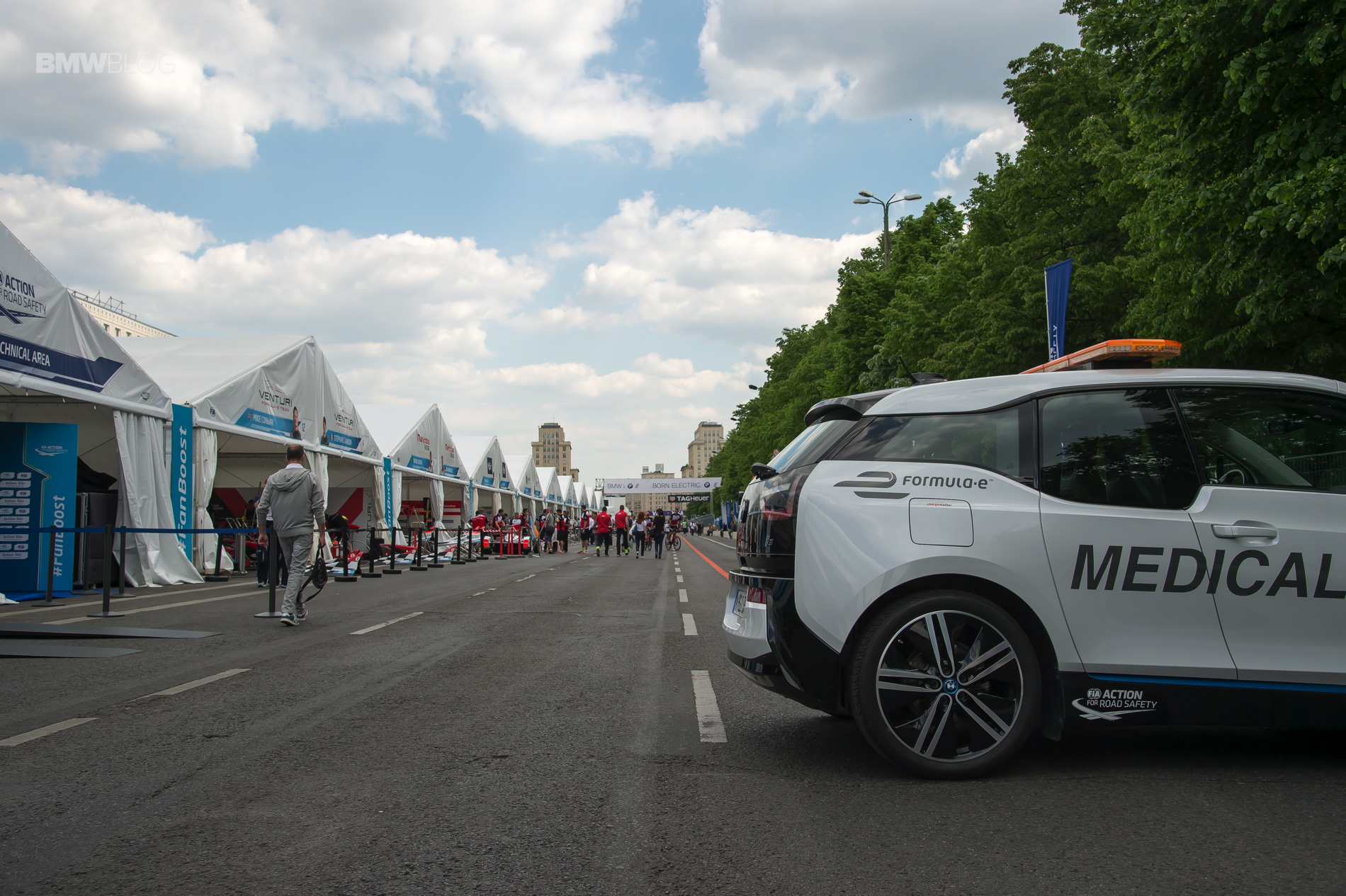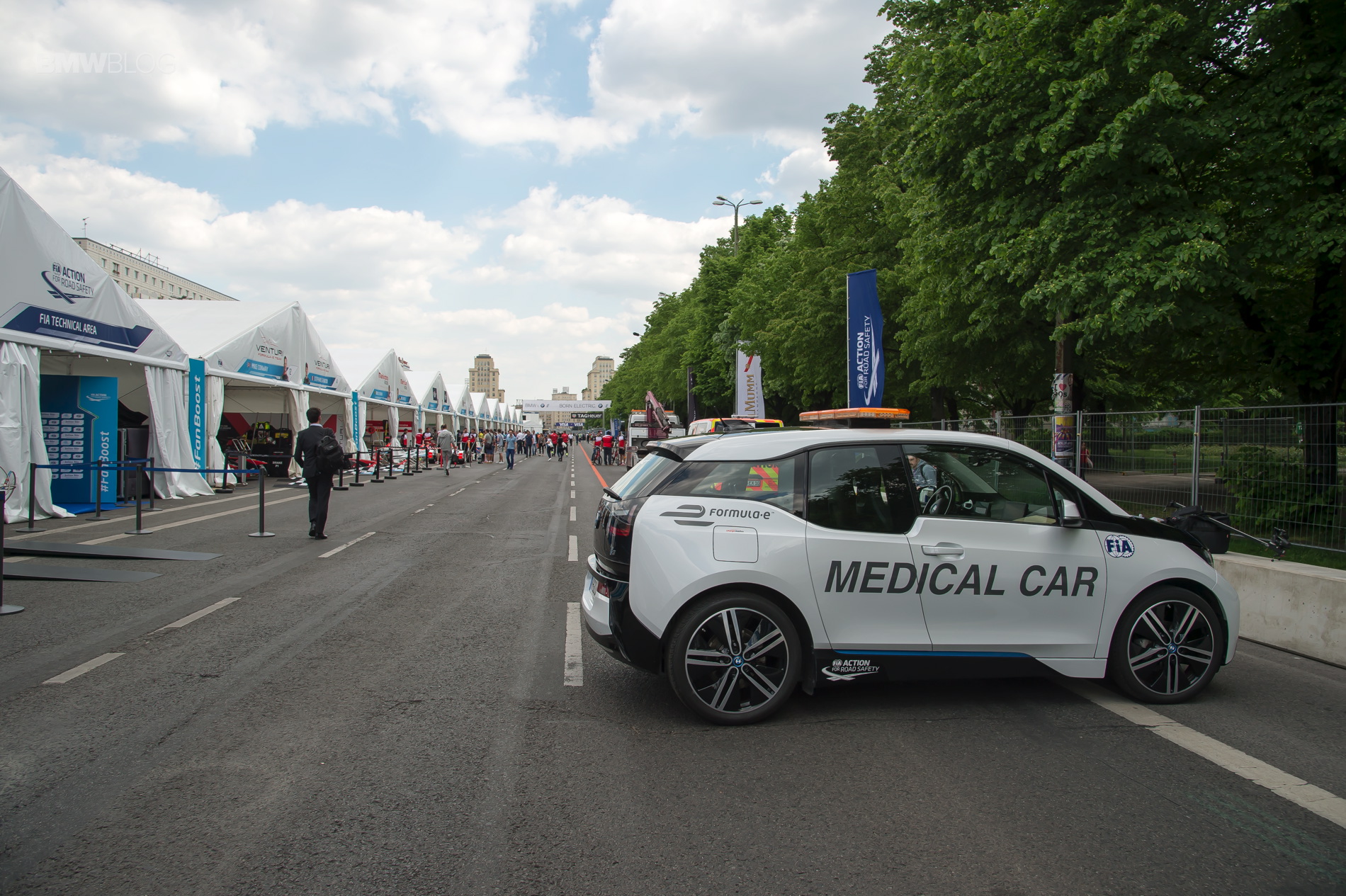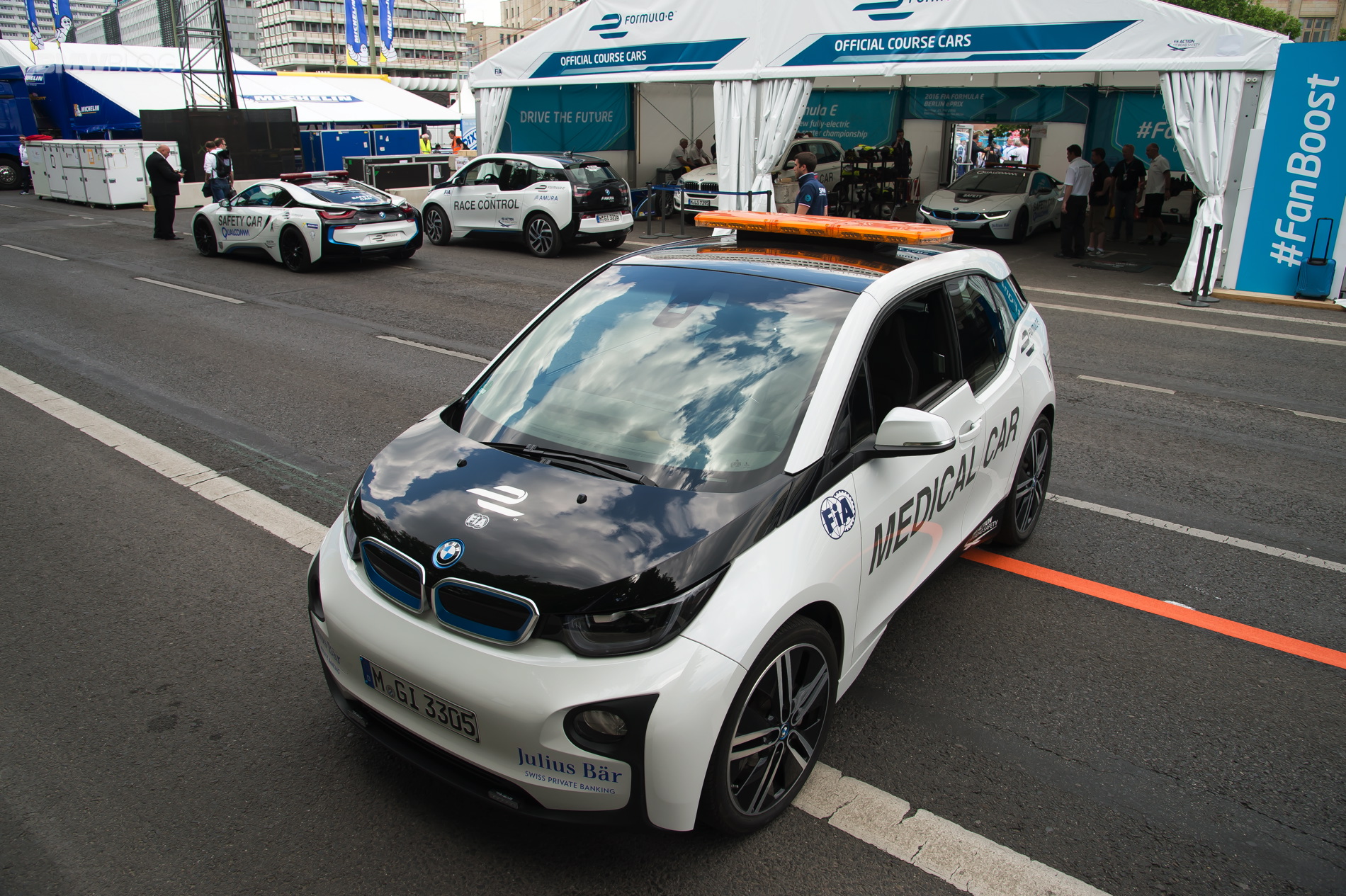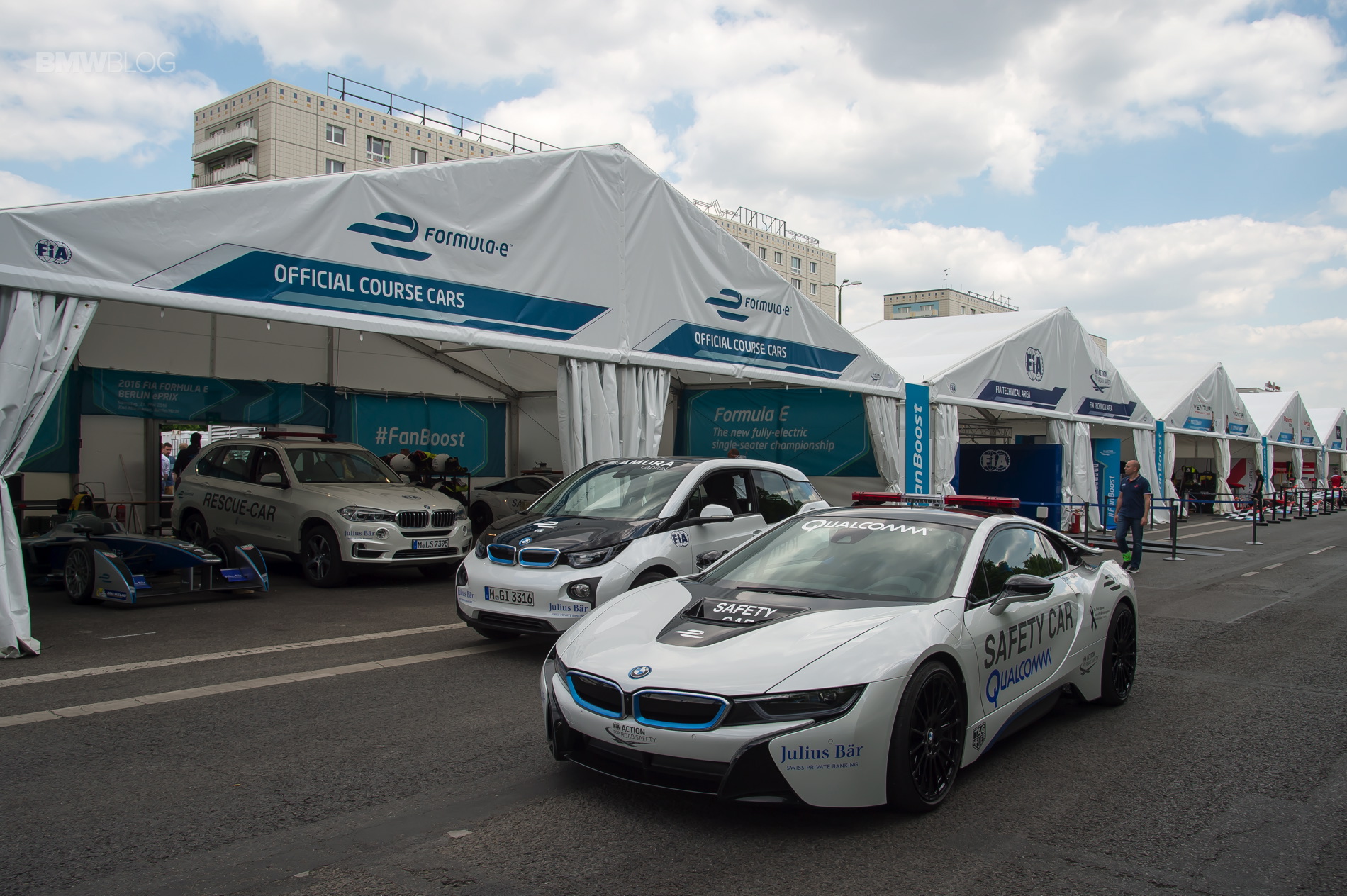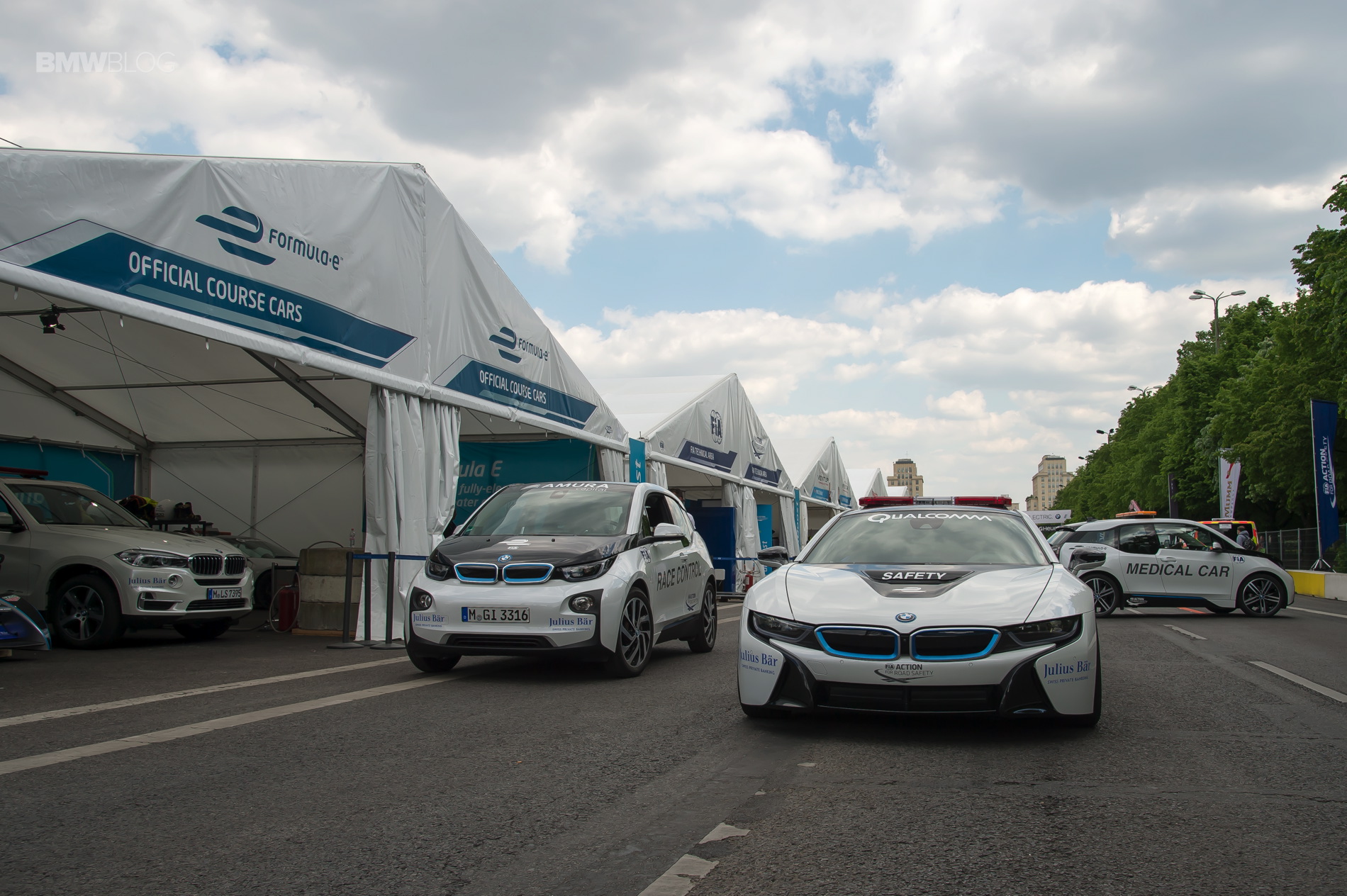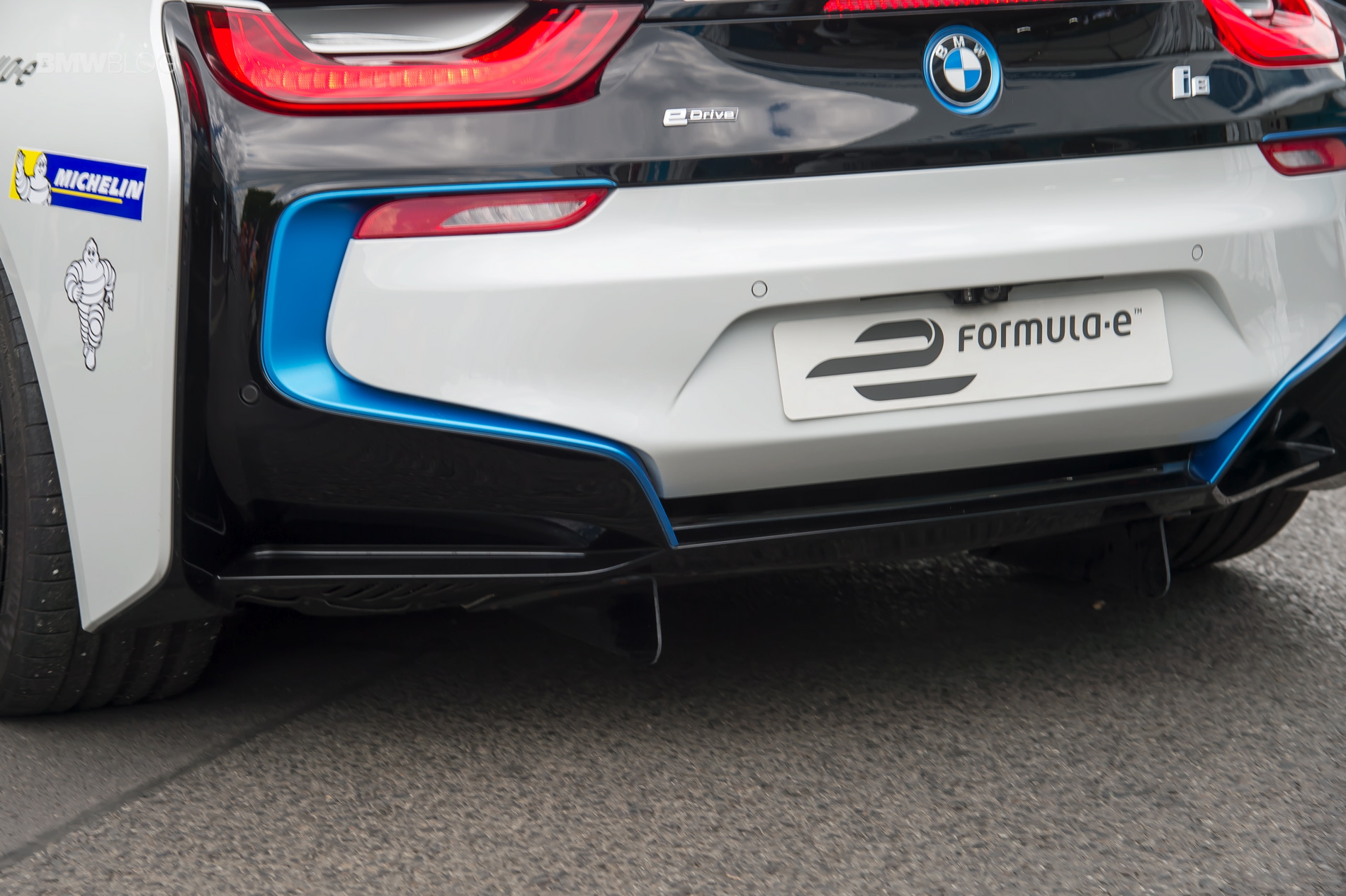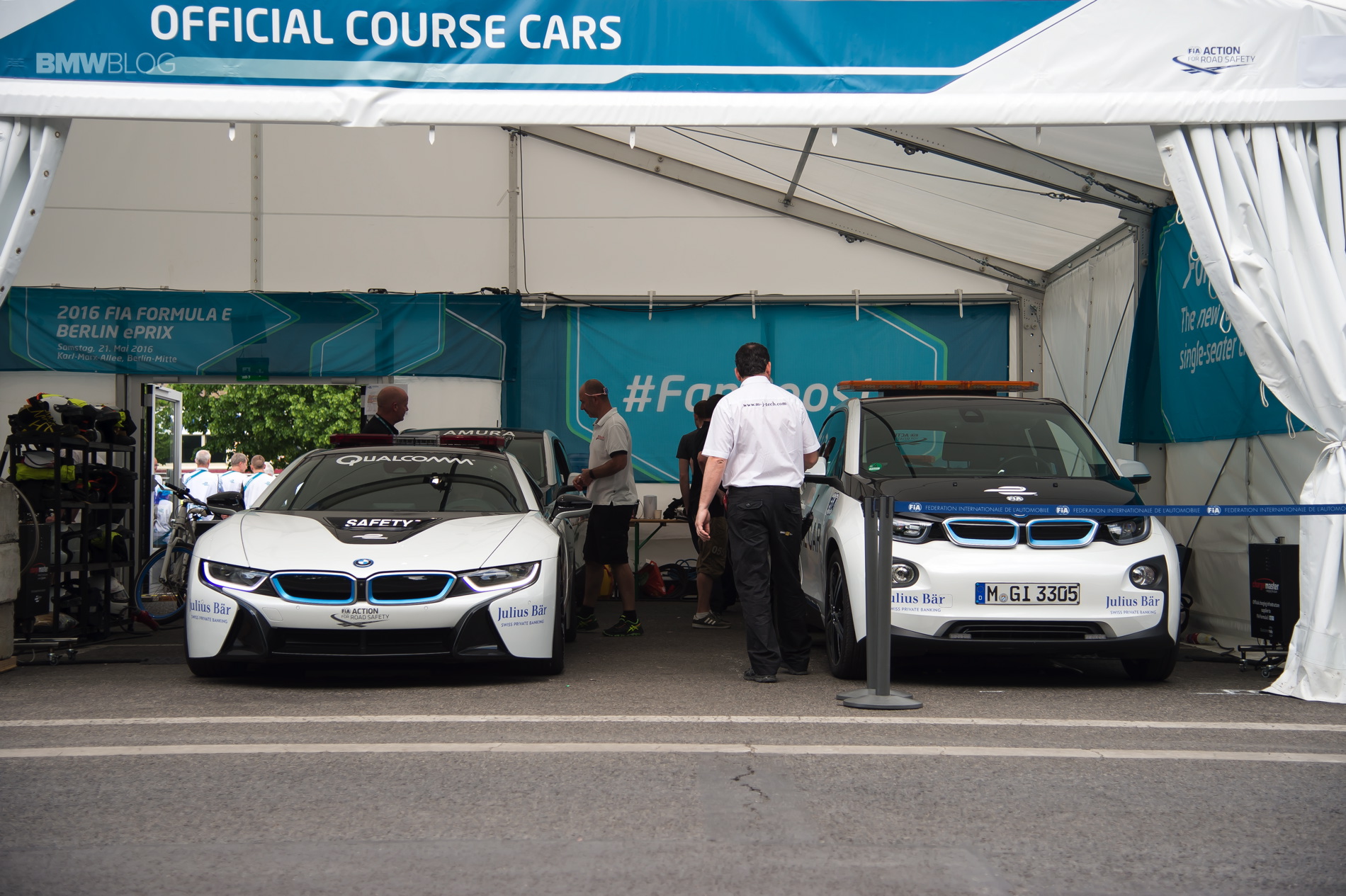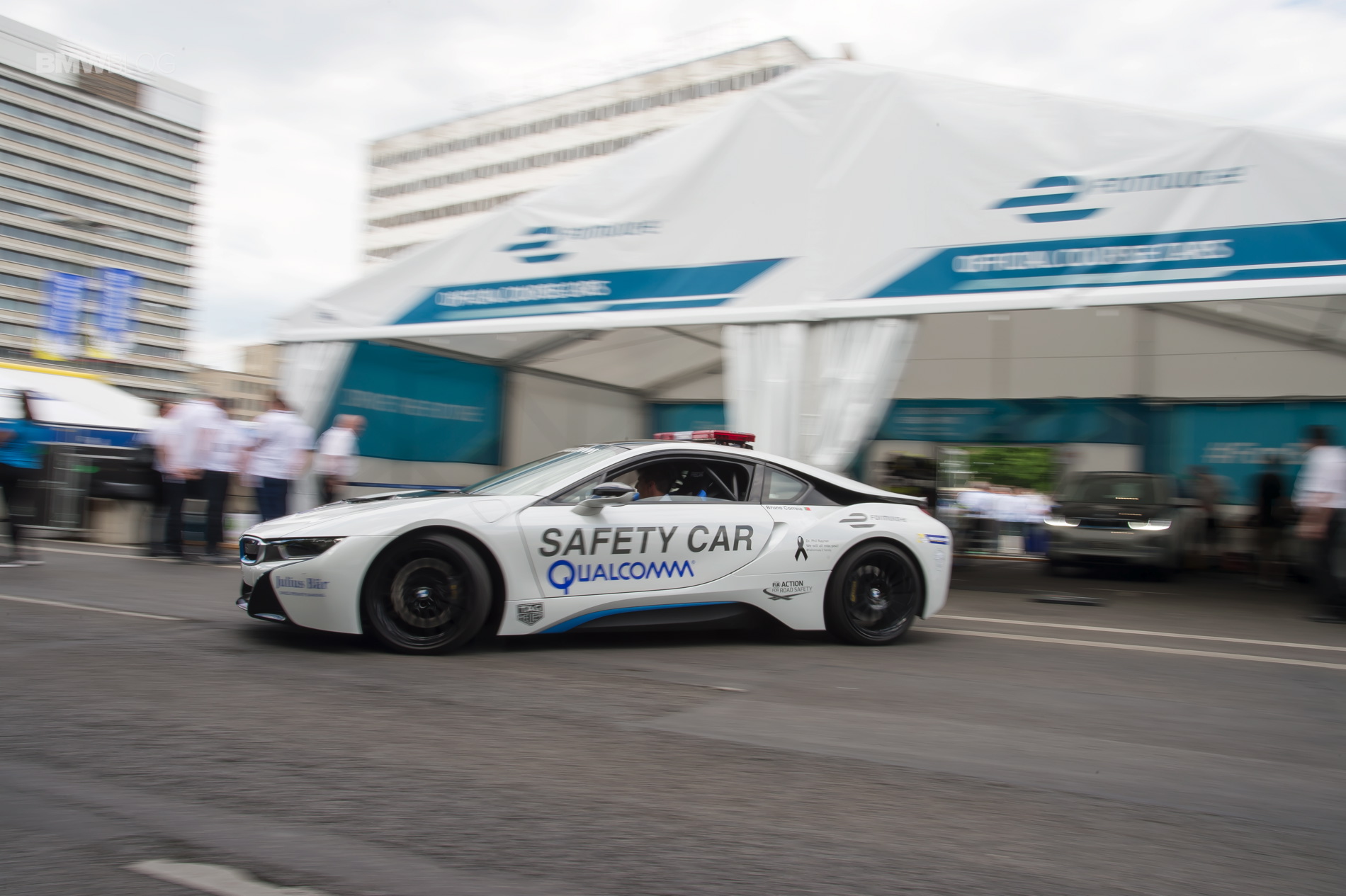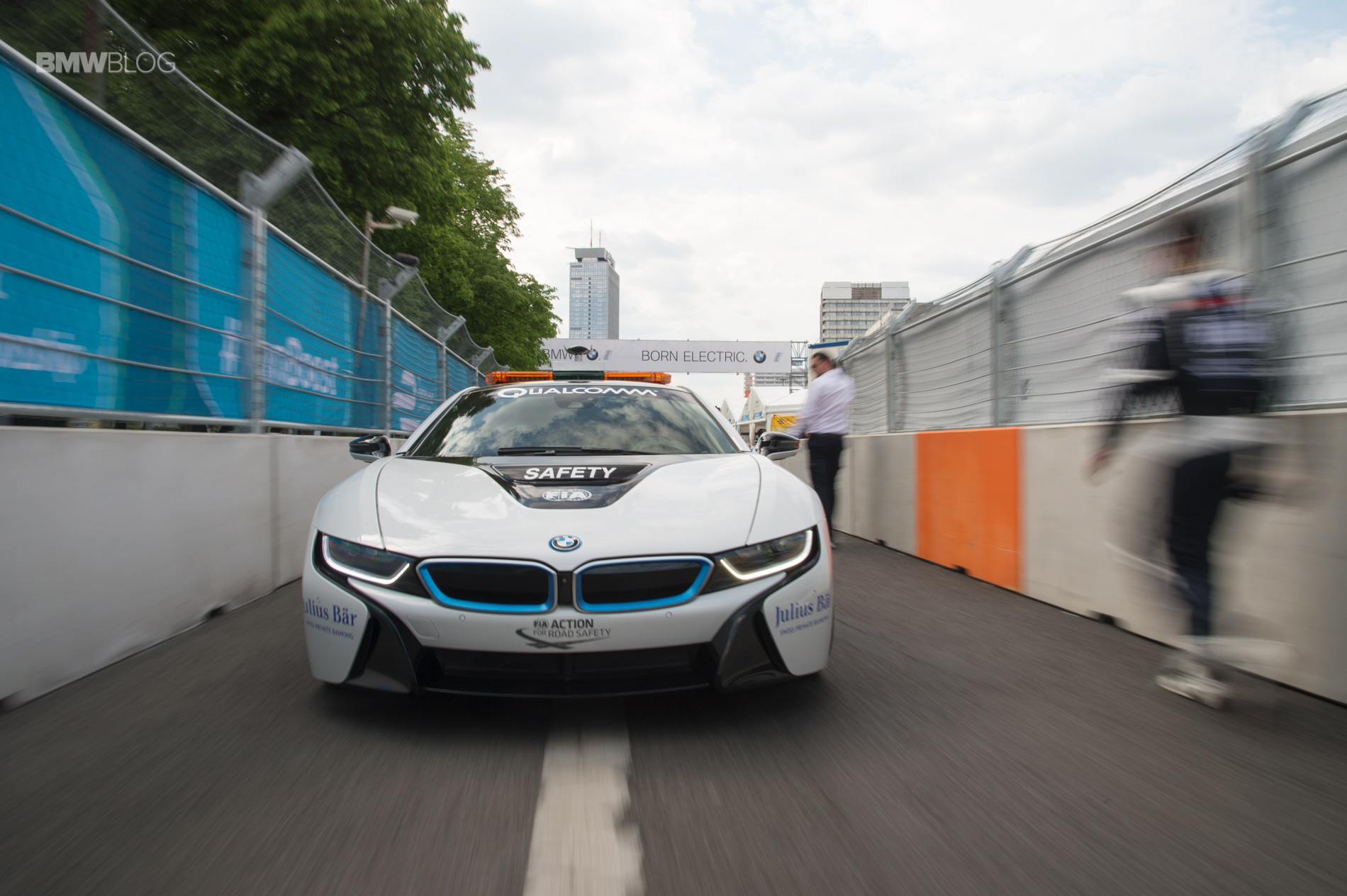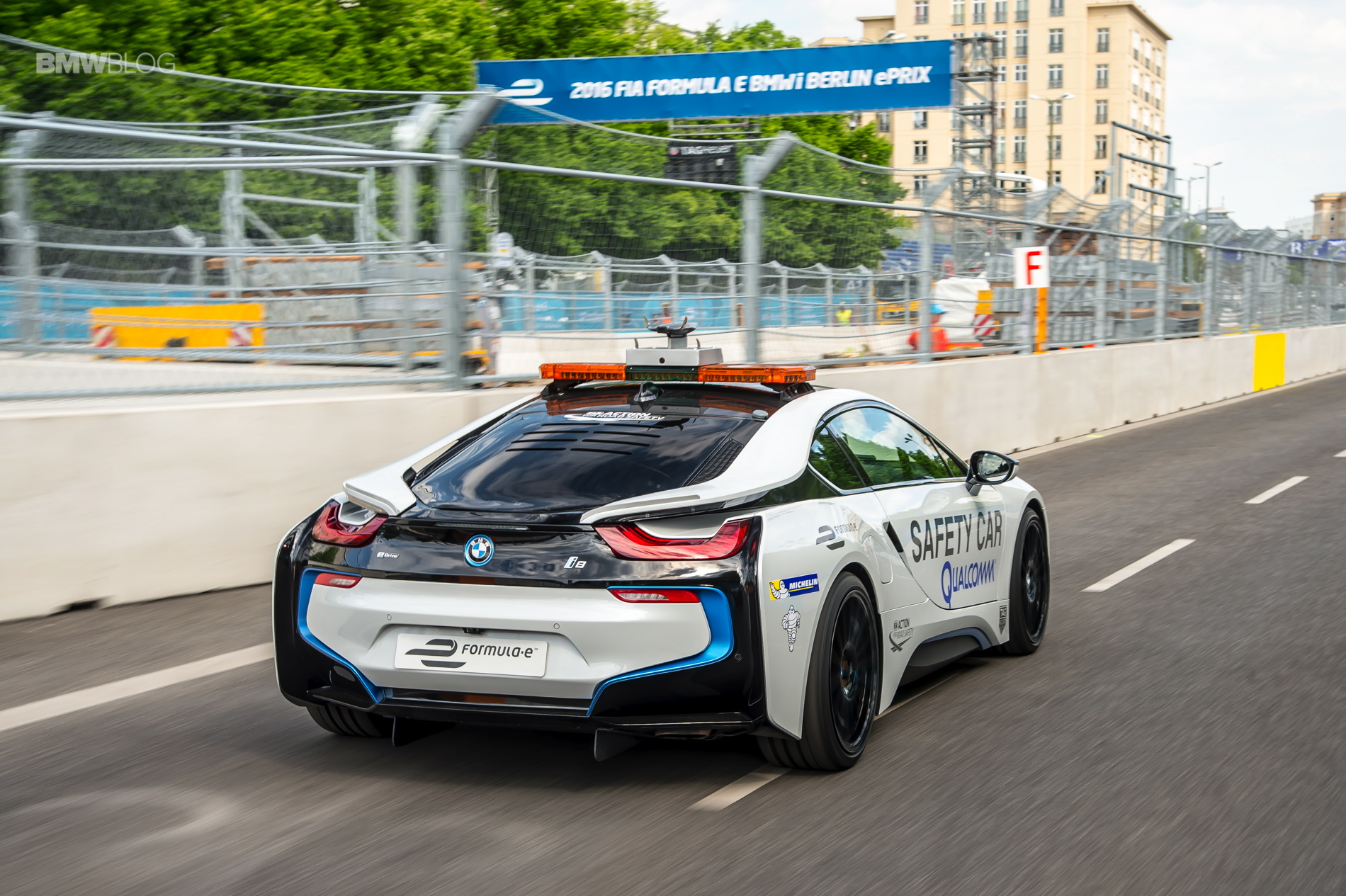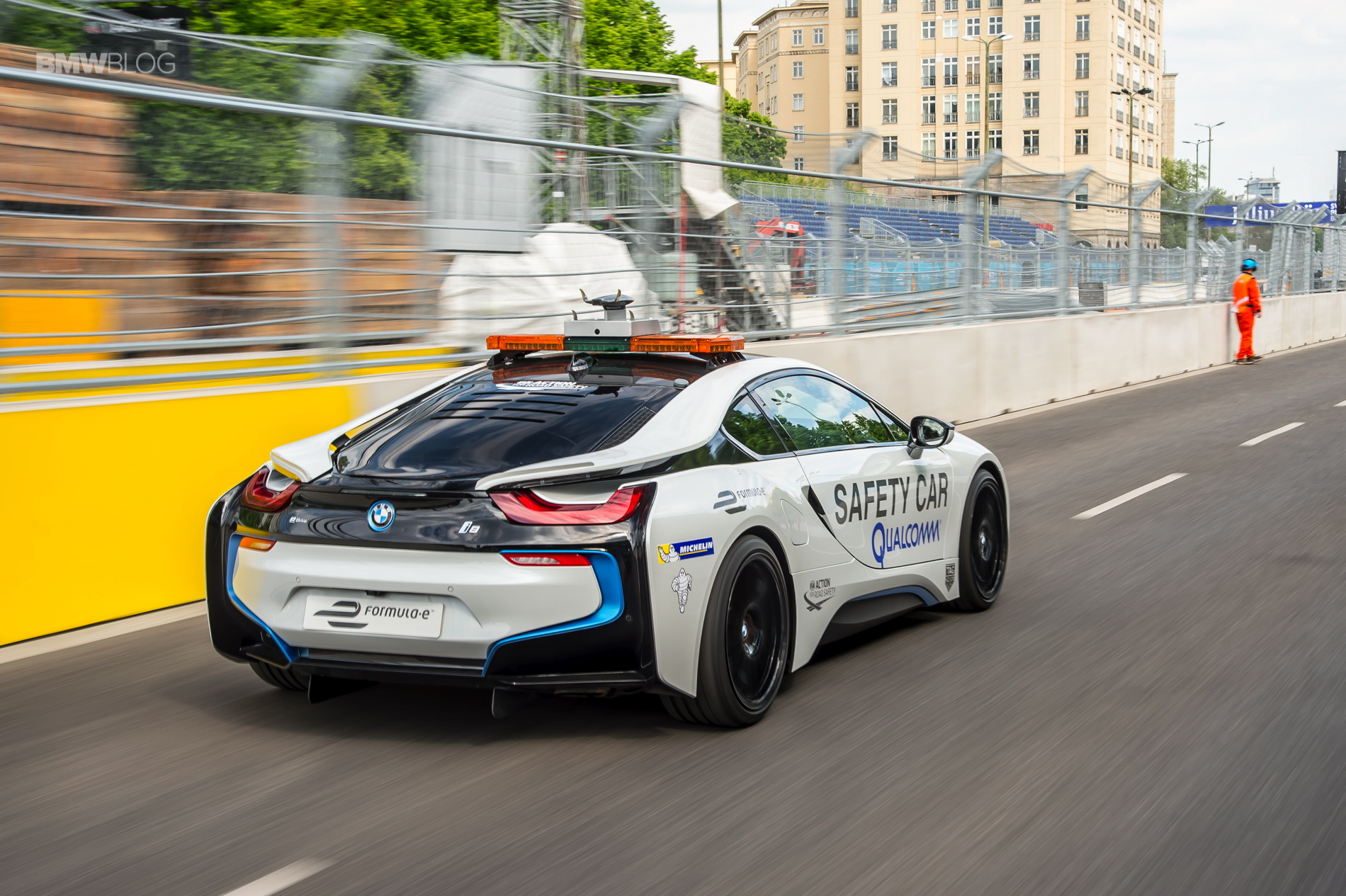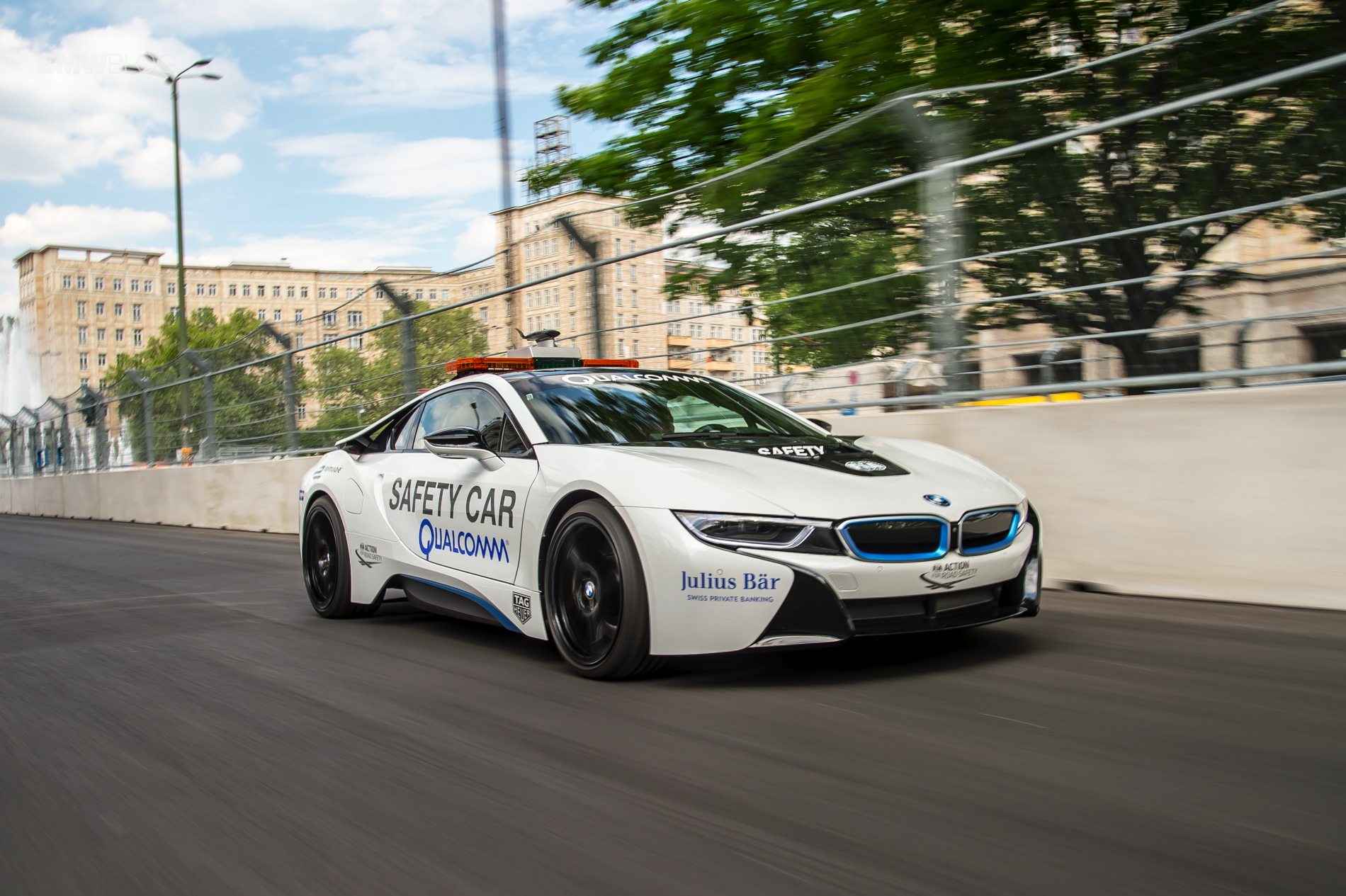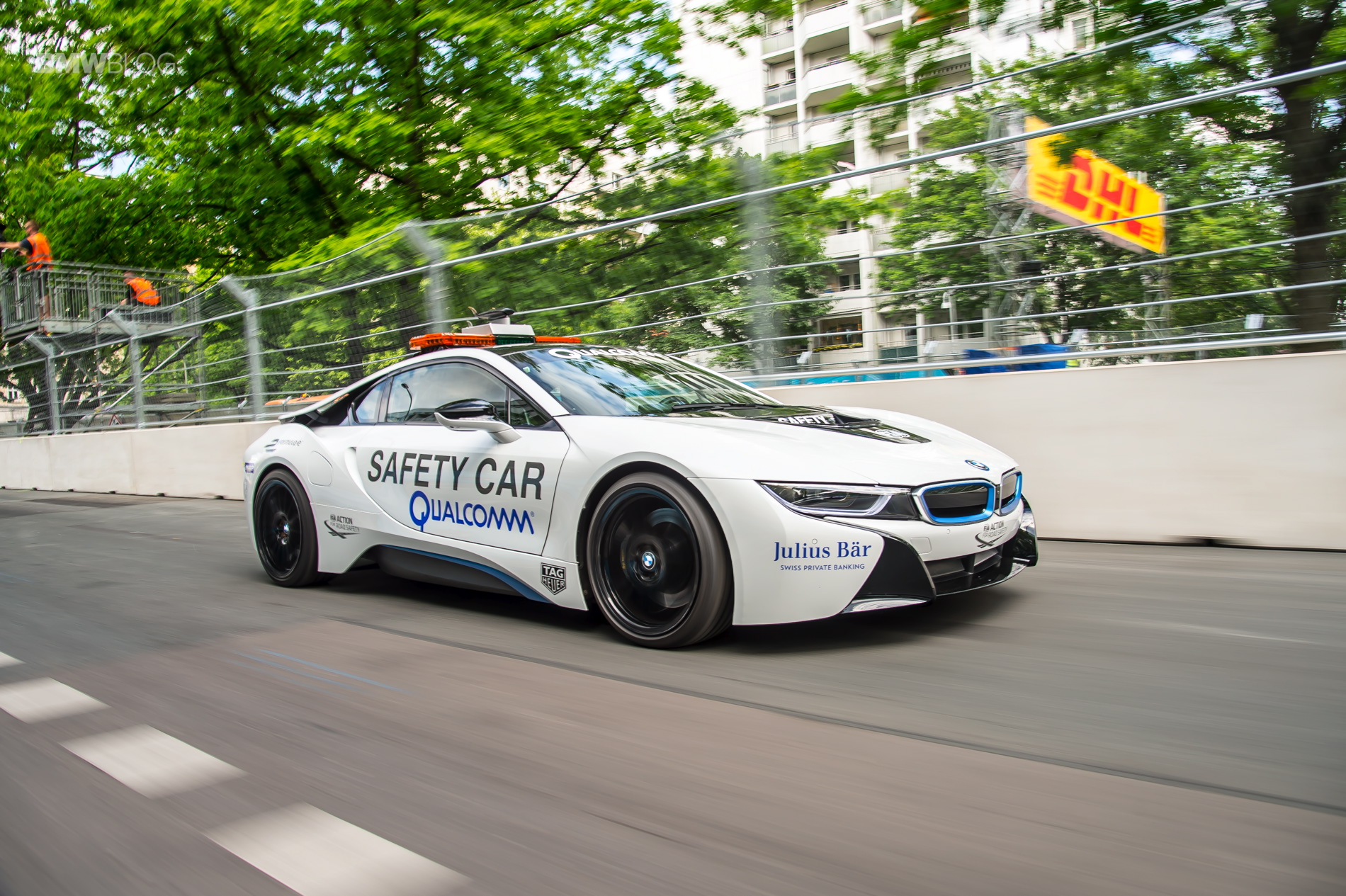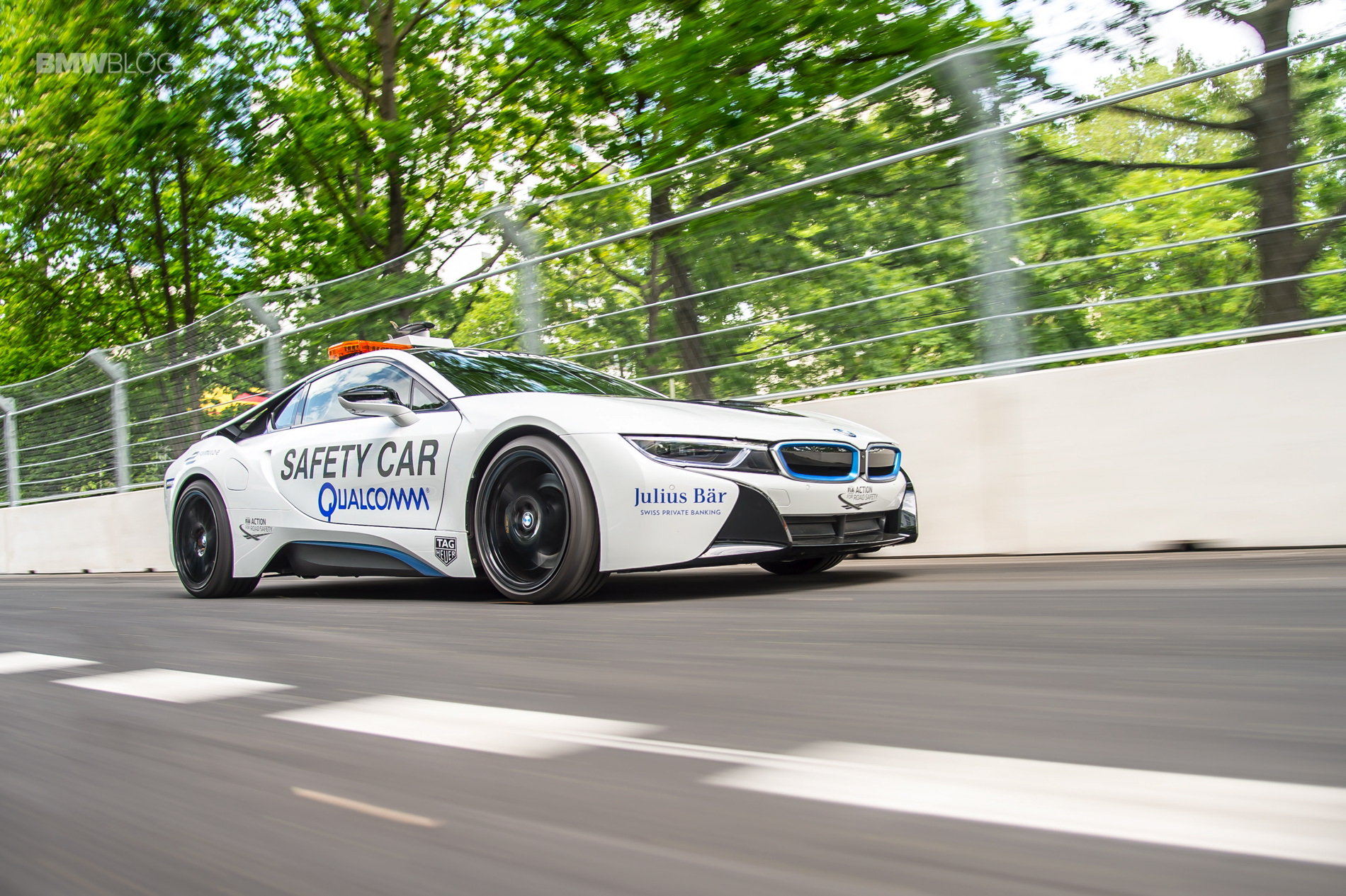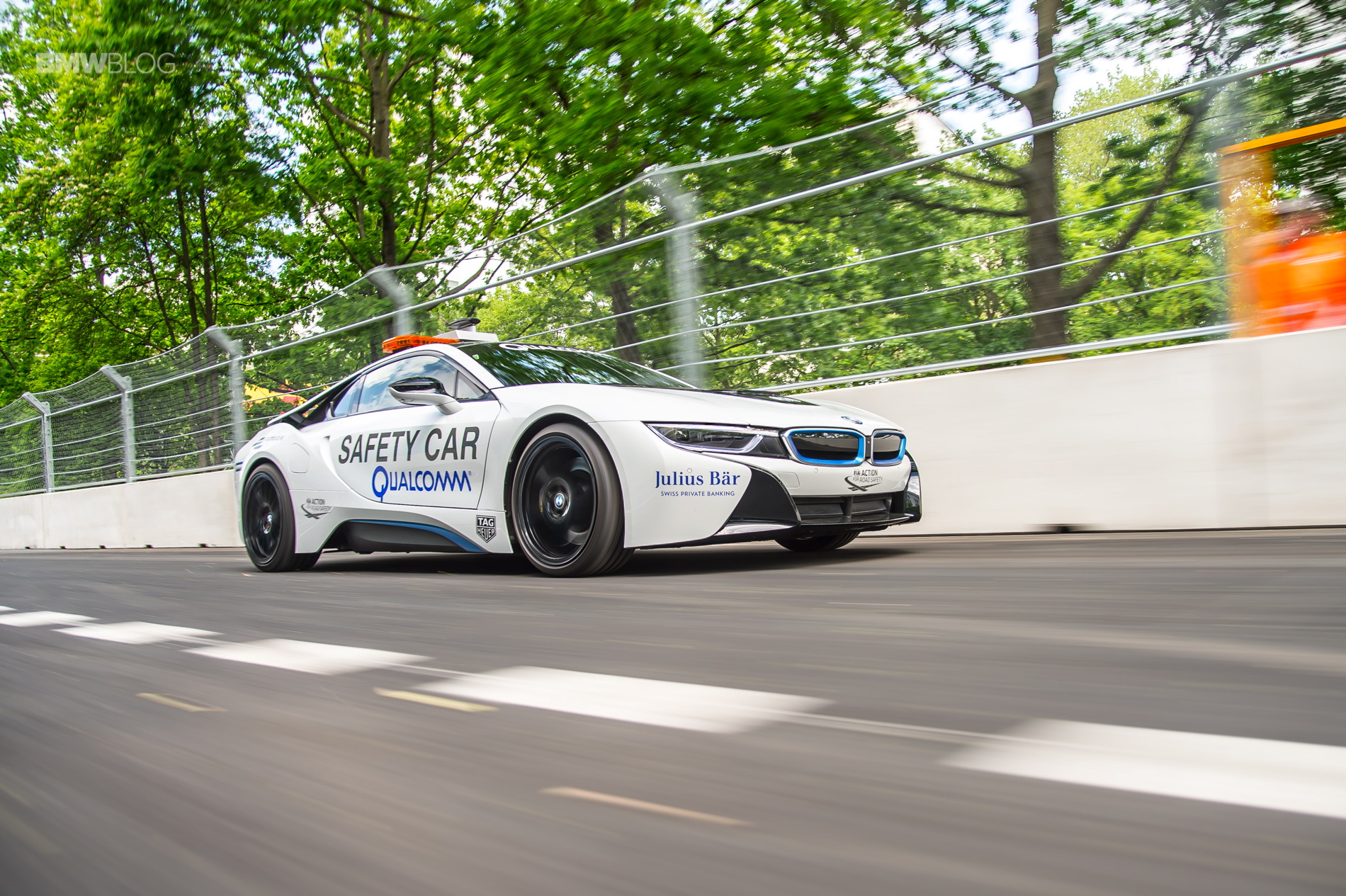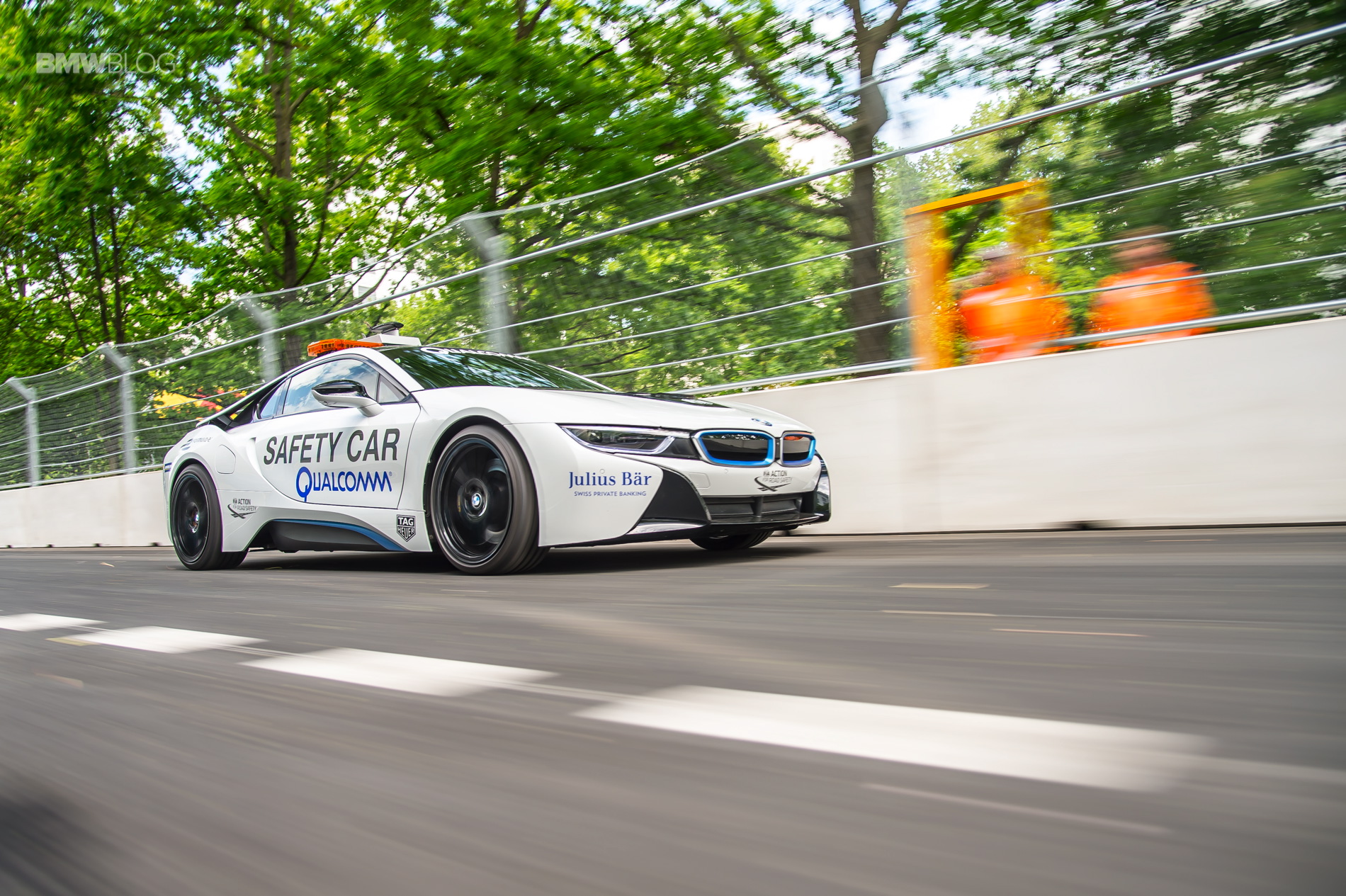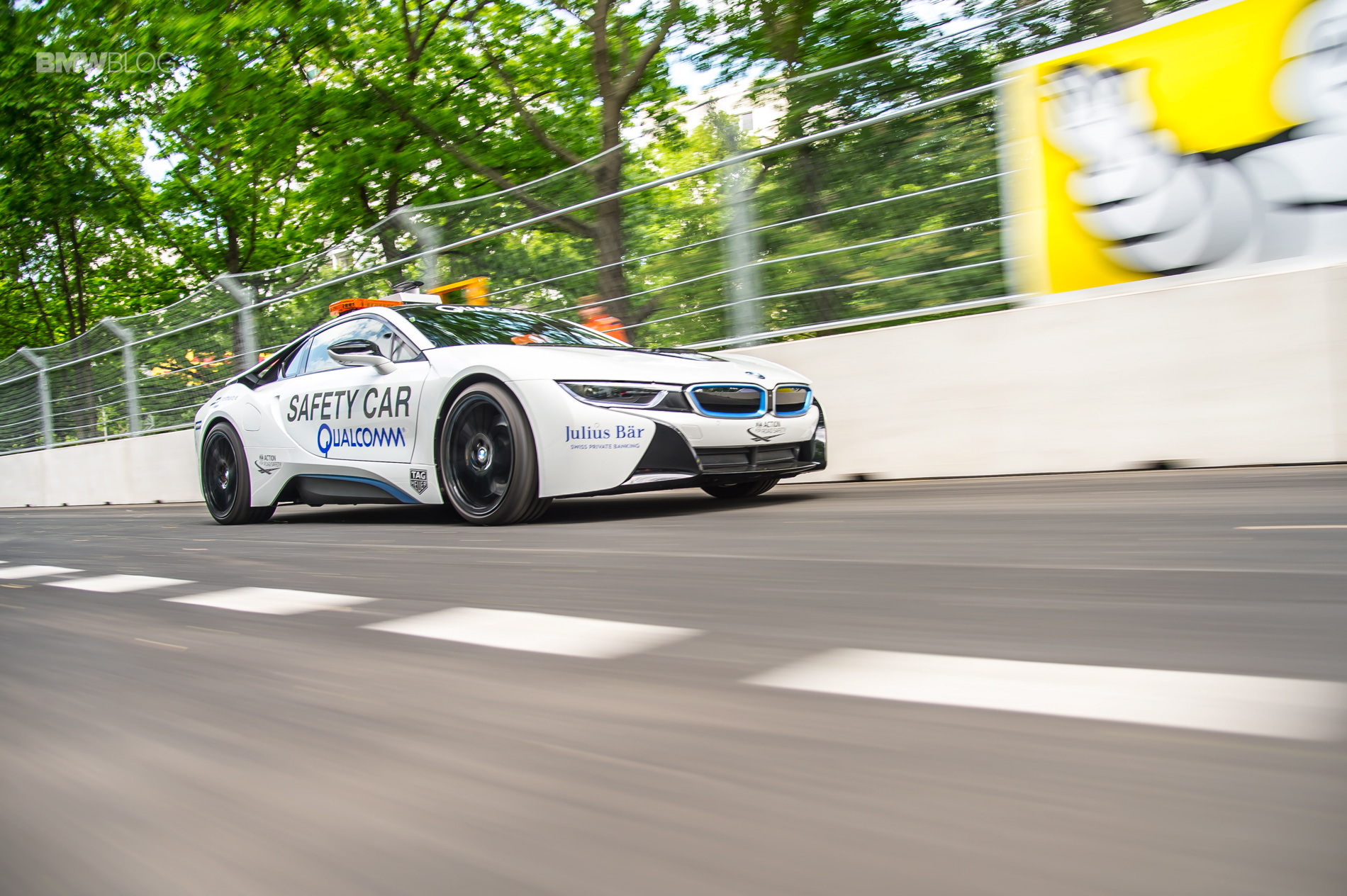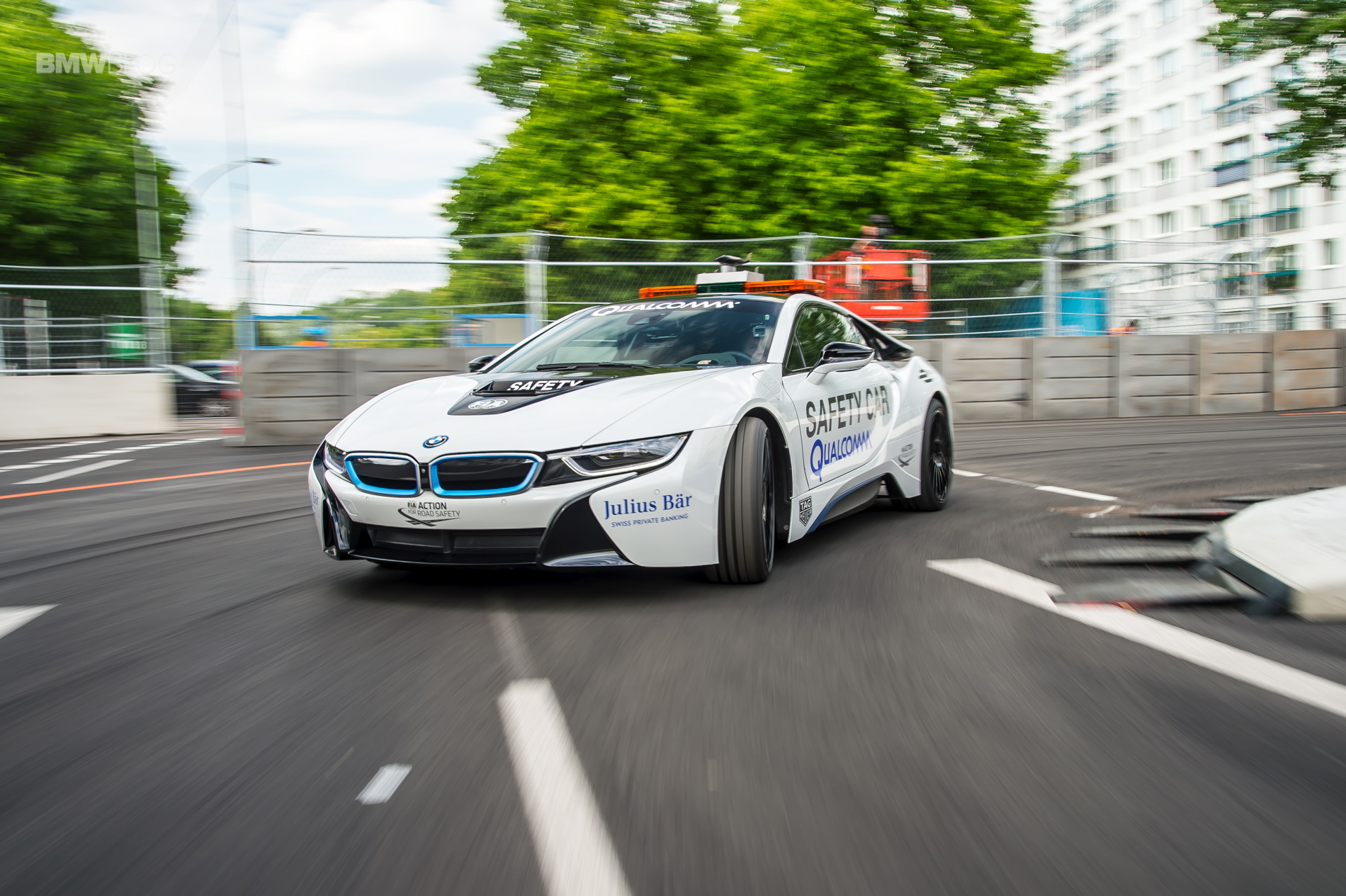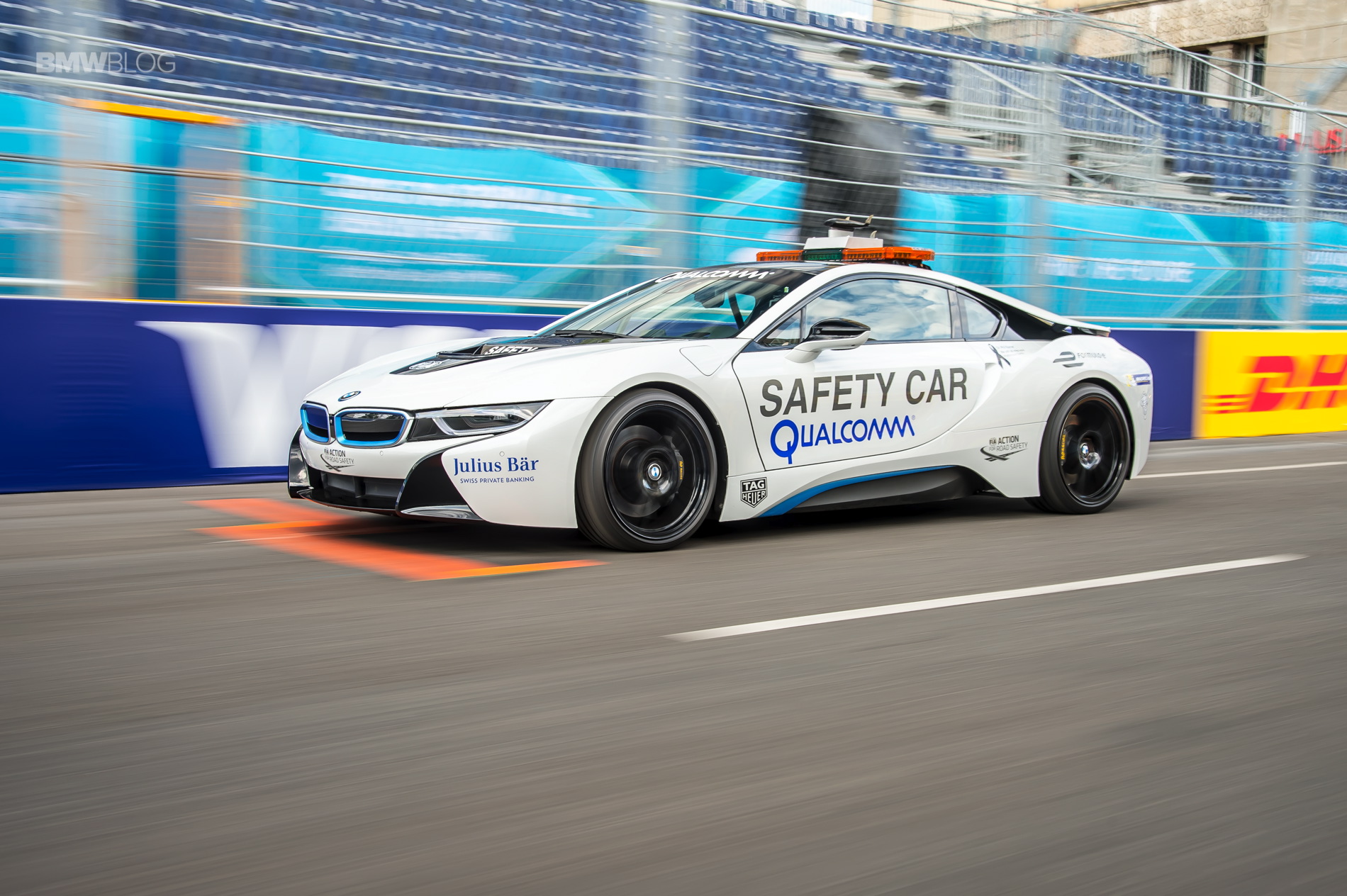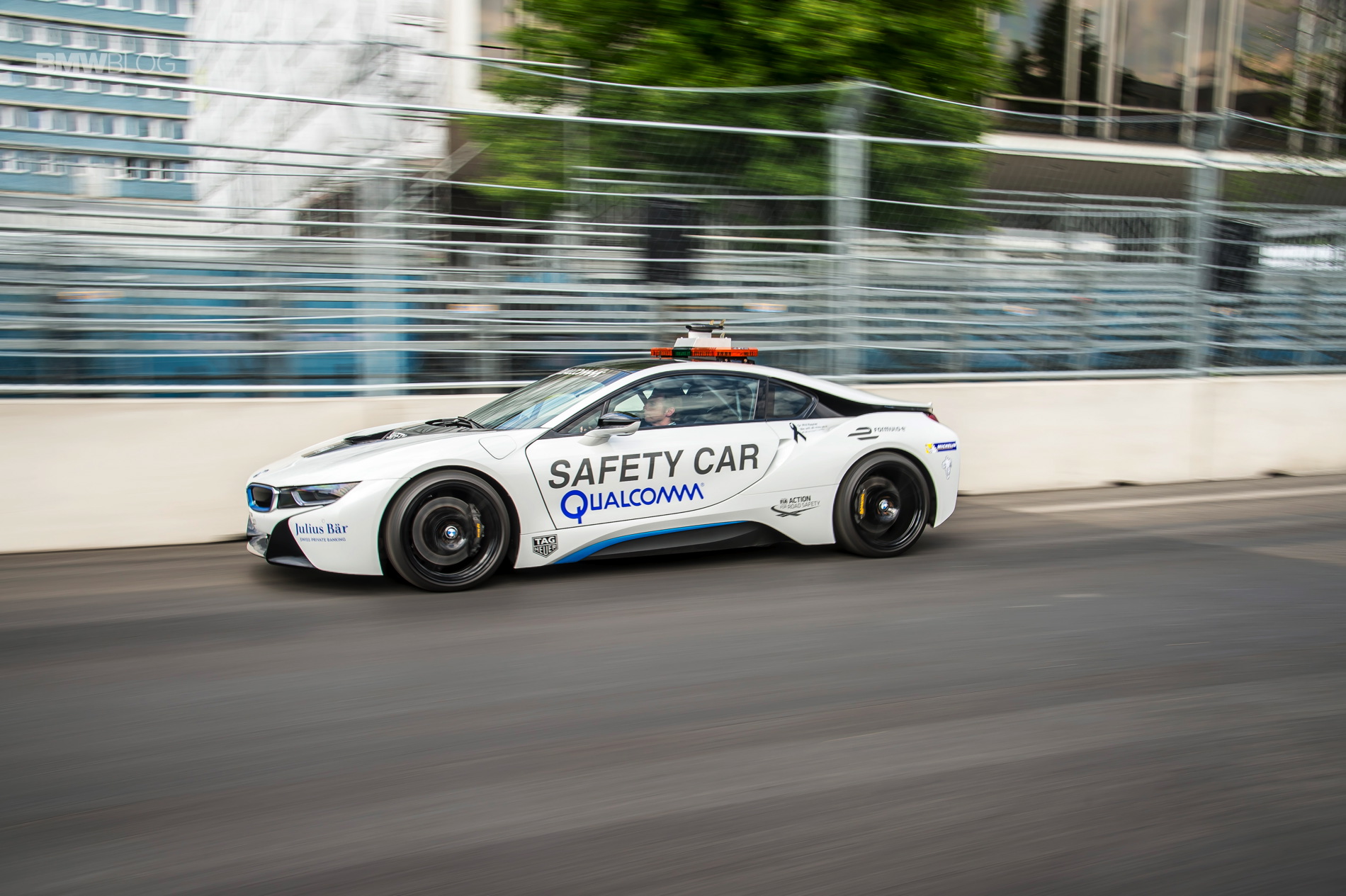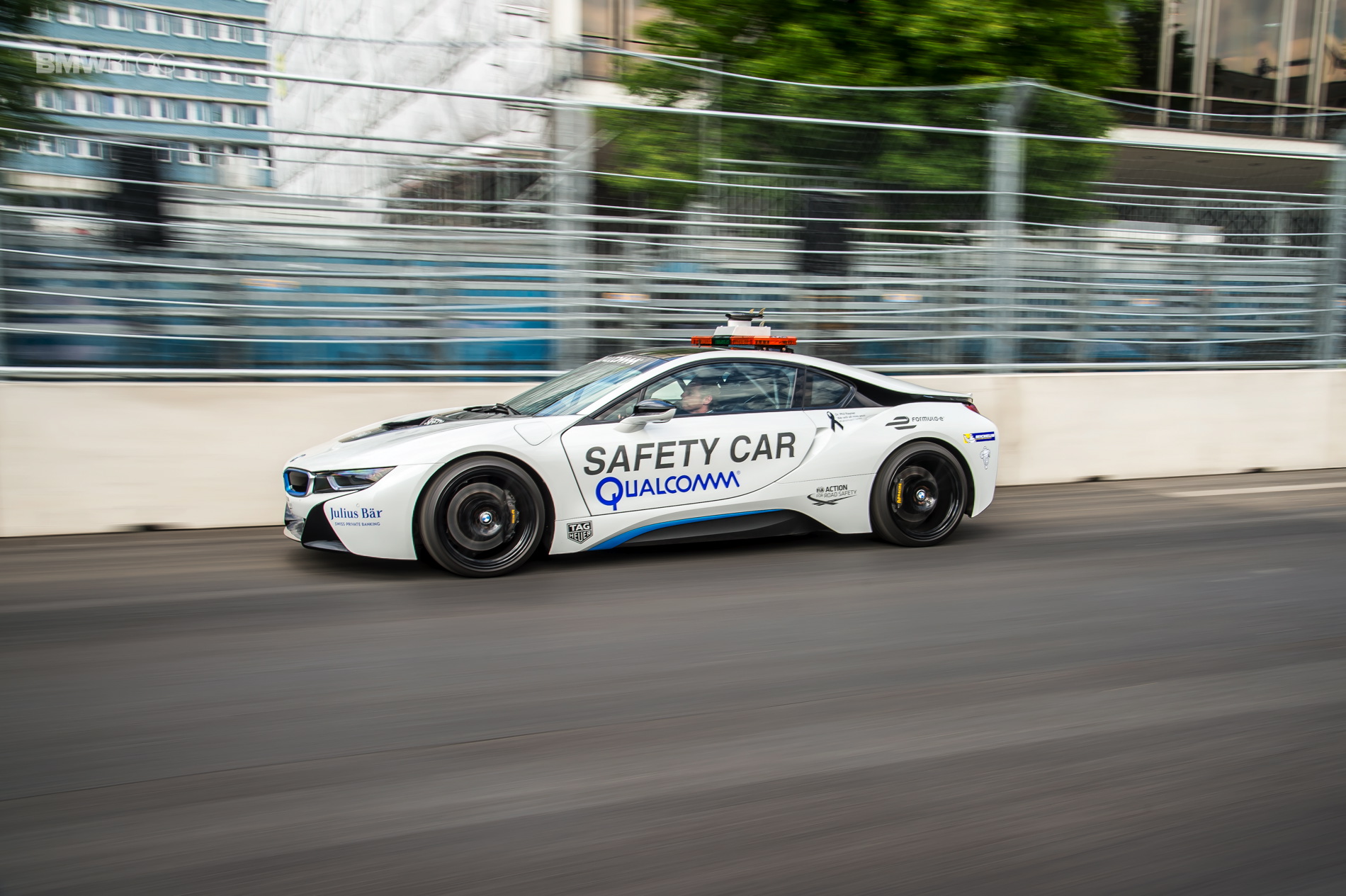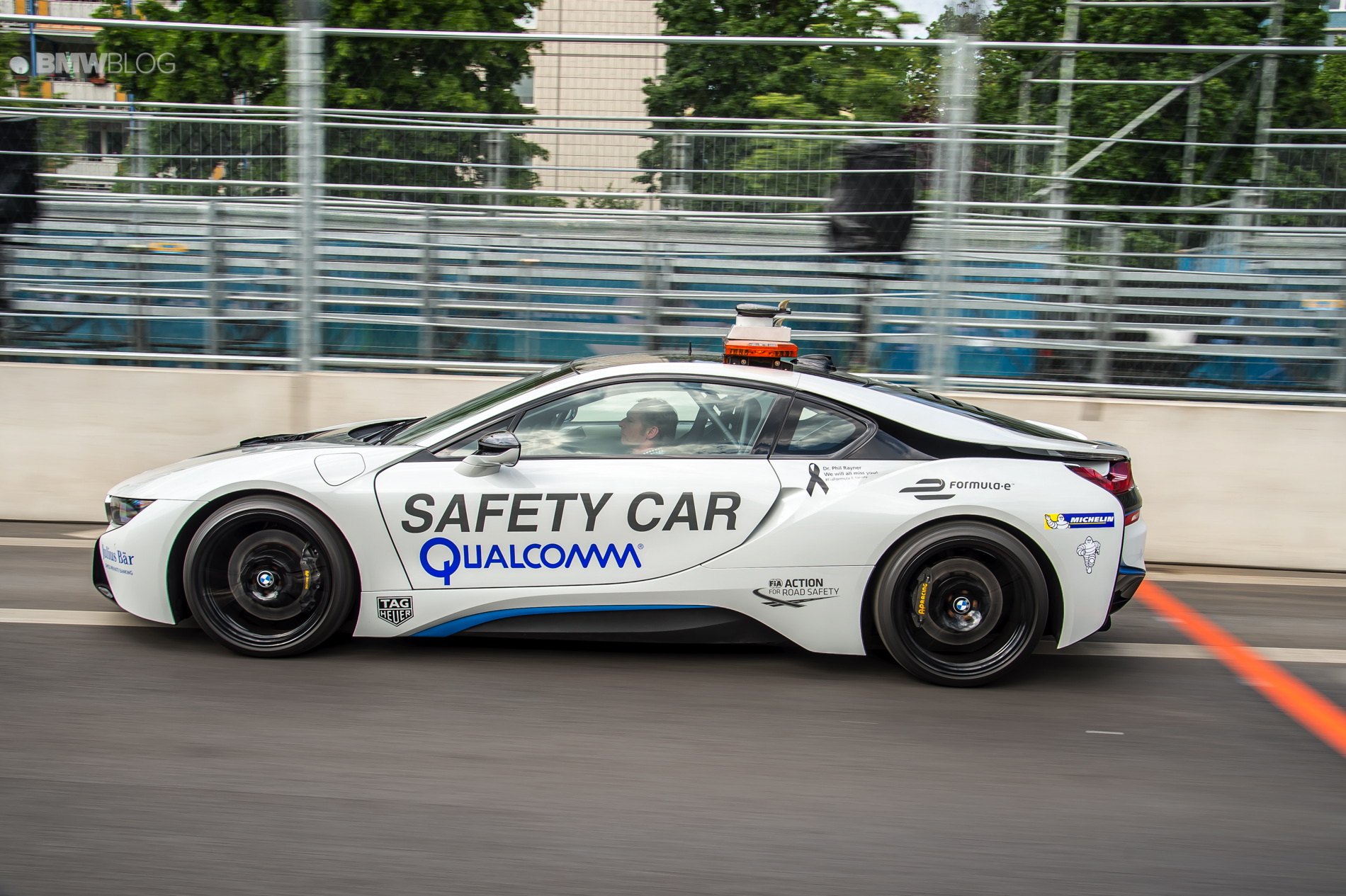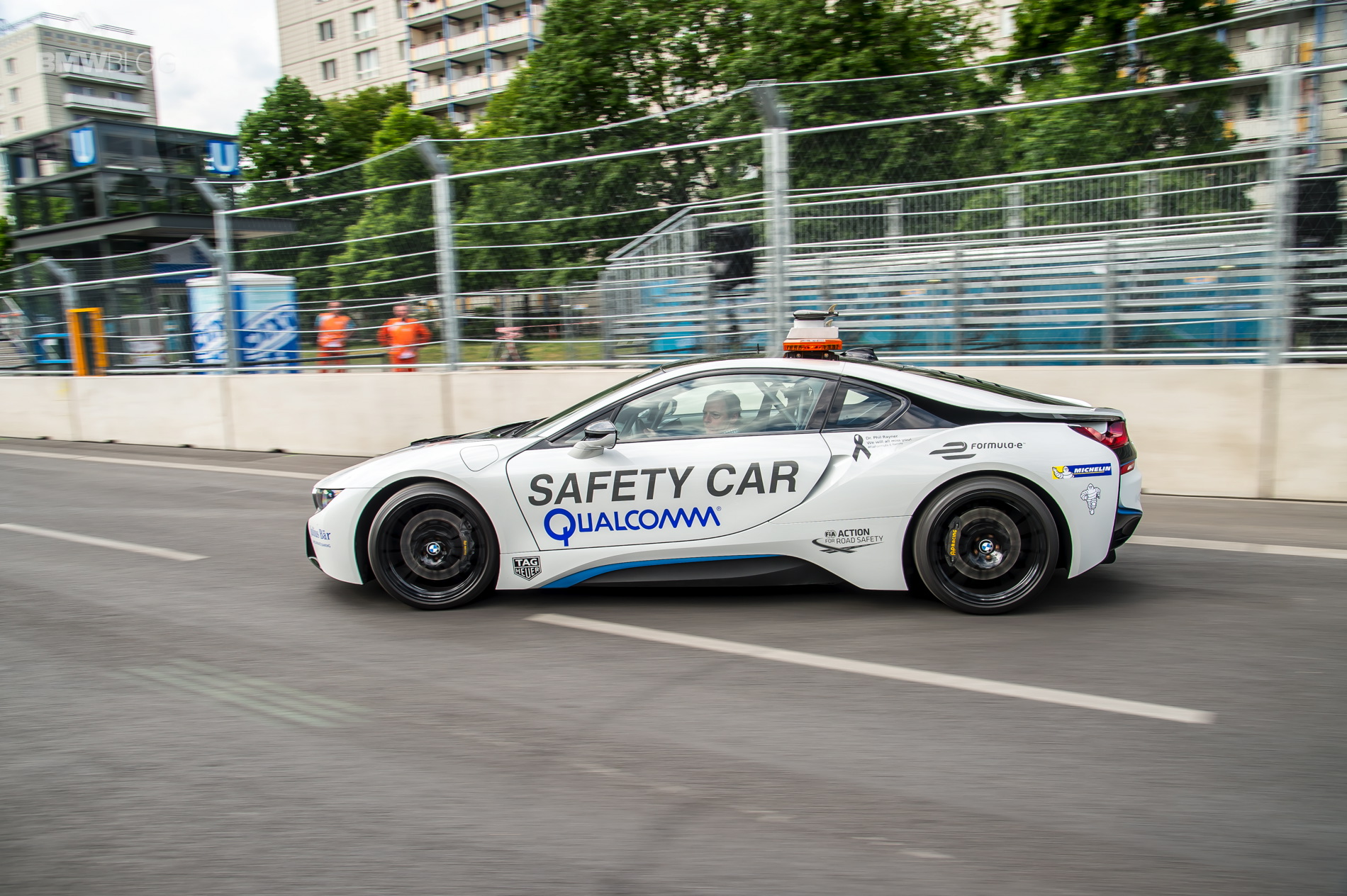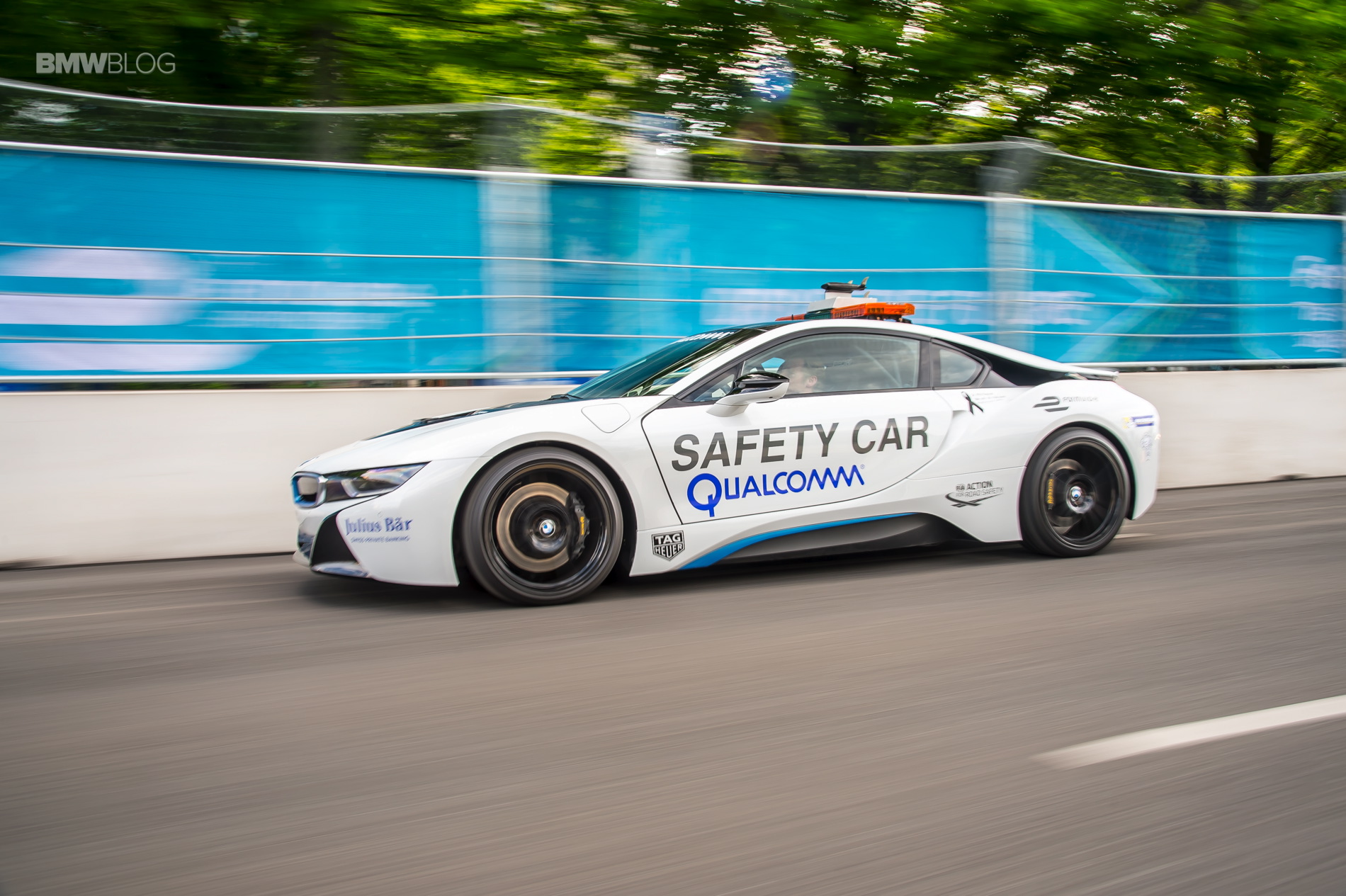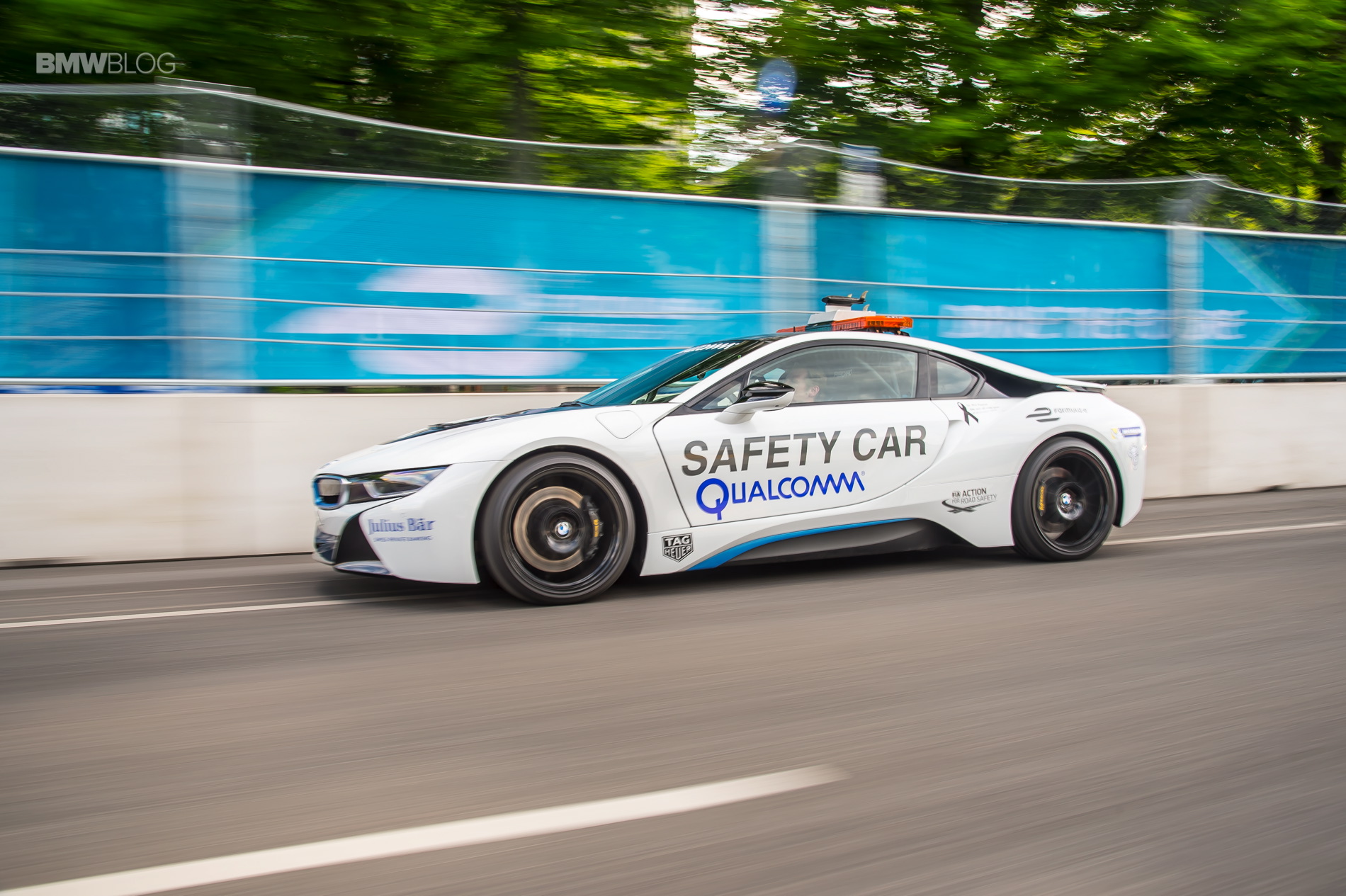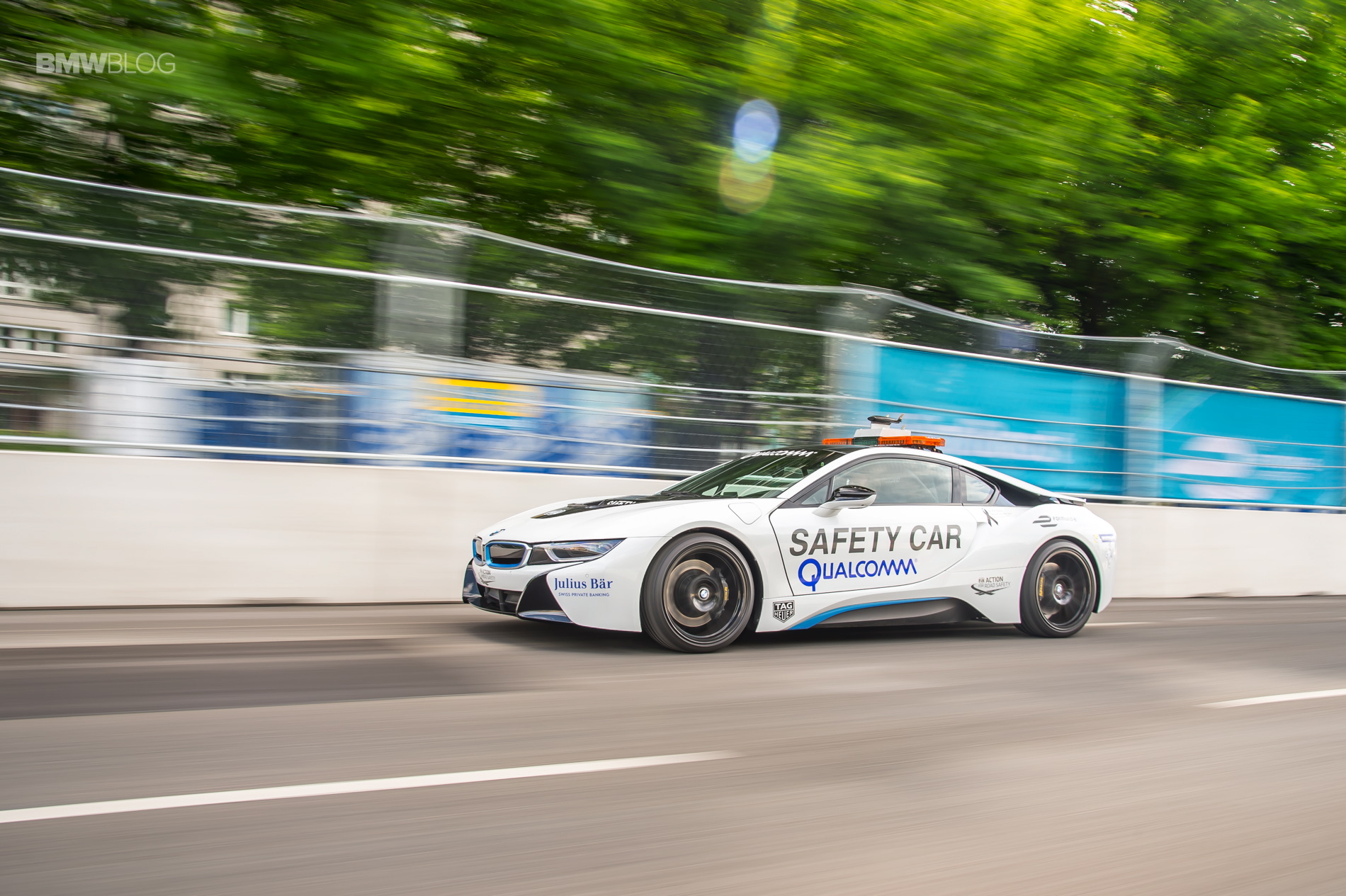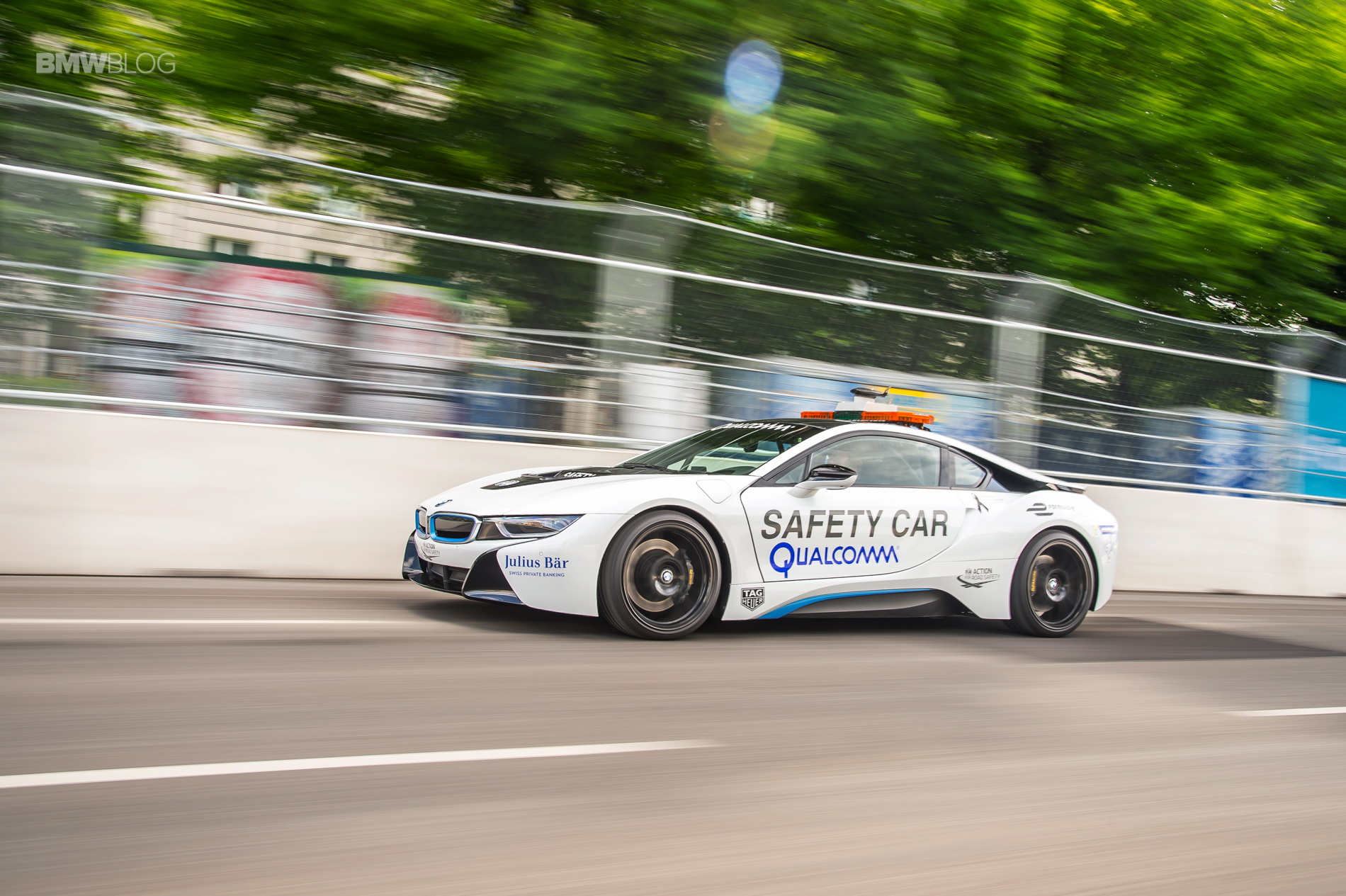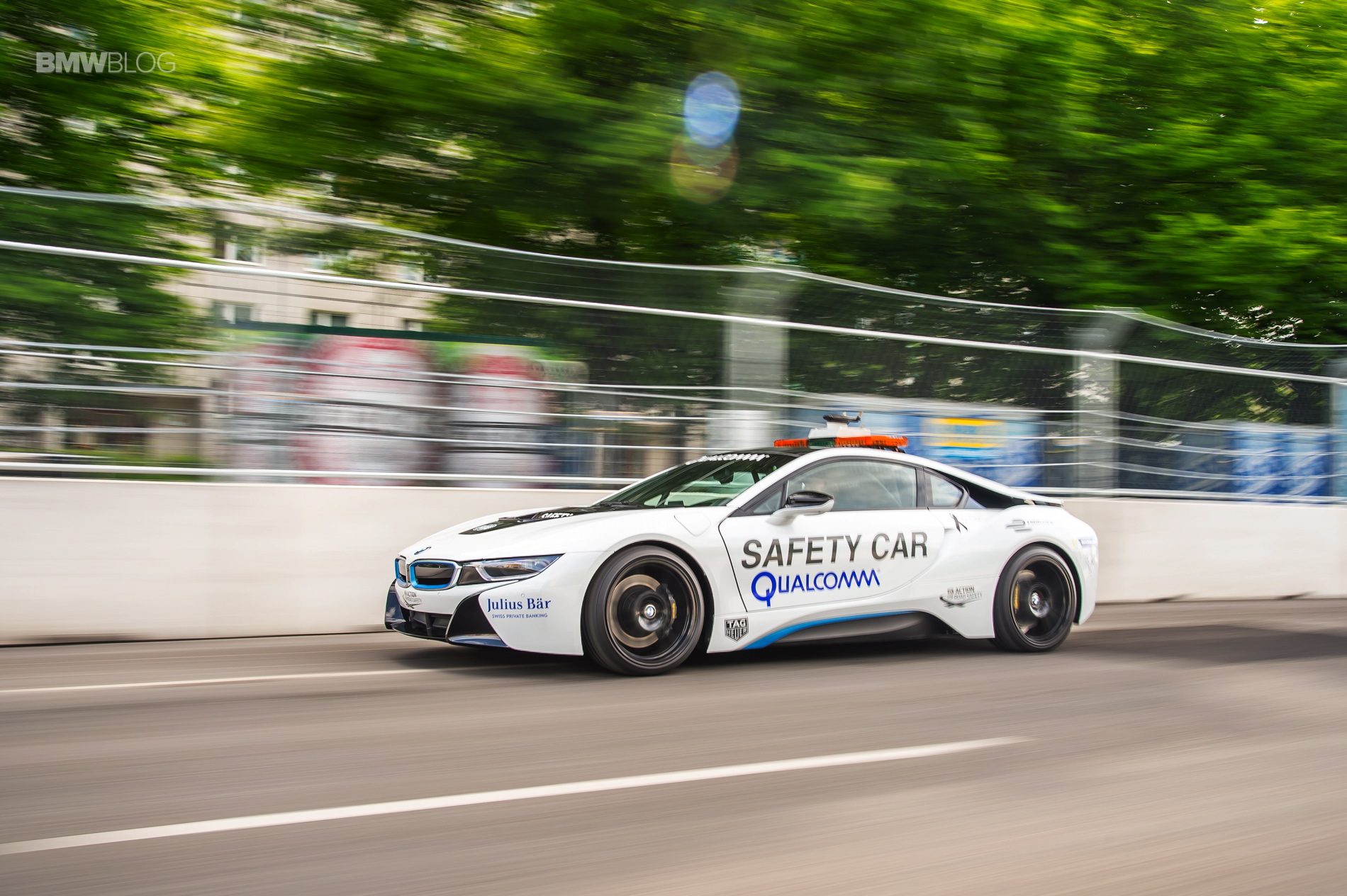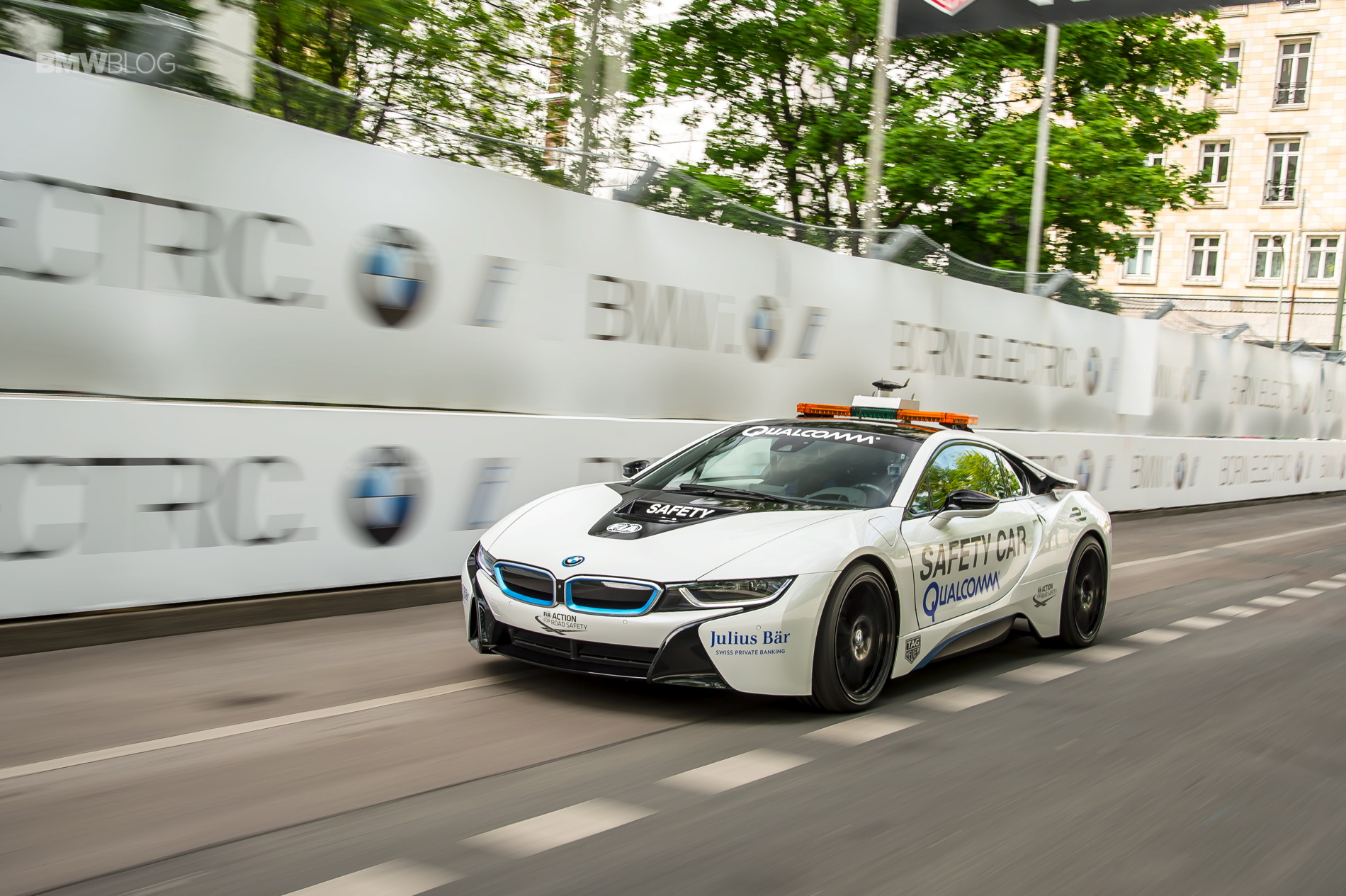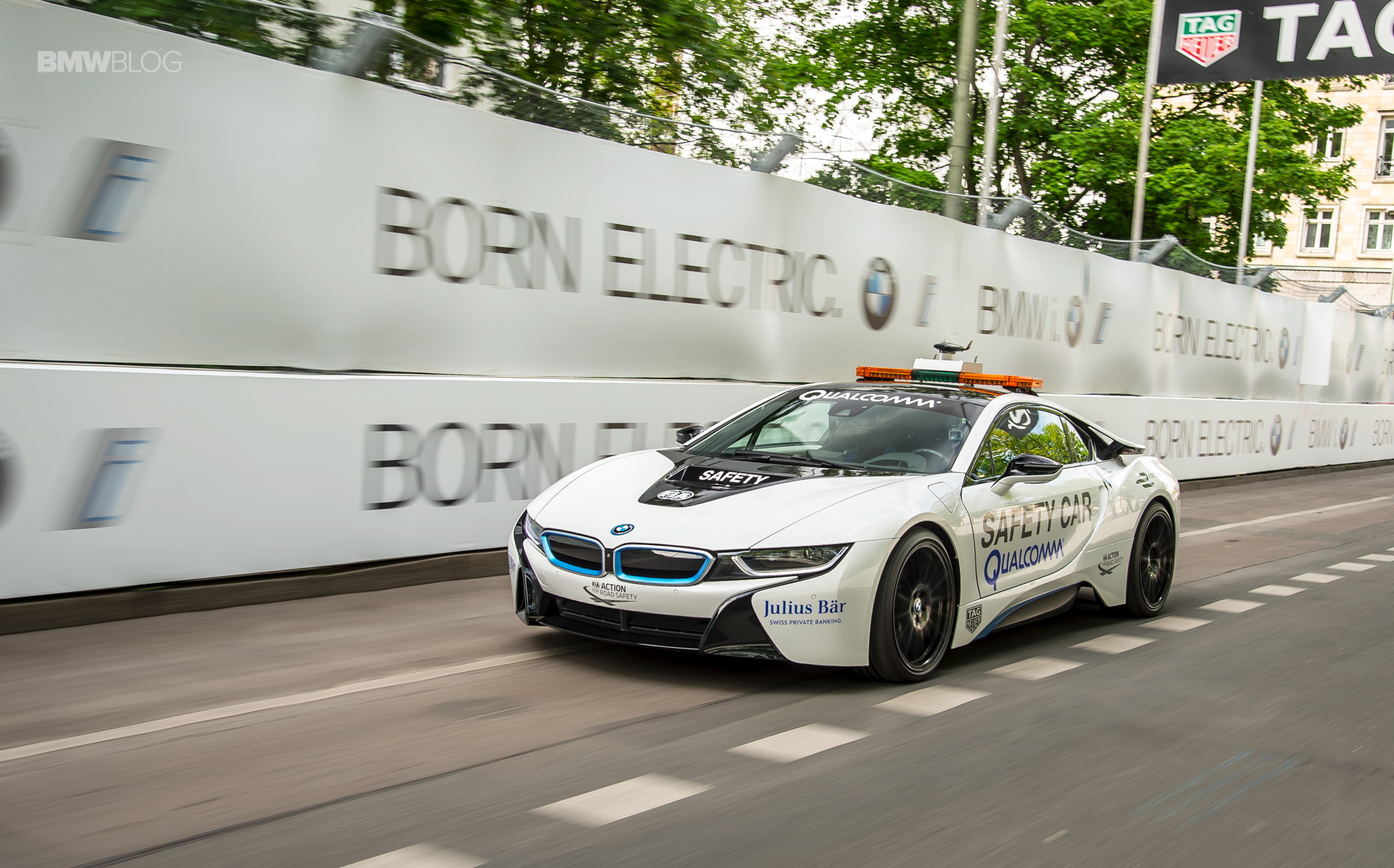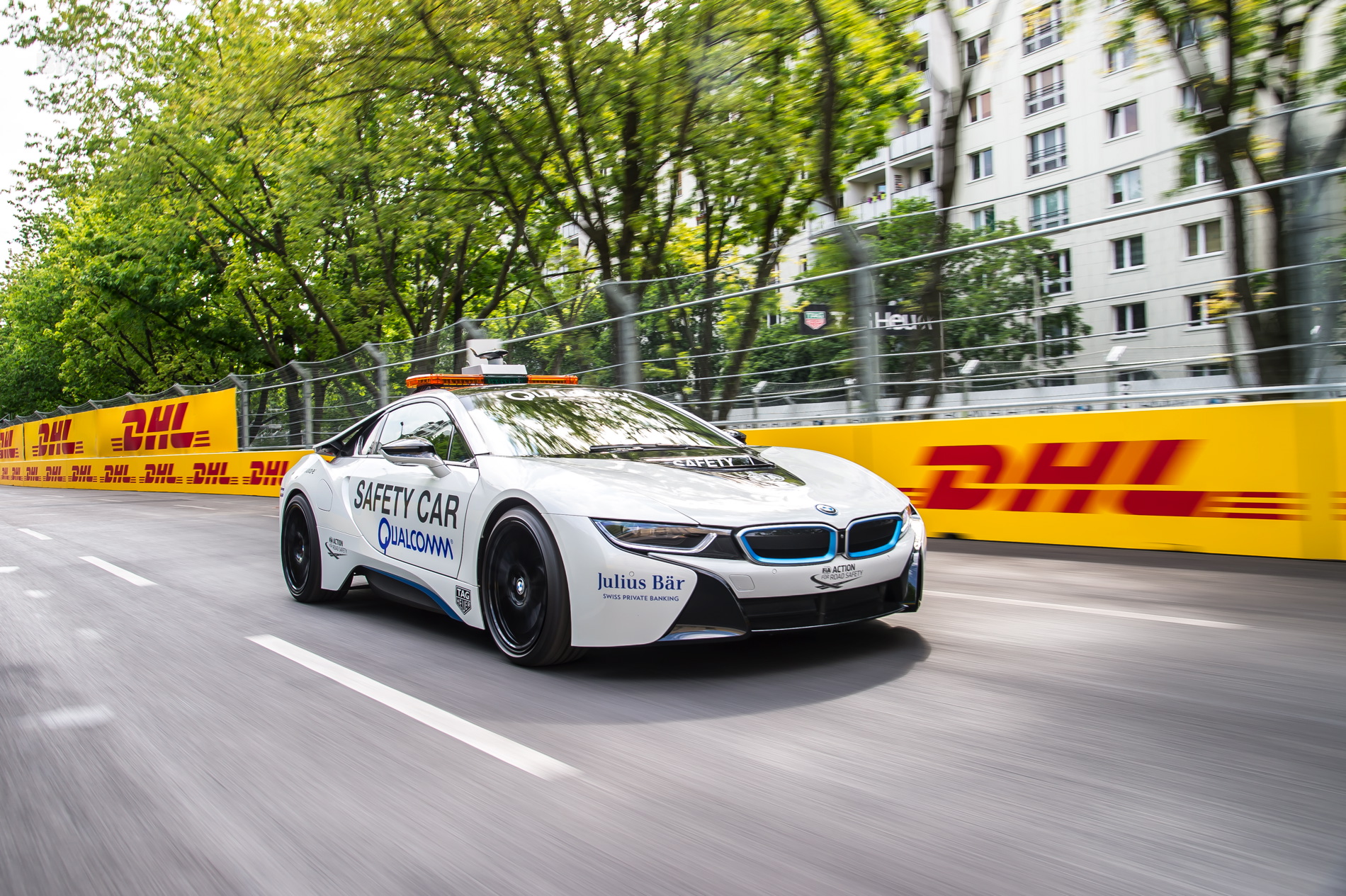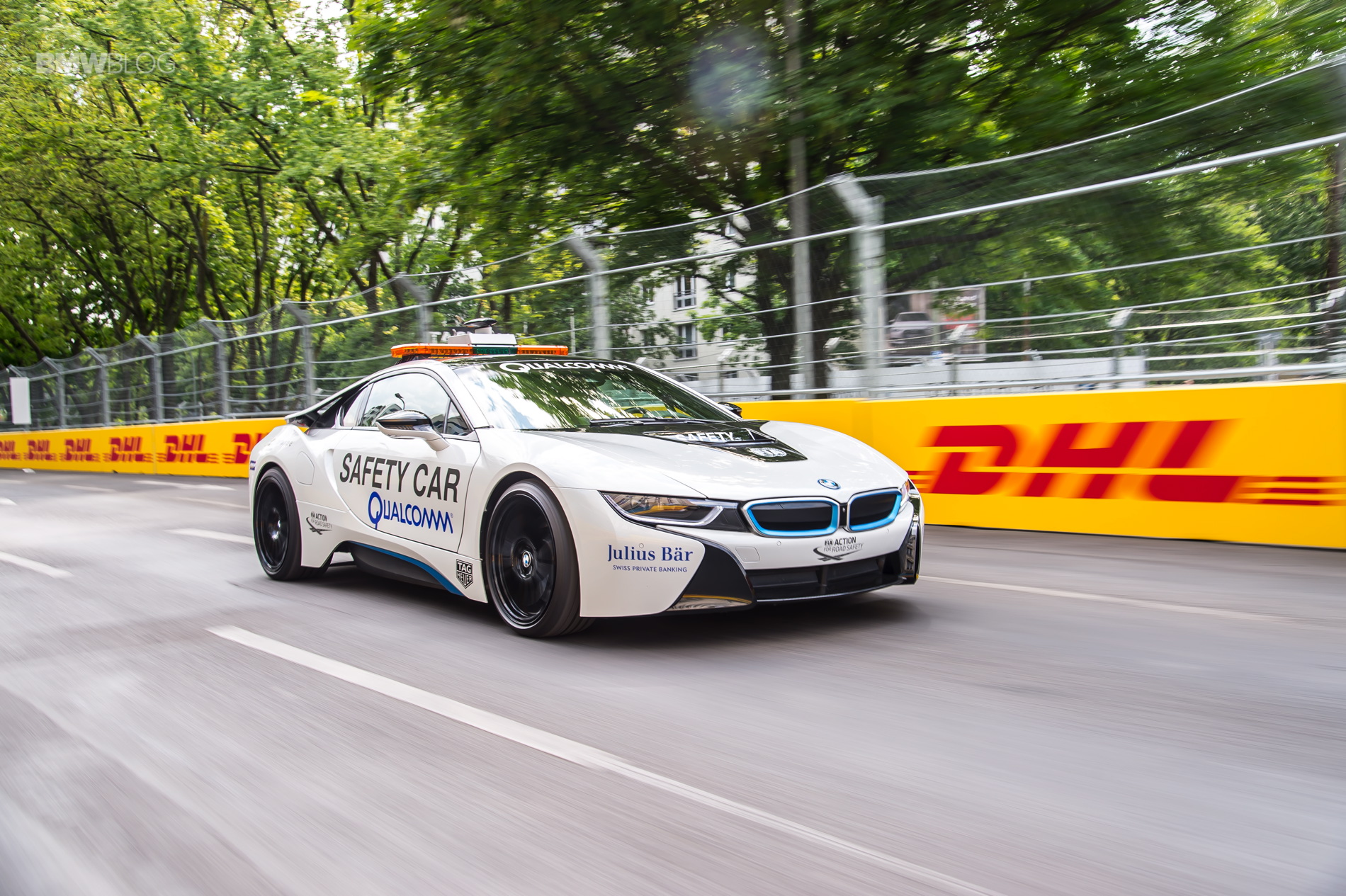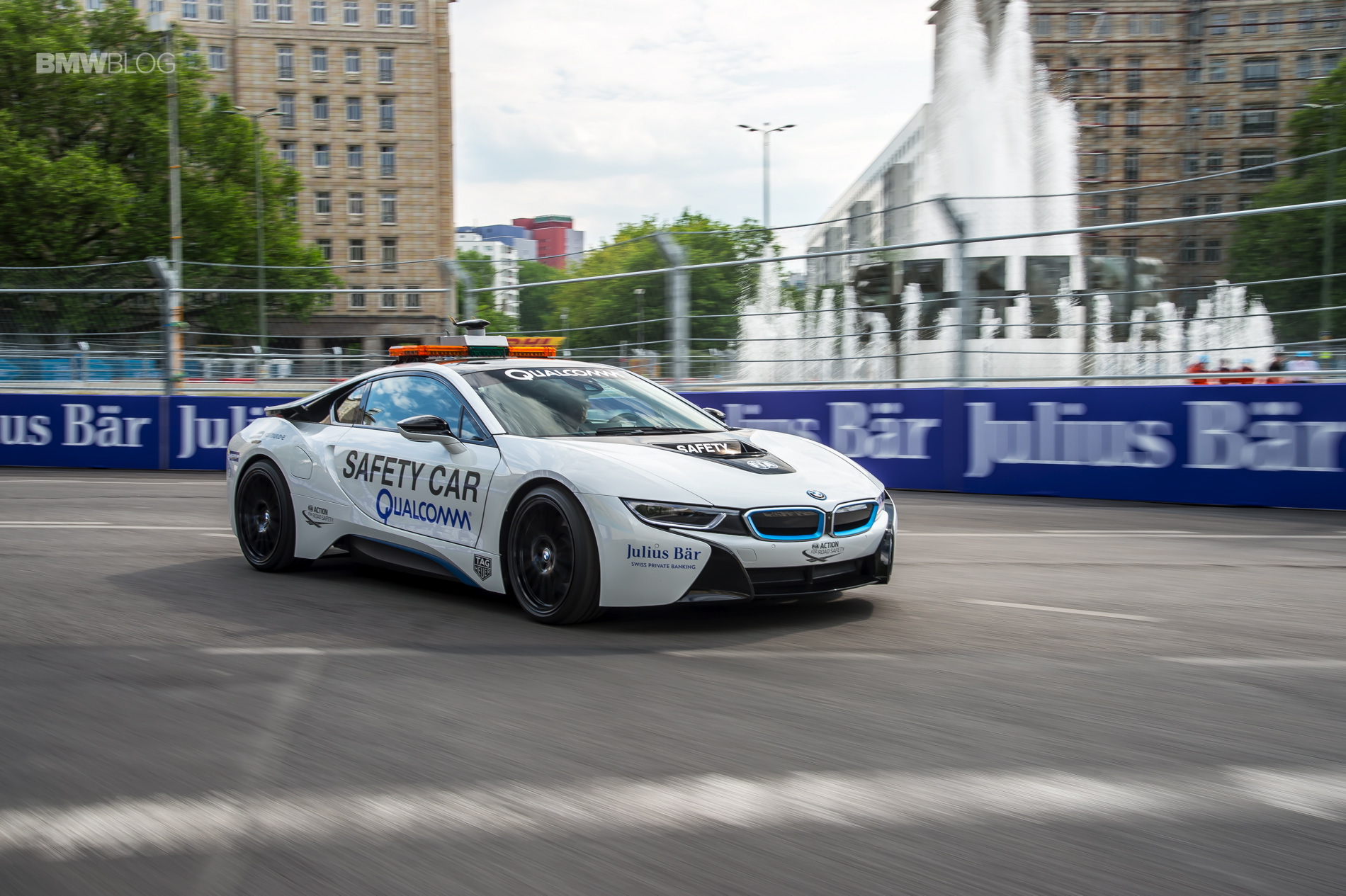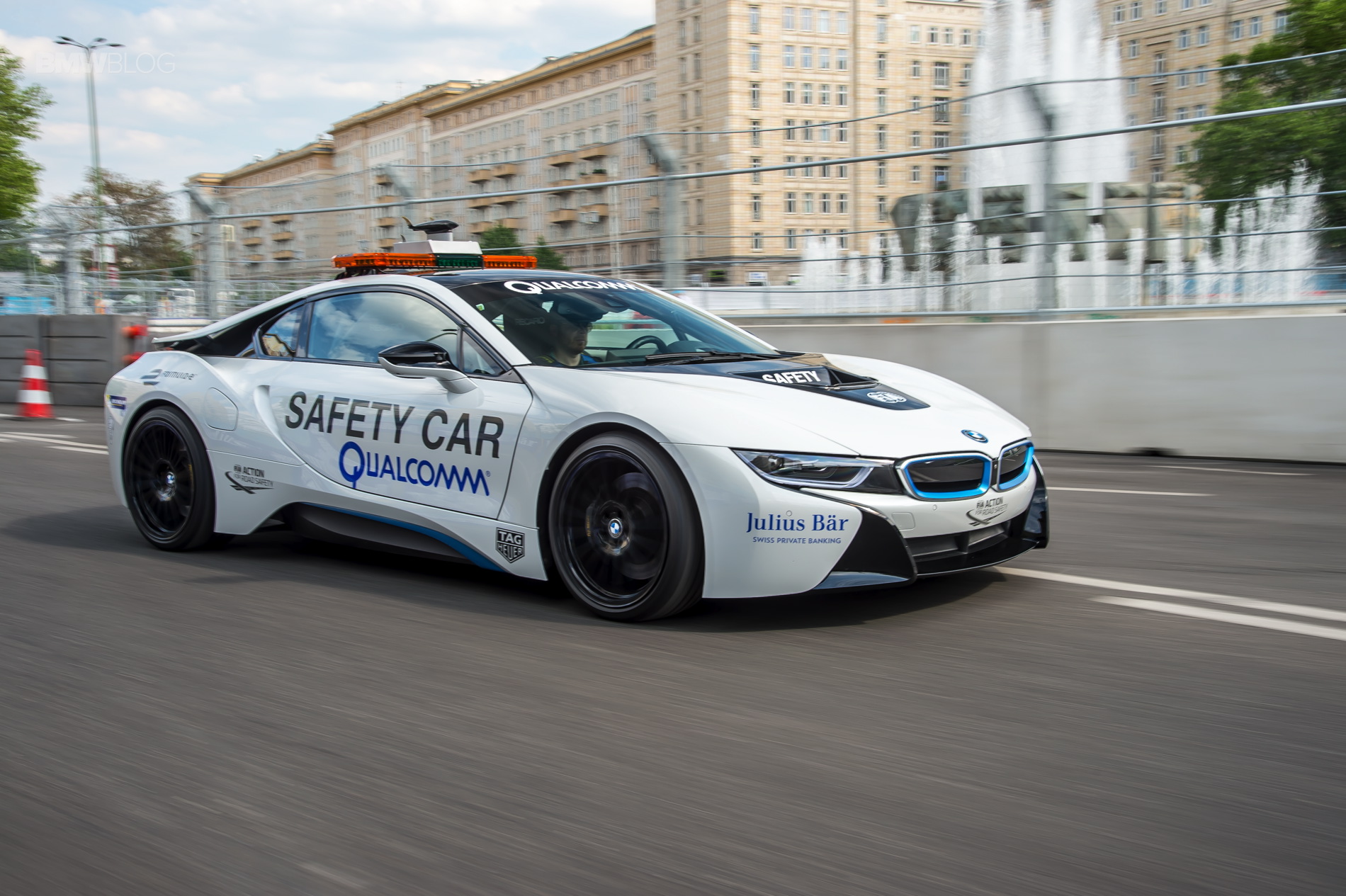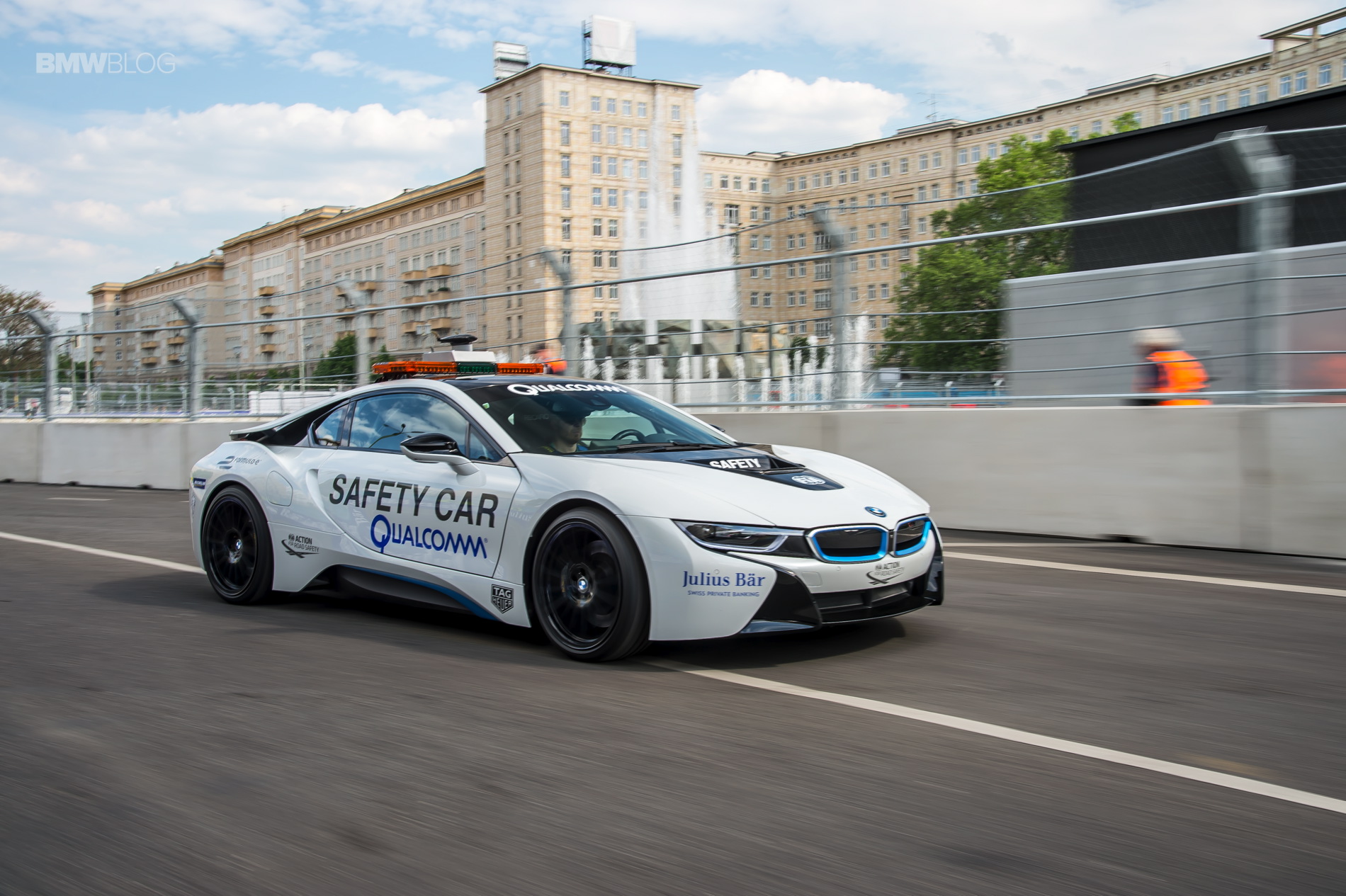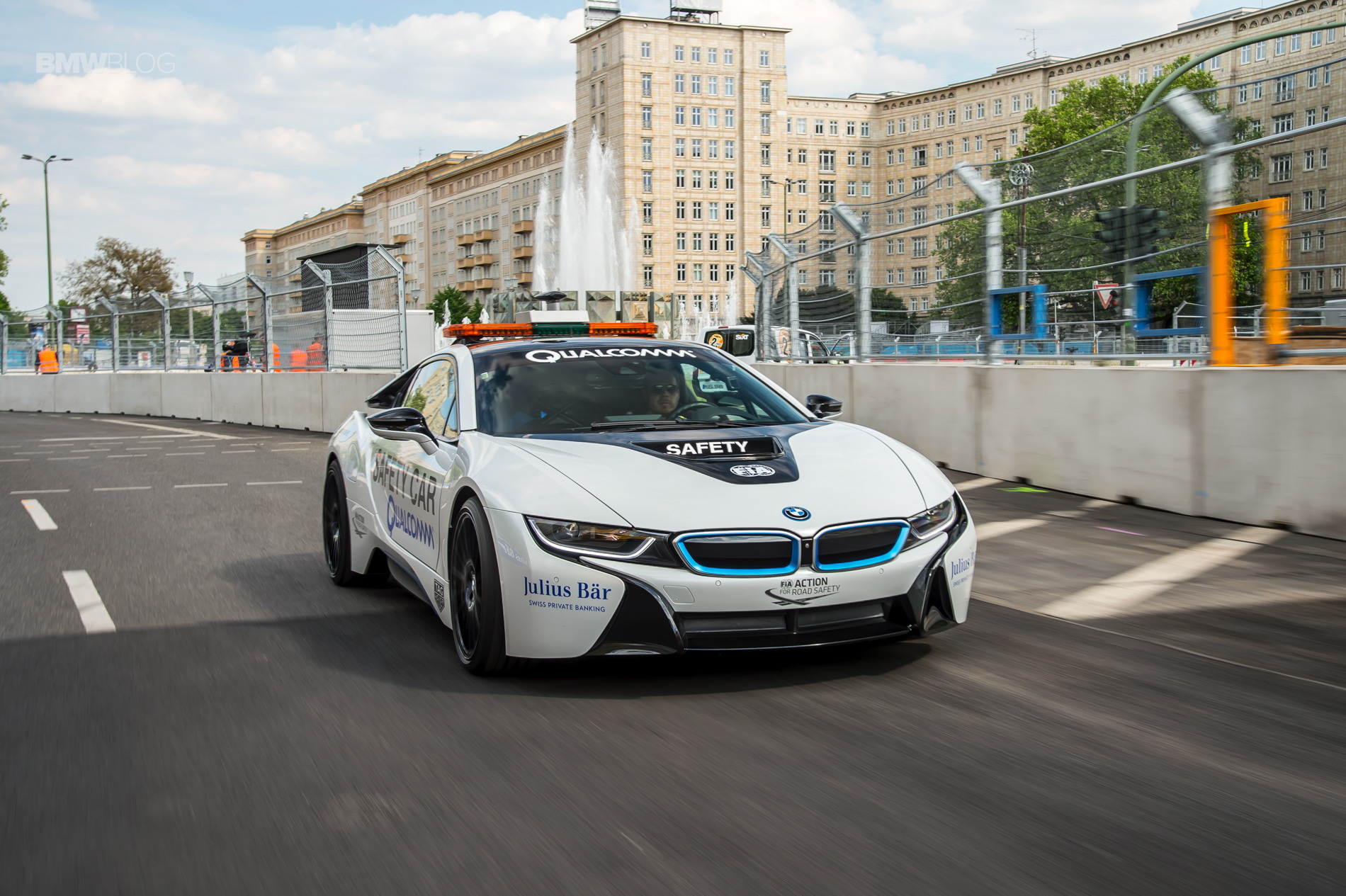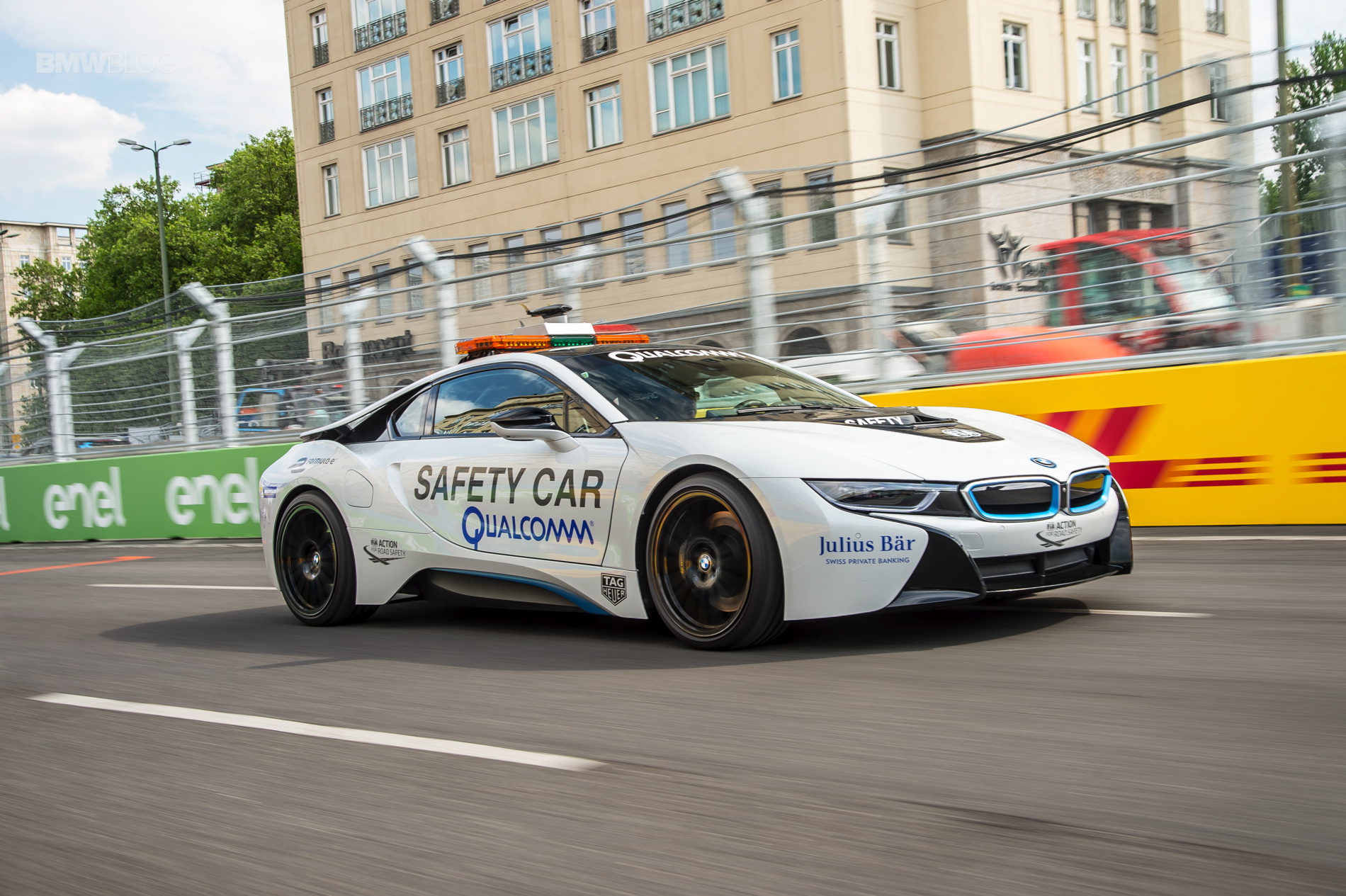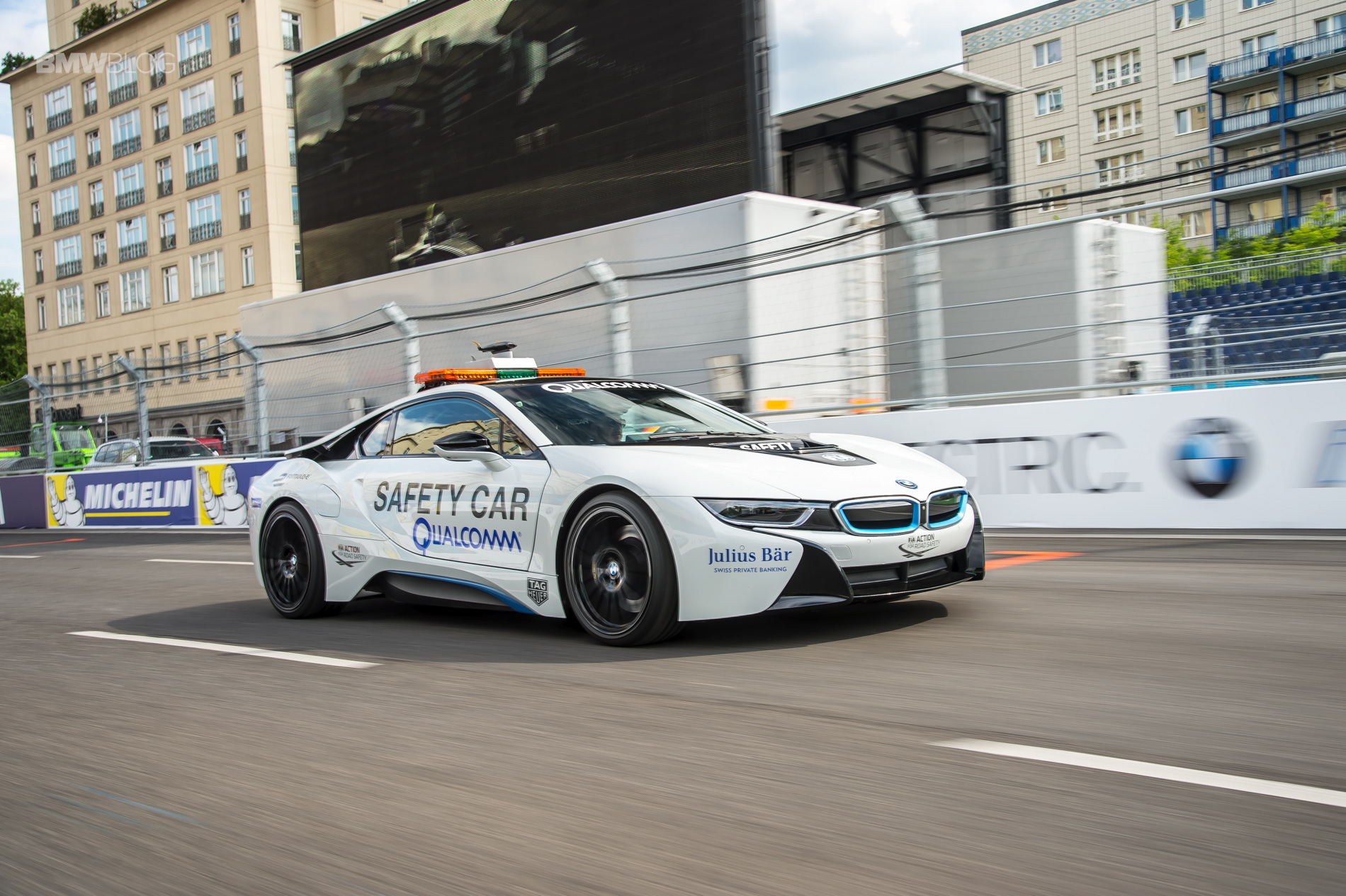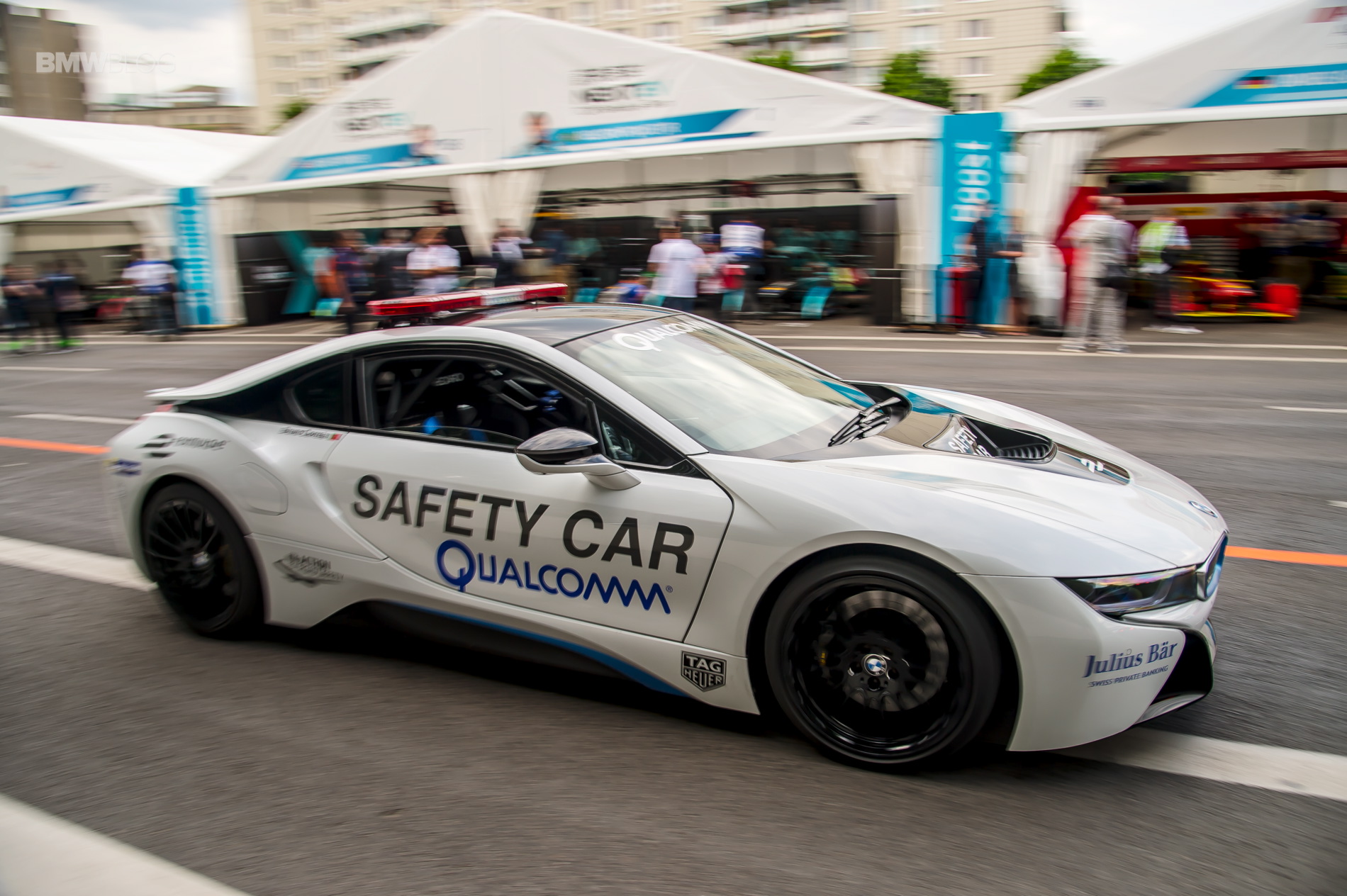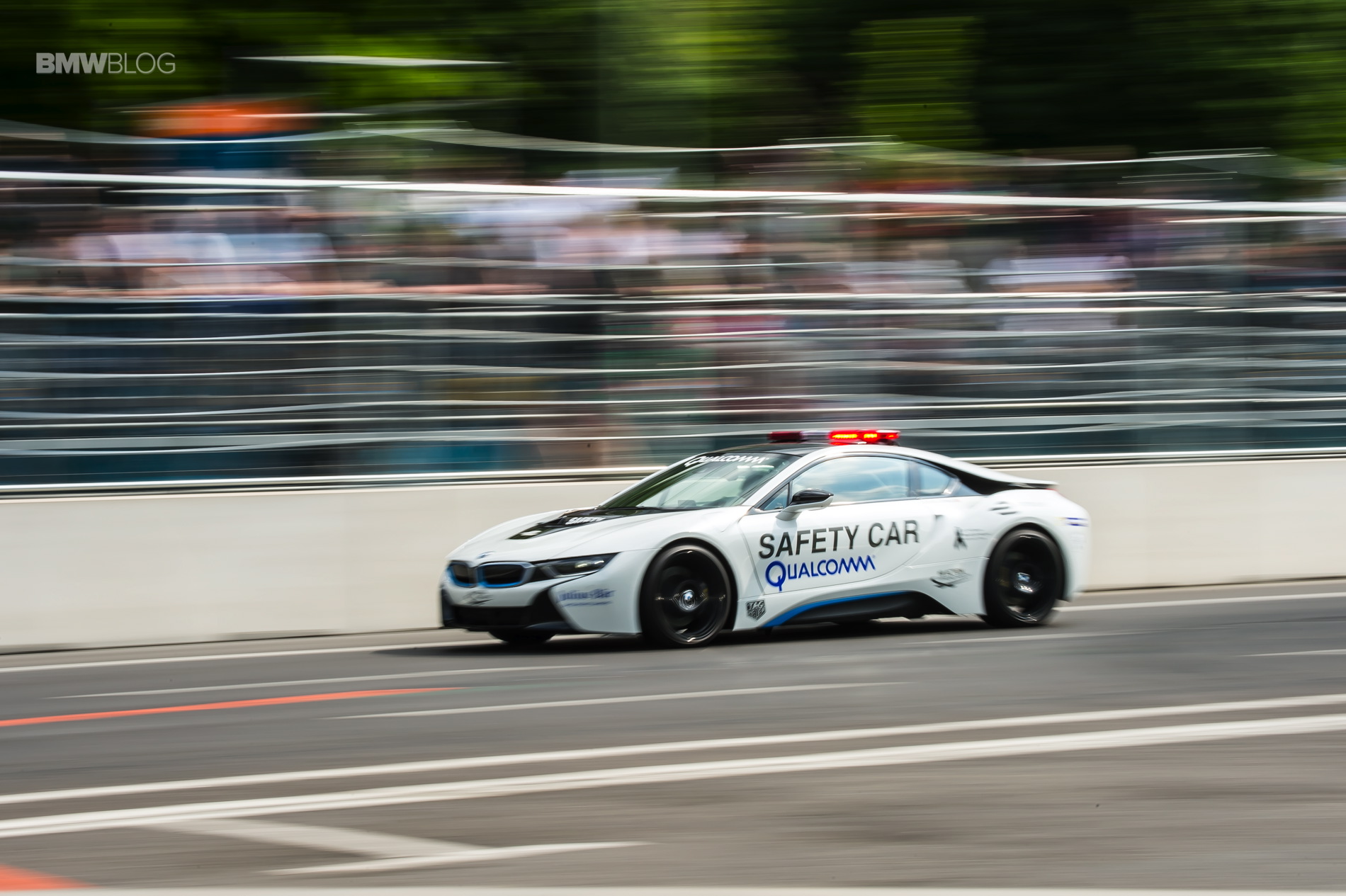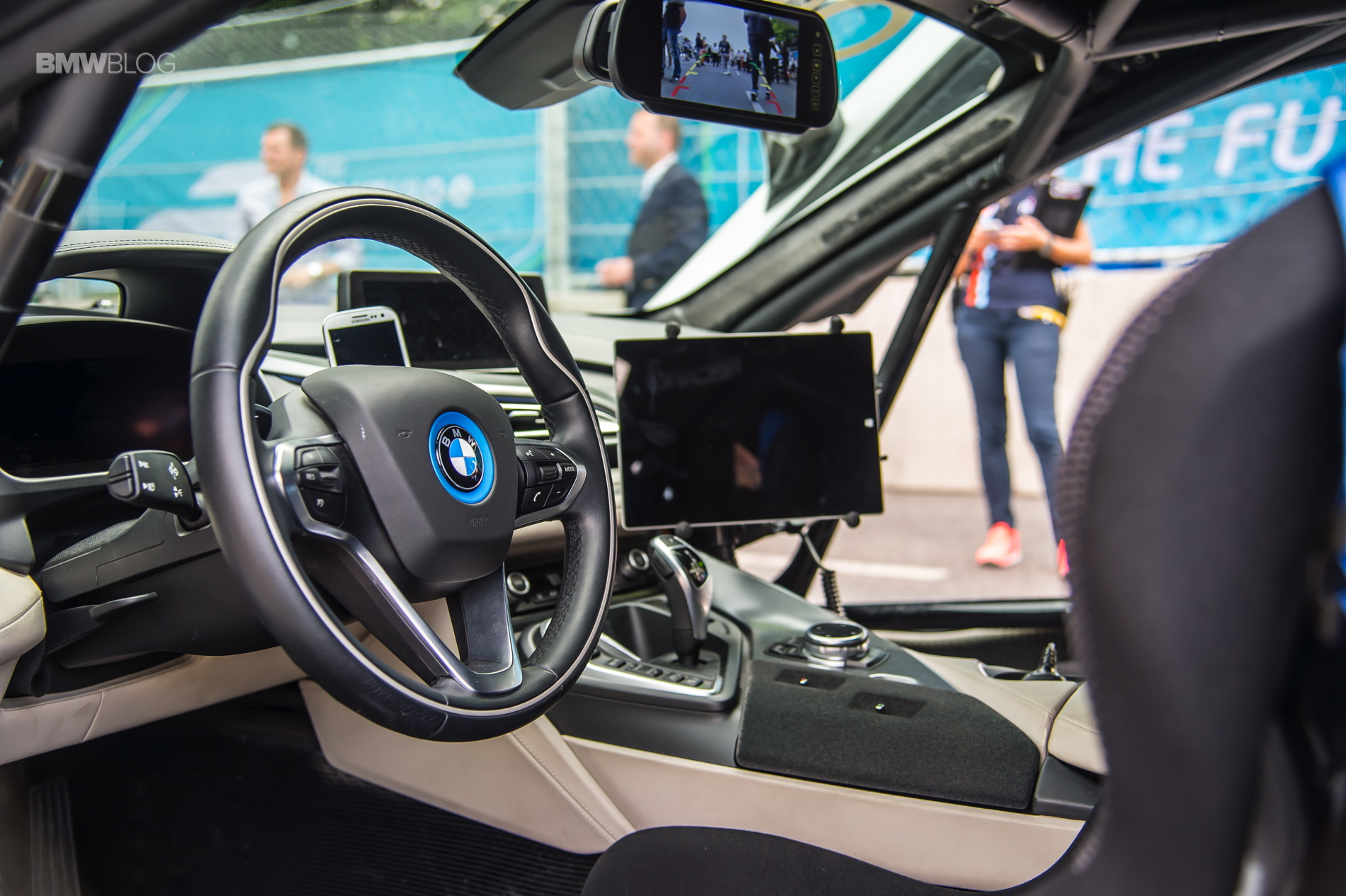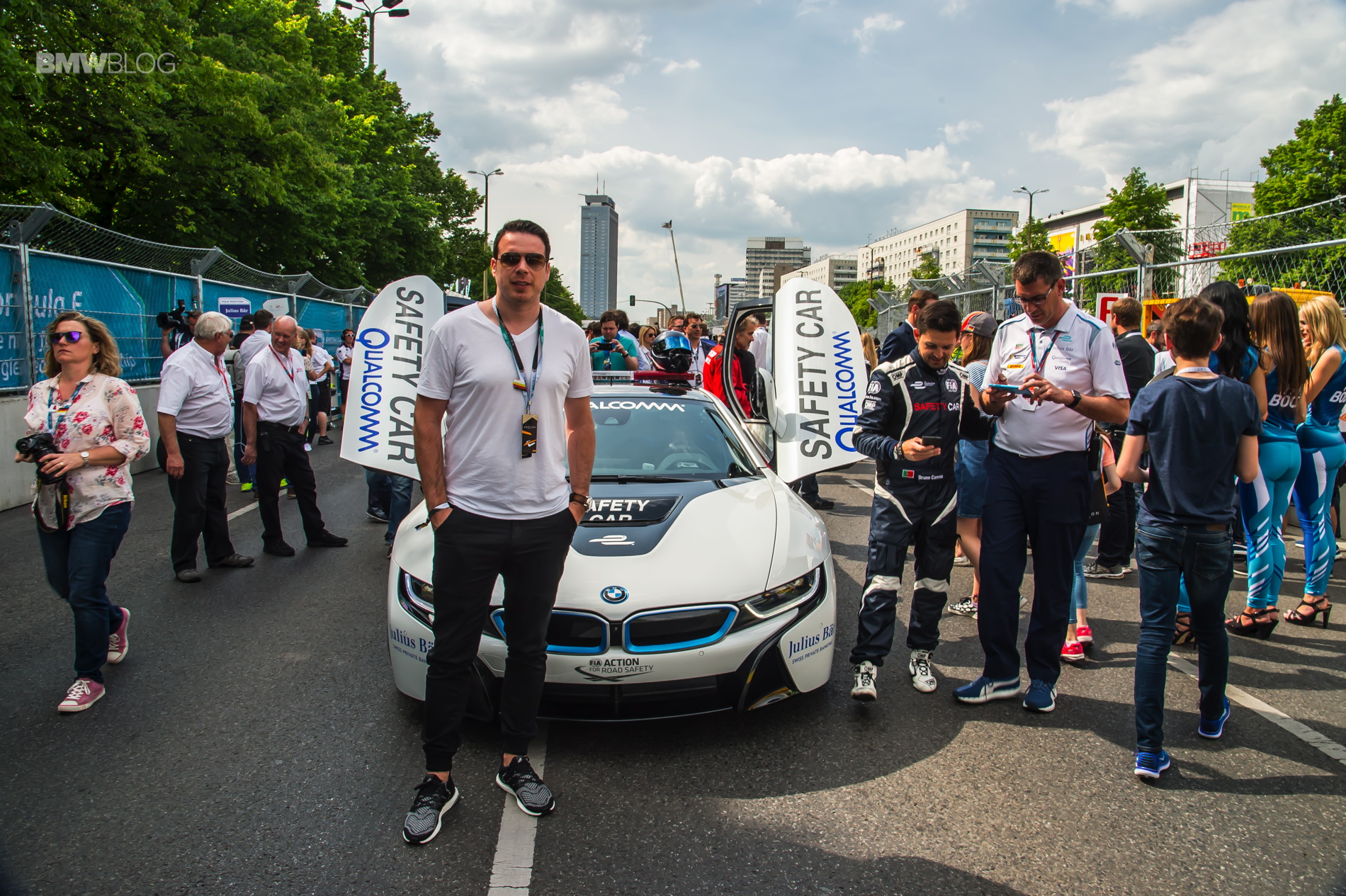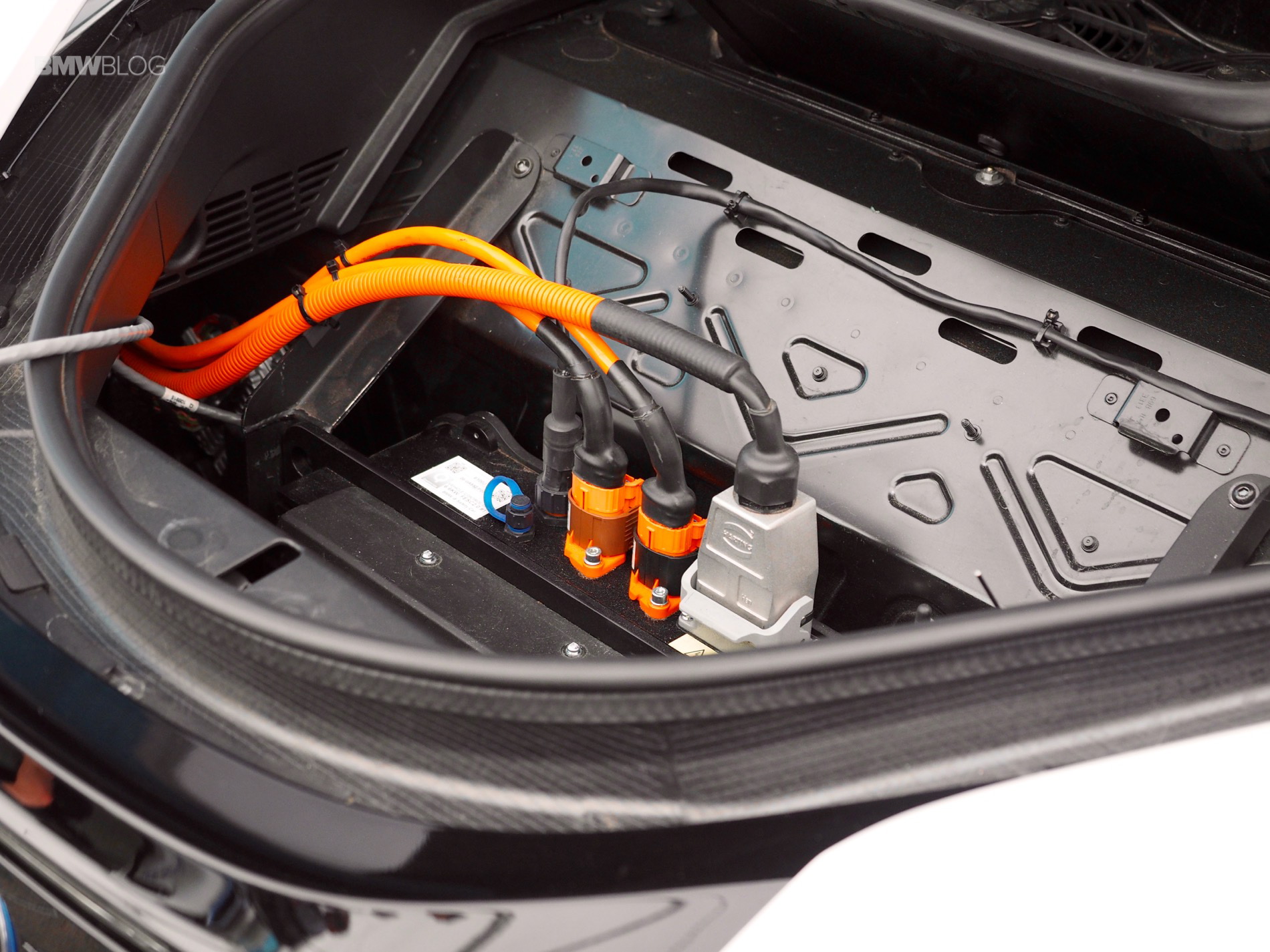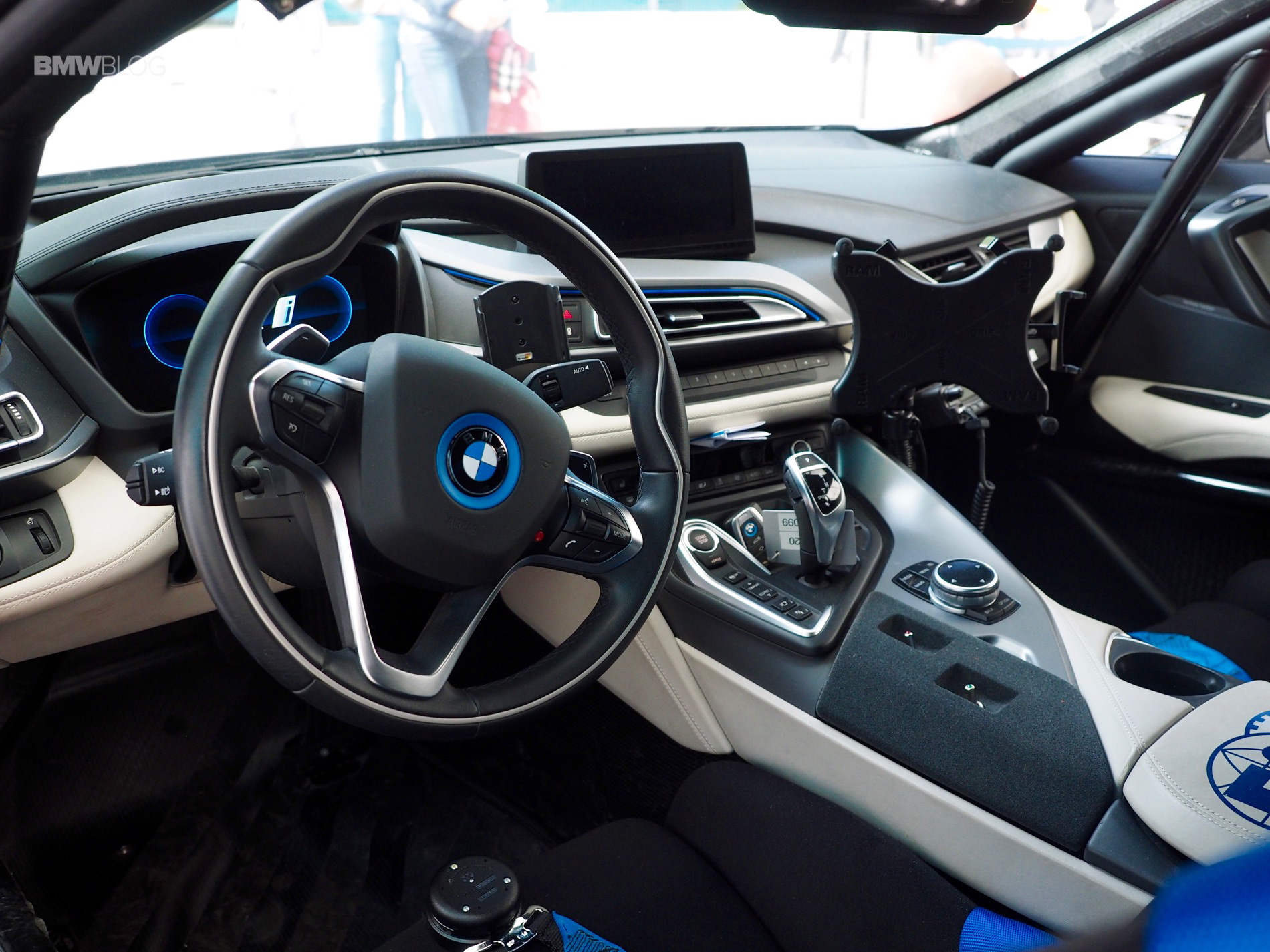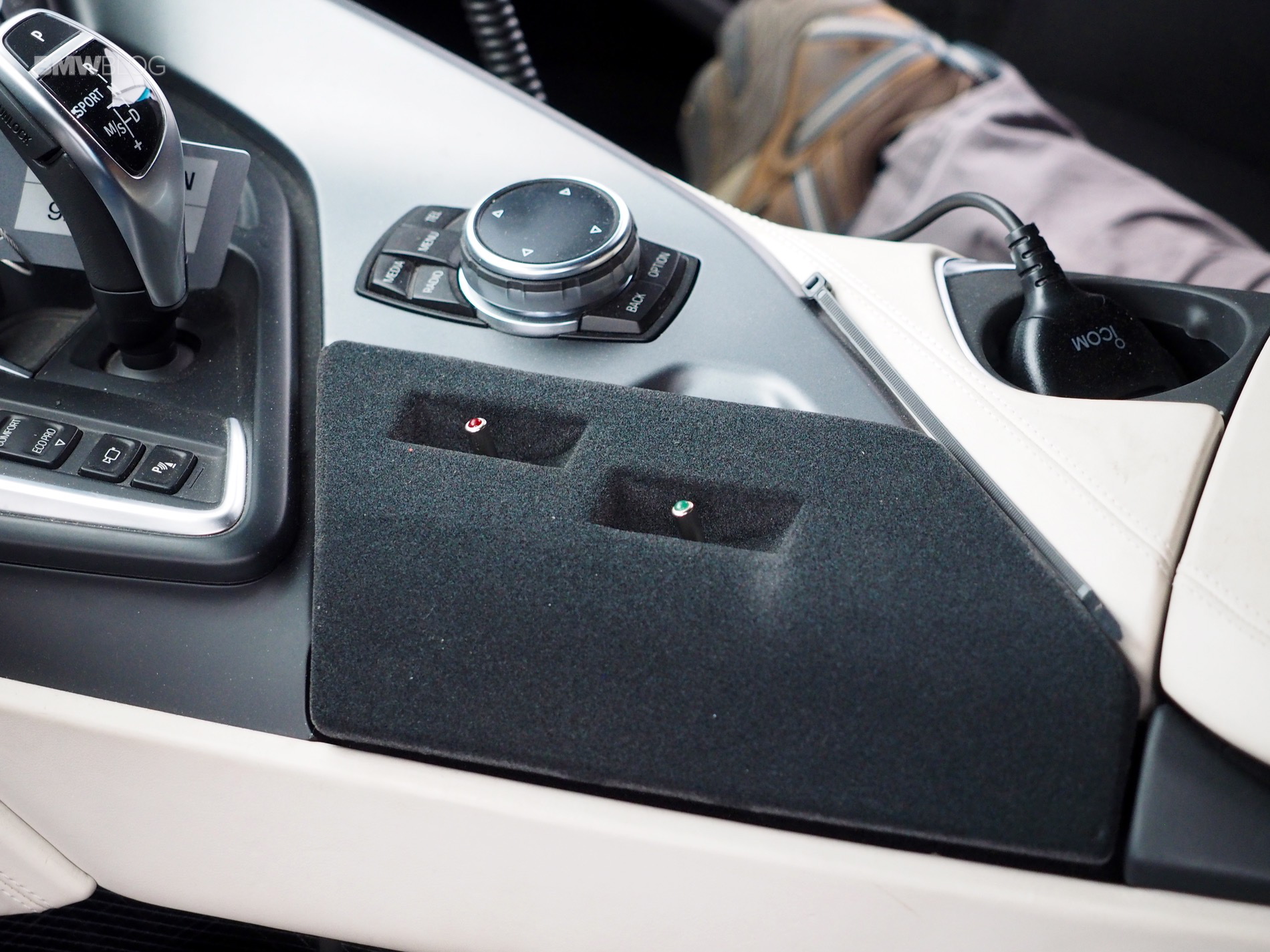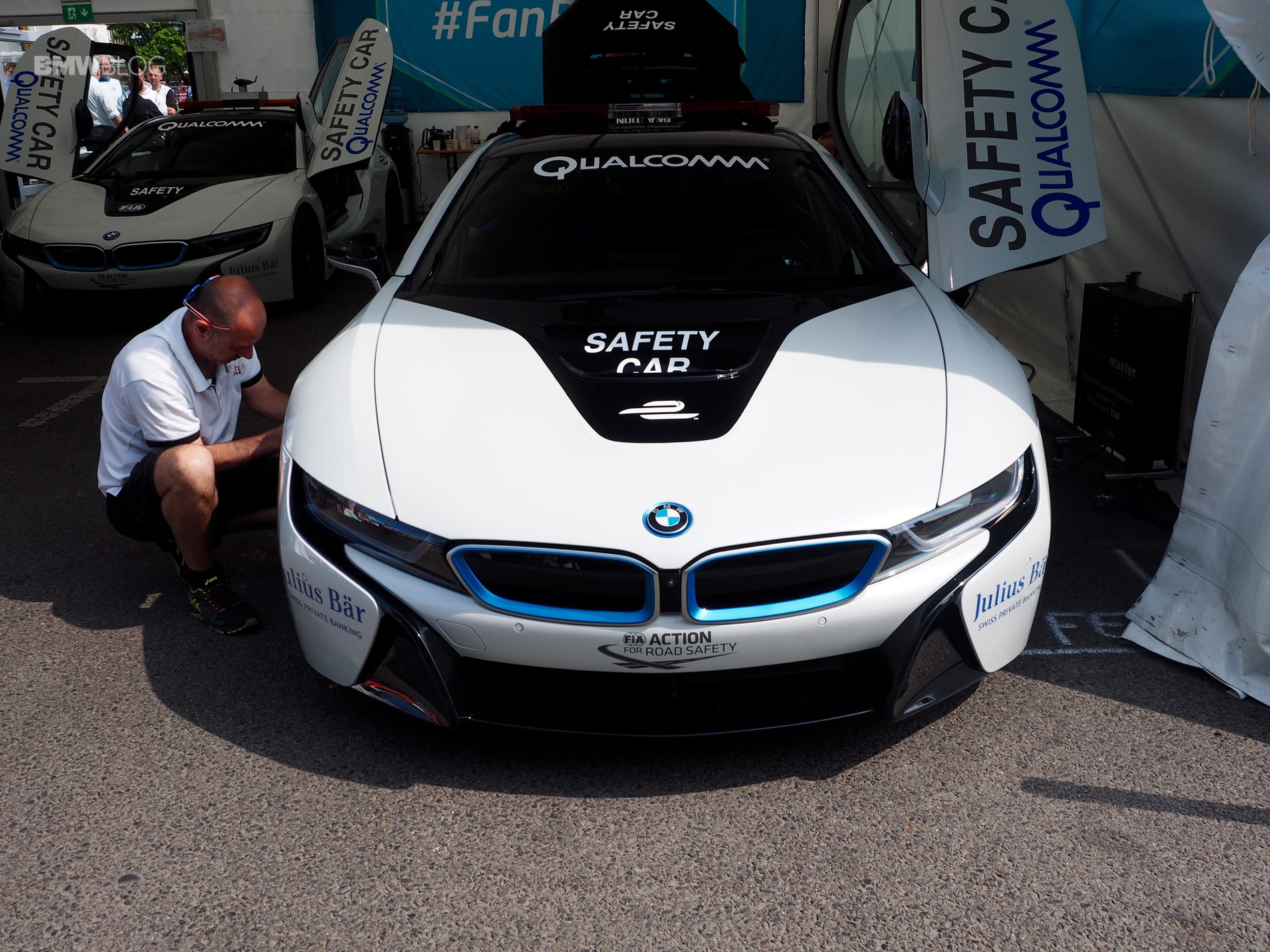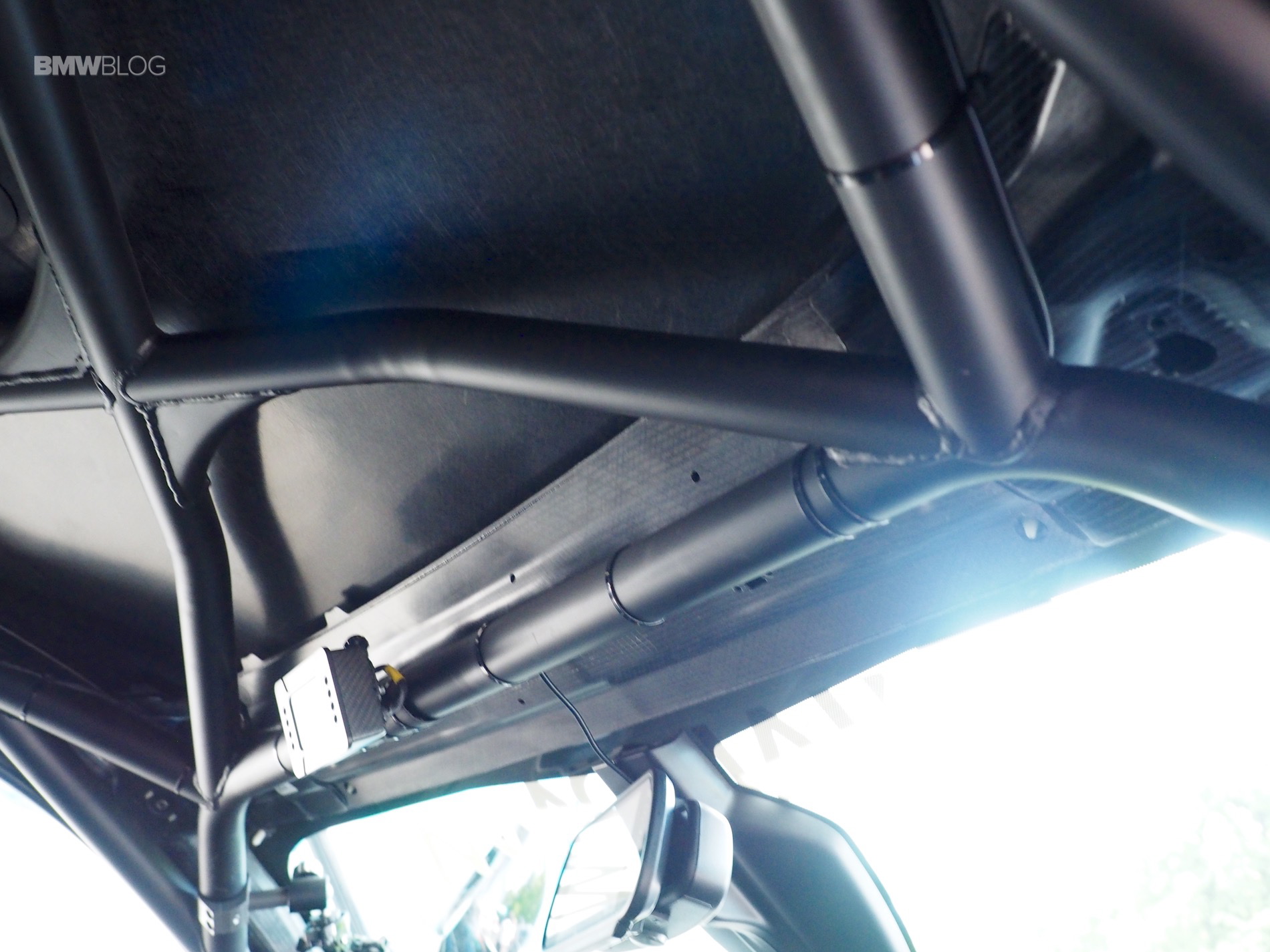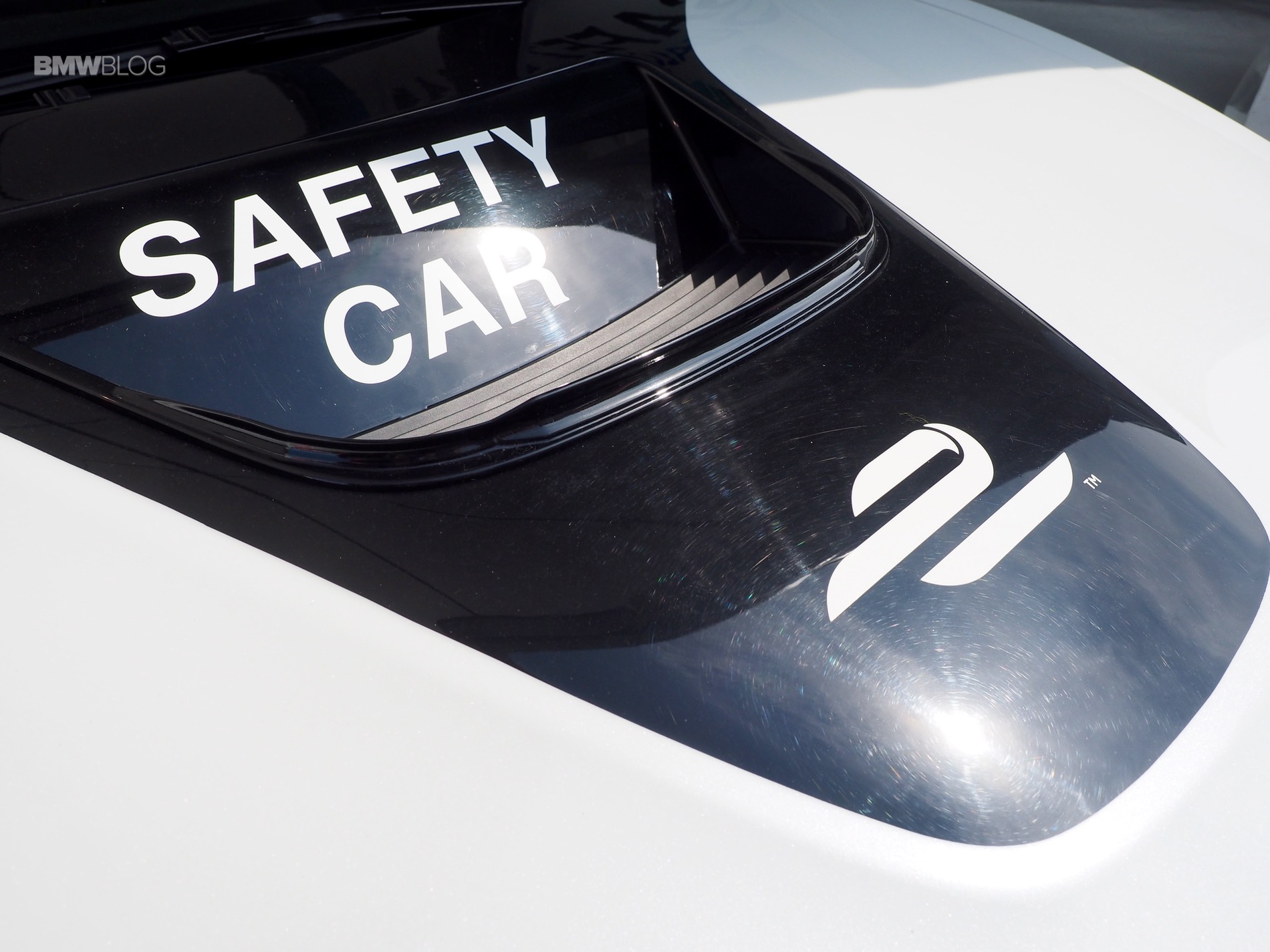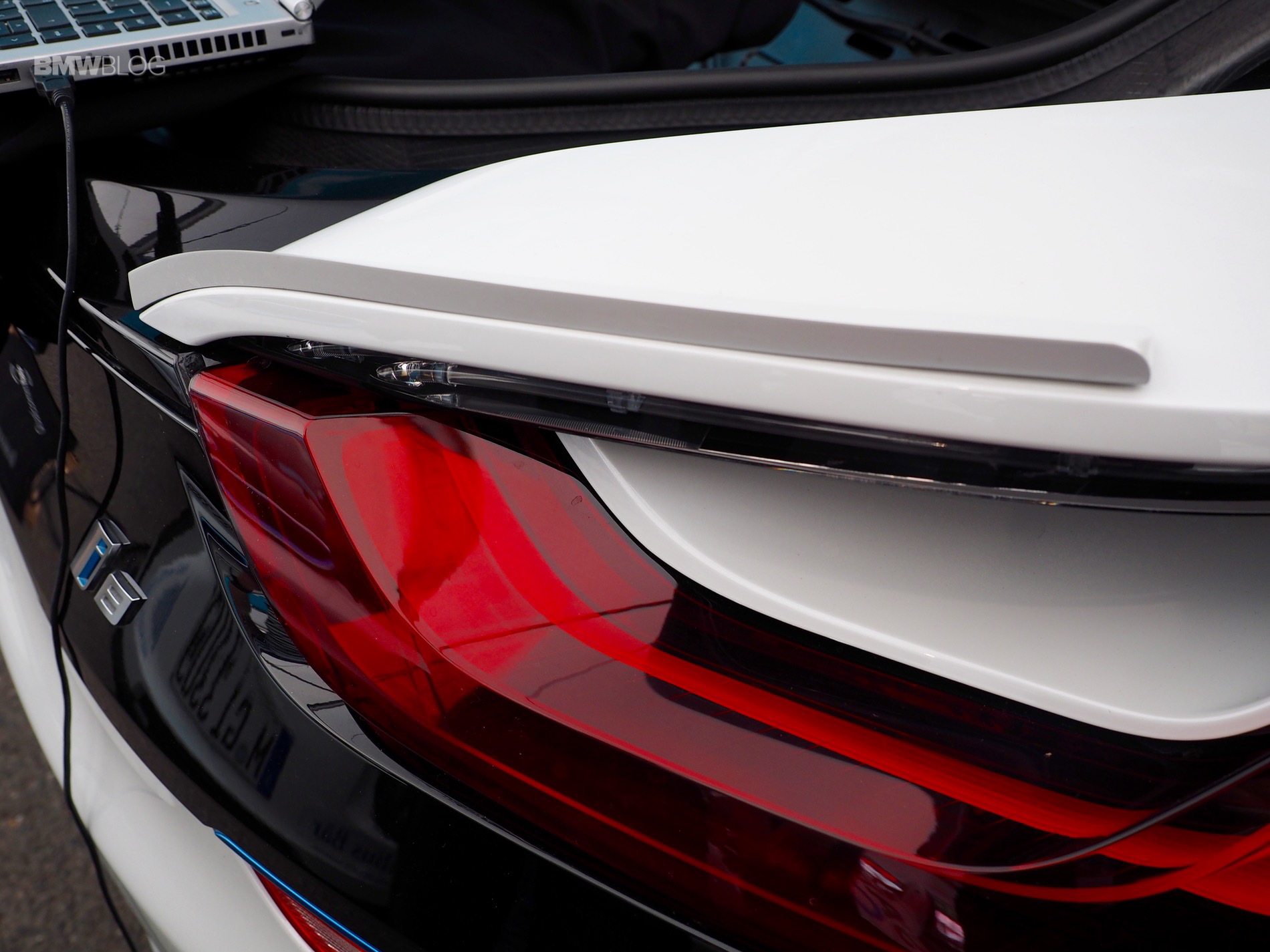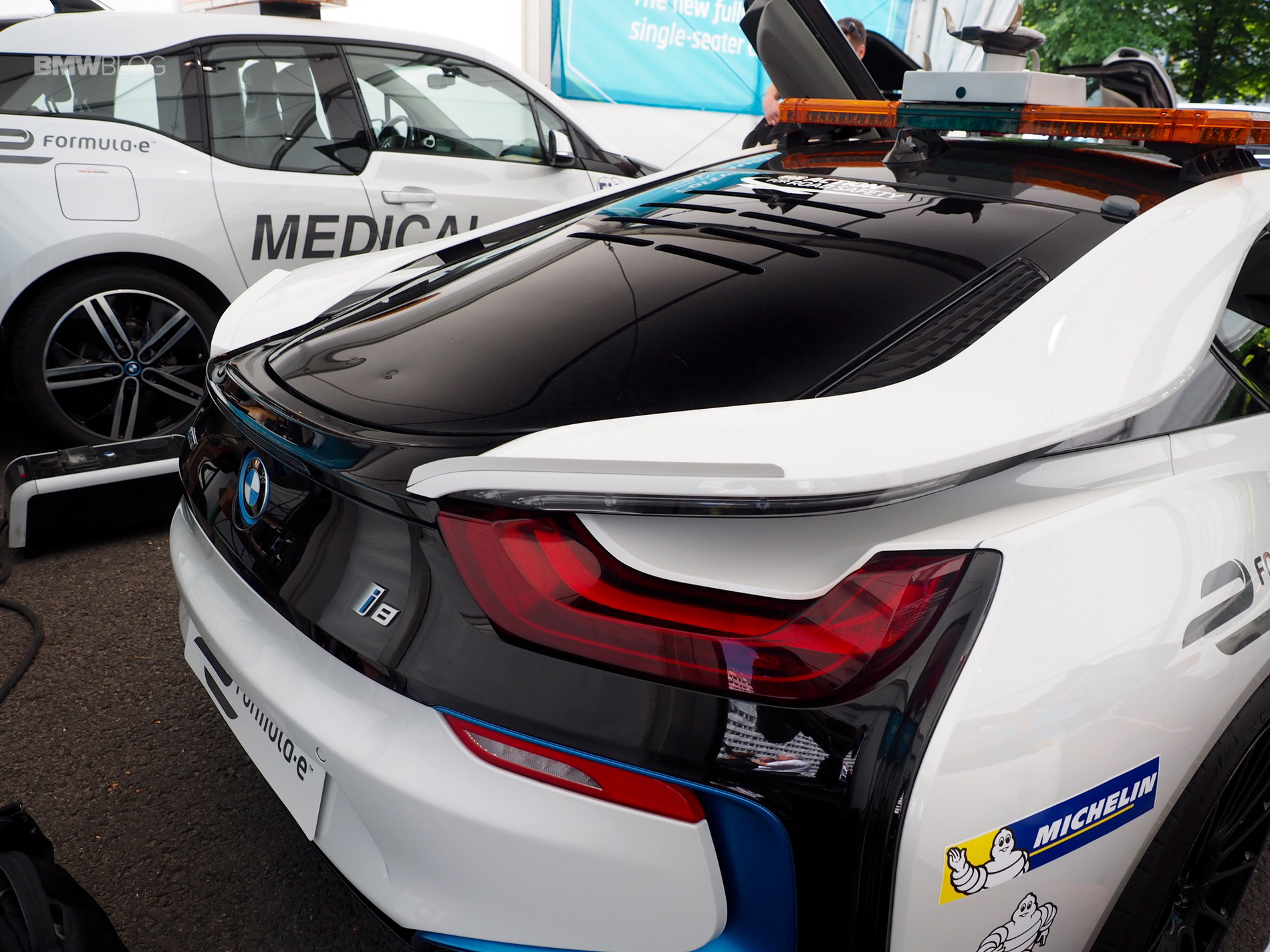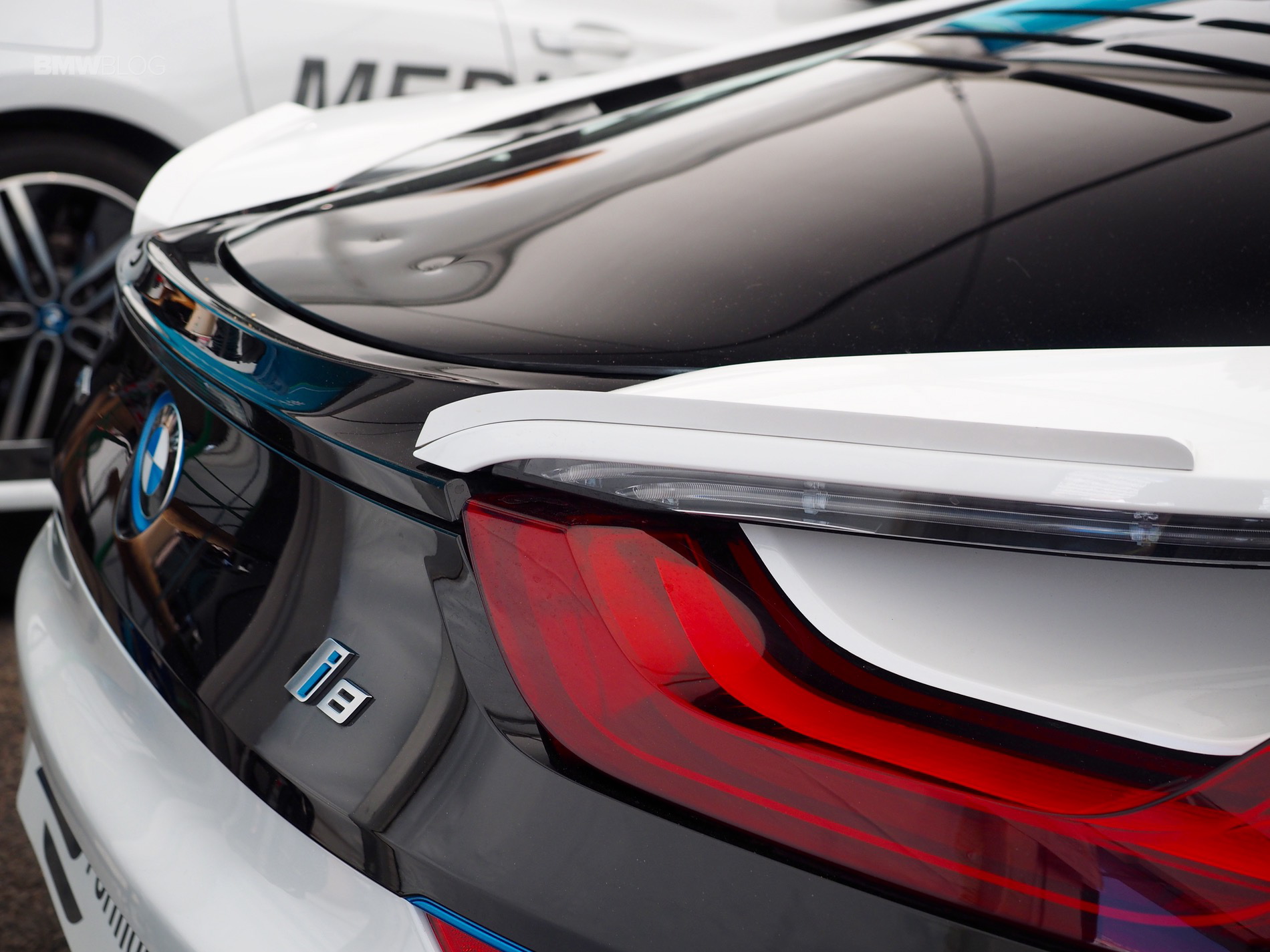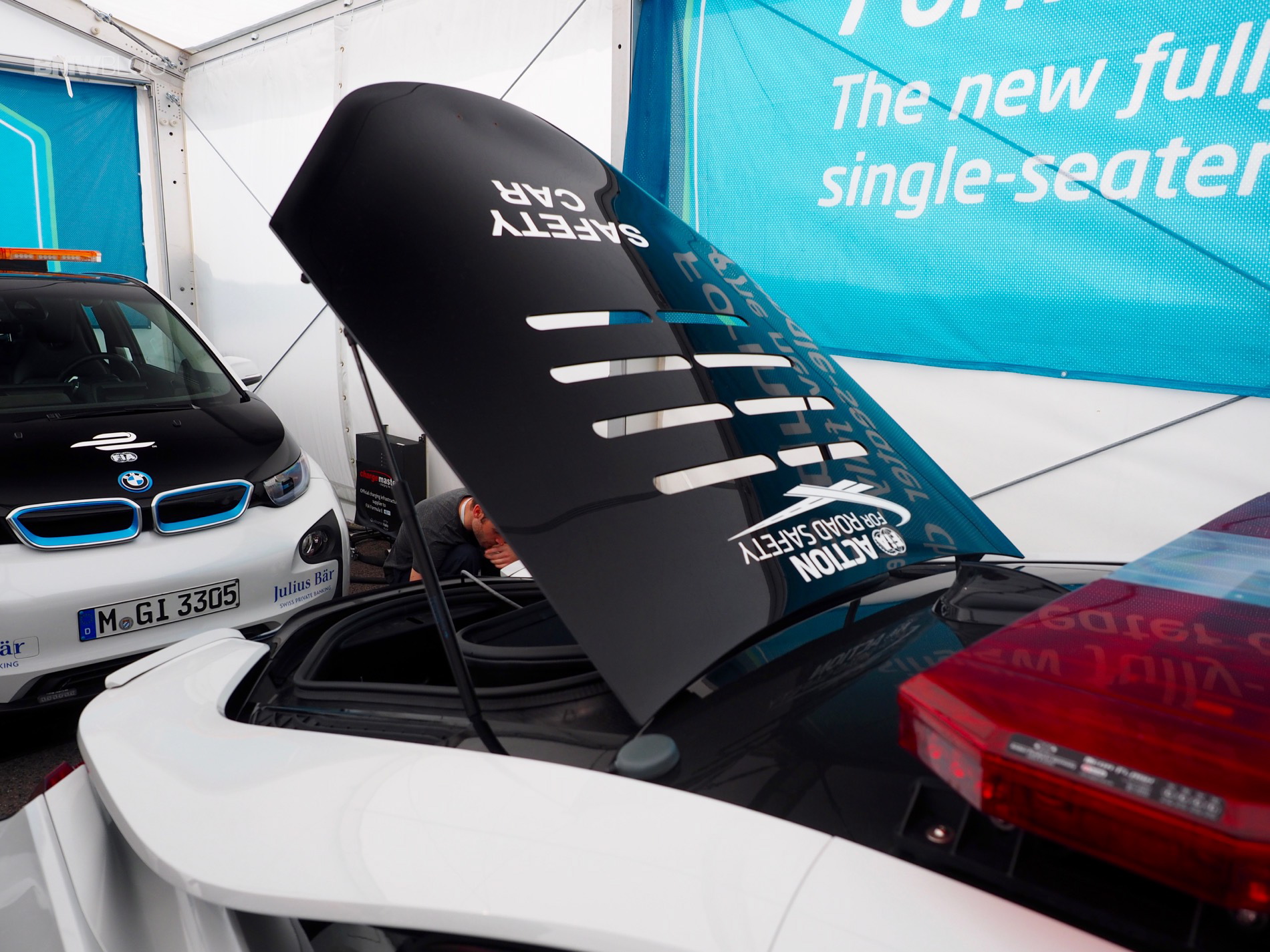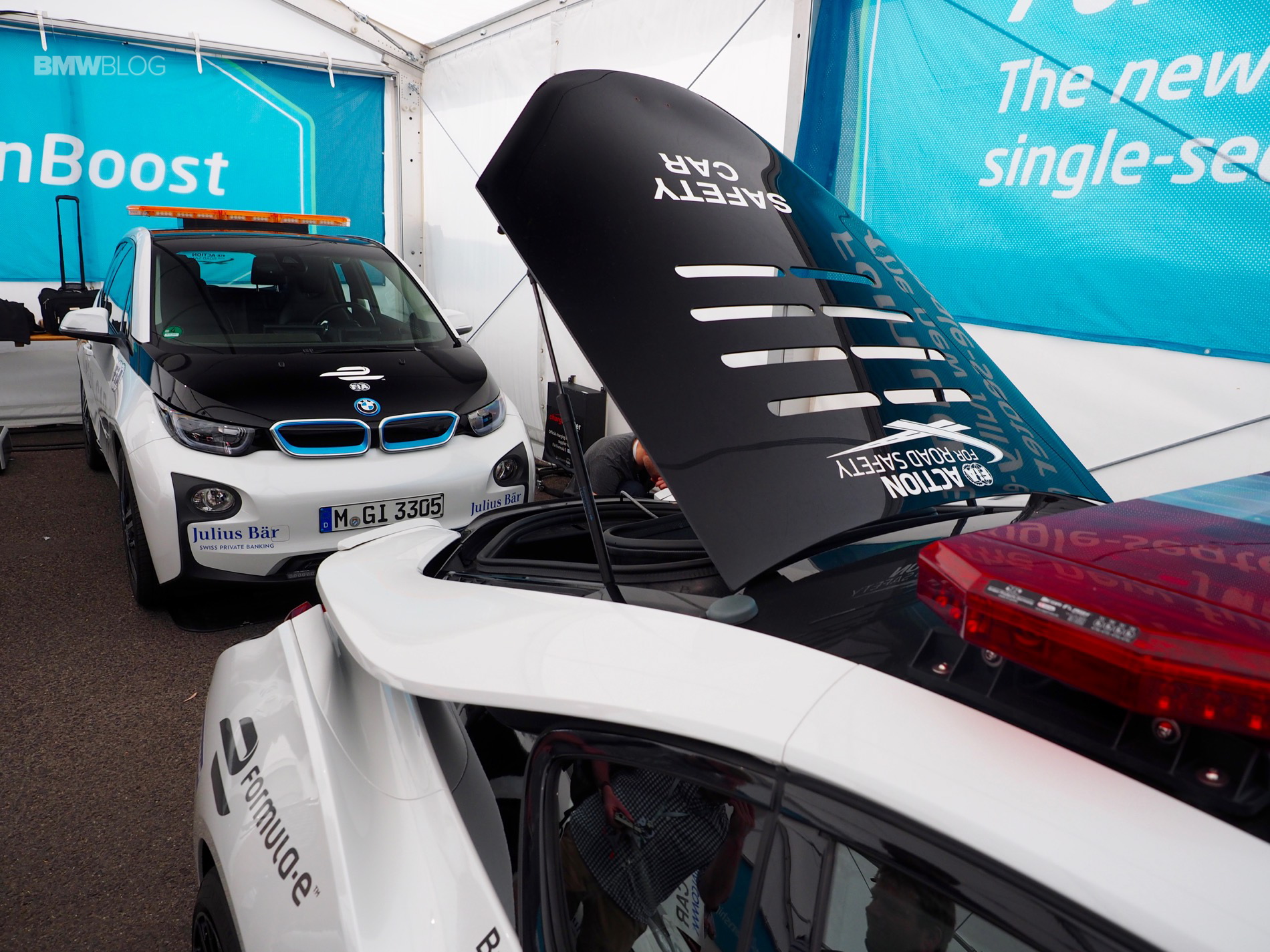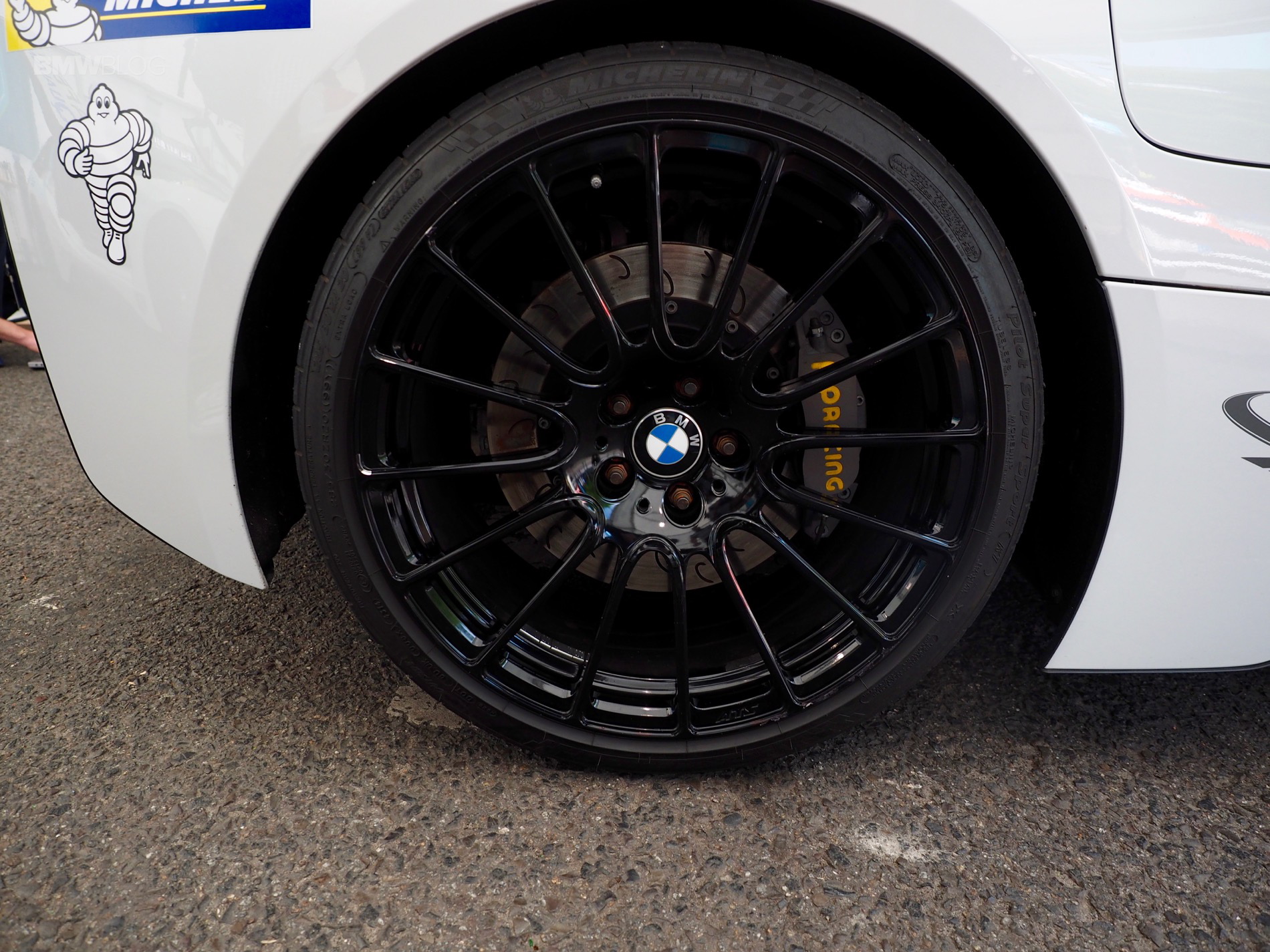In 2014, BMW i become the official vehicle partner for the 2014/2015 FIA Formula E championship. For this partnership, BMW has developed a couple of Safety Cars, one of which being a BMW i8. But it’s no standard BMW i8, as this one has been fettled a bit for Safety Car duty and is more powerful, lighter and stiffer than the standard car.
An updated version of the BMW i8 Safety Car arrived in 2015 with a tweaked suspension and numerous other enhancements over the road going edition. To fully experience the BMW i involvement in Formula E and to drive the safety car on the track, BMW invited me to Berlin for the Formula E ePrix.
Compared to other racing championships – and especially to Formula 1 – the amount of access anyone can get during the event is unparalleled. VIP tickets can be purchased and will include a pit walk to see the cars, chat with engineers and drivers, or observe the preparations of the BMW Safety Cars.. Others can meet the drivers in the eVillage for autograph sessions and compete in virtual eRaces against the race drivers.
My morning started with a tour offered by BMW spokesperson Manfred Poschenrieder who introduced me to the Formula E world and especially to the latest developments prototype developments. When it was unveiled last year, the new BMW i8 Safety Car was the world’s first vehicle in official use equipped for inductive charging with 7.2 kilowatts of power using Qualcomm Halo prototype technology.
BUILT FOR THE TRACK
Compared to the first generation i8 Safety Car, the improved i8 2.0 Safety Car gets a new approximately 10 kWh battery with a 26Ah li-ion cells similar to the BMW iPerformance models and a charging rate of 7.2 kW. To charge the car, the driver simply places the i8 over the charging pad which doesn’t even have to be perfectly aligned as the system has around 10 cm of allowance.
The system works by forming an electrical transformer from the induction coils in the charging pad and coils in the car. The resulting energy is what charges the battery. The “double-D coiling system in the i8 has enabled Qualcomm Halo to more than double its efficiency, enabling it to charge the i8 Safety Car’s roughly 10kWh battery to more than 80 percent in around one hour.
The total range is around 600 km (373 miles), and well above 40 kilometers (25 miles) on electric power.
But the i8 Safety Car not only gets a faster charging rate and higher electric range, its electric motor also receives an additional 15kW of power for a total of roughly 105 kW or more than 140 horsepower. The total power output for the i8 racing car is around 380 horsepower while torque is rated at more than 570 Nm (420 lb-ft).
For Safety Car duty, the i8 has gotten some chassis revisions, namely new upper wishbones, new Bilstein suspension and a 15 mm lower ride height. There’s also been some tweaked aerodynamics, new AP Racing brakes (six piston calipers up front with four pistons at the rear), 20” ATS Racing wheels, increased ventilation and lots of tire width (245/35 front, 285/30 rear).
Inside, it features carbon-fiber racing seats with a six-point safety belt. The center console is made out of carbon fiber and the interior trim and airbags have been completely removed. Even the insulation on the panels is gone. FIA regulations stipulate the use of LED lights and stroboscope light, along with the FIA radio equipment and transponder being integrated into the vehicle electronics.
On the outside, the i8 Safety Car gets a few more carbon fiber goodies. The trunk is also constructed from CFRP (carbon fiber reinforced plastics) with two spoilers glued to them for enhanced aerodynamics. Another spoiler sits on the hood, just below the vent providing additional air flow and drag efficiency.
So despite all these additions to the car – and in some cases removal of standard equipment – this Safety Car version of the BMW i8 weighs the same as the standard BMW i8, but it’s more aerodynamic and even stickier to the road than the standard car. The added weight after reducing massively before is due to the patented roll bar.
ON THE TRACK
The story wouldn’t complete without a few laps on the track which was setup in the heart of Berlin, in AlexanderPlatz. The idea was not to go full blast on the car, but rather see if I would notice any differences from the standard i8 – not a difficult task considering the extensive changes.
Getting in and out of the i8 Safety Car is a bit more difficult if you’re tall since the roll cage wraps around the seats and makes it harder to sneak your feet. Once behind the wheel, I buckled up with the racing-inspired seat belt and was ready to adjust my mirrors when I noticed the lack of rear view. With all the changes in the cabin, the rear view is blocked by the two massive vents in the rear and to compensate for that BMW installed an LCD monitor instead of the usual mirror. It takes a few seconds to get used to it, but it actually works quite well and provides a wider view of the traffic coming from the rear. the Safety Car driver make full use of the mirror camera to see the entire race behind him.
Certainly a solution that could appear in future production series cars.
To stay safe and within the very strict rules on the track, our speeds were limited to 50 – 60 kilometers per hour, not enough to draw a conclusion on speed and performance, yet there were a few things that stand out. The i8 Safety Car with all its chassis tweaks could be a competent racing car – either with an hybrid powertrain or all electric. The car follows your direction instantly and the heavy steering wheel reminded me of old school BMWs.
The high-performance brakes take a while to get used to it – they are grippy, powerful and confident – exactly what you’d expect from a race car.
With all the insulation gone from panels, the 1.5 liter three-cylinder sitting in the back is actually quite loud, which immediately put a smile on my face. It sounds just like a six-cylinder turbo, but without the Active Sound feeding through the cabin.
Two switches in the center console control the stroboscope light, but I wasn’t allowed to test those, despite hoping to feel cool for a second.
After a few laps, I retired the i8 Safety Car to the stands where a professional racing driver will take over before the free practice session would begin. And this is when I started to piece the things together.
Could BMW – or even better questions – will BMW build a high-performance car atop the i8? I asked BMW if it would make sense to build a fully electric version of the i8 as a safety car for the Formula E racing series, and while I haven’t received a straight up yes or not, the statement was – at least – promising.
“I cannot confirm plans for a future fully electric BMW i8 safety car,” said BMW spokesperson Manfred Poschenrieder. “Requirements on a safety car are very specific and performance oriented especially made for the race track. However, our engineers would be able to build such a prototype. We’ll see.”
But clearly the new technology will allow them to explore further the electro-mobility in a performance guise. The battery density is improving fast with less space/weight needed to store a decent amount of beyond 50kWh on board. The i8 Safety Car uses now BMW’s top power unit and the electric motor is constantly improving. What’s interesting is the overall package of the i8 which allows space for a larger battery package, along with the removal of the current 1.5 liter gasoline engine in favor of a one or two rear electric motors which will work together with the existing front electric unit.
So one can only hope that BMW i will continue to push the envelope and why not, deliver a high-performance fully electric i8 track car which one day could end up in production series.
The rumor around the stands is that BMW is assessing the opportunity to join Formula E as vehicle partners also in Season 3, but the company has refrained from confirming the rumors.
“I cannot confirm a final agreement on Season 3 yet, but of course we are in deep discussion about this,” said Poschenrieder. “Being the official vehicle partner of Formula E from the beginning, it totally makes sense to think about a future engagement. Core values of Formula E are a perfect match with BMW’s efforts on emission free driving technologies.”
On the contrary to other conventional racing series, Formula E can in fact be used as a „test area“ or „workbench“ for future electric technologies, and also for other cool tech such as Virtual Reality or autonomous driving. This also perfectly matches with future BMW values/digitalization efforts.
There you have it. BMW’s future is just as electric as it is digital, and that could translate into some exciting projects in the near future.


